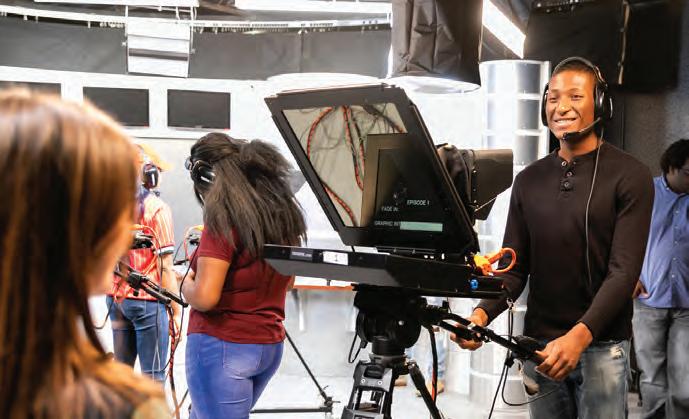Reaching Across The Color Line









have made this project possible. We salute you on the accomplishments over the last 10 years and look forward to what the future holds.
Thank you for bringing history to life for all of those who aspire to Dr. Mays’ philosophy and to all of those who will be inspired as they learn of his great legacy. We are proud to have been a partner in the relocation, stabilization and furnishing of this historic landmark.
The Self Family Foundation was established in 1942 and to date, has awarded over $70 million to nonprofit organizations primarily in Greenwood County , South Carolina.
120 Main Street Greenwood, SC 29646 | (864) 941-4011



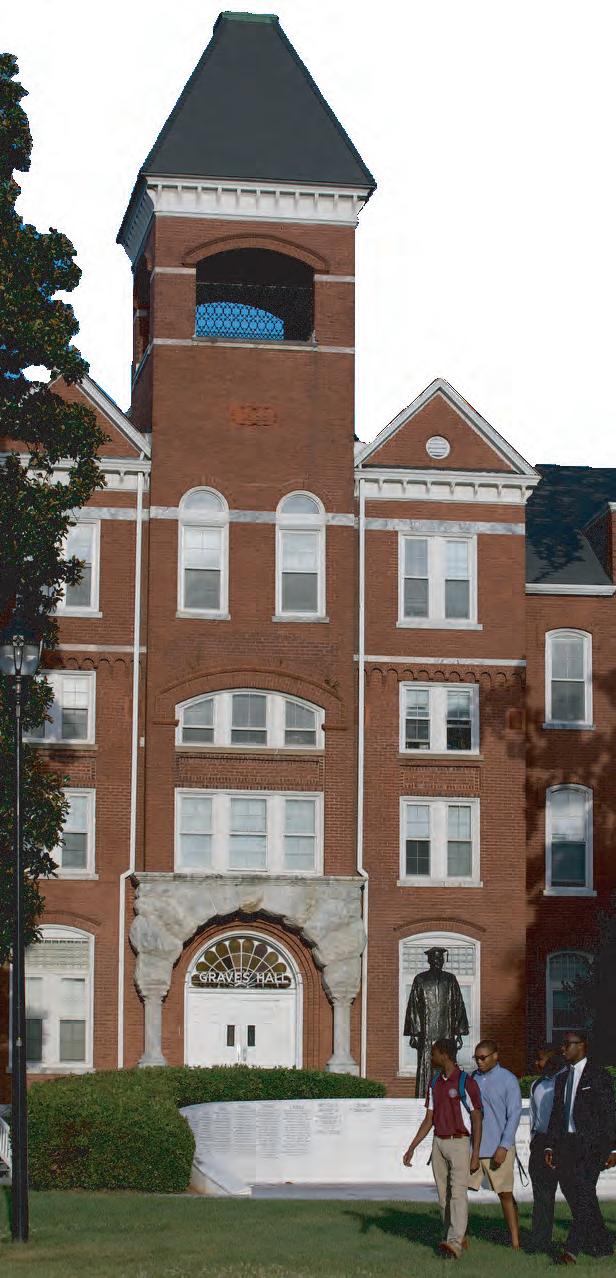
For more than a century, thousands of our graduates have made strides in industries ranging from ministry to medicine, from arts to athletics, living up to a world-recognized distinction: Morehouse Man. Morehouse College commemorates the life and lasting legacy of its sixth president, Dr. Benjamin Elijah Mays, for his leadership and contribution to local, national and global communities .
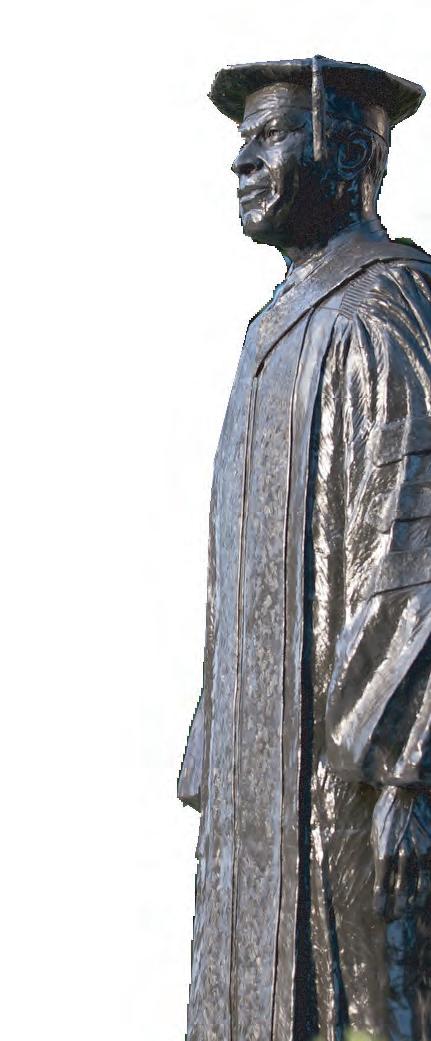
FIND WORK TO DO WHICH YOU BELIEVE IS TREMENDOUSLY WORTHWHILE; WORK SO IMPORTANT THAT YOU CAN GIVE EVERYTHING YOU HAVE TO IT. WORK, IN ORDER TO BE SATISFYING, MUST BE WORK THAT BENEFITS THE PEOPLE OF THE COMMUNITY AS WELL AS YOURSELF.
MAYS’

From humble beginnings in 1894 until it was moved to its current location in 2004.
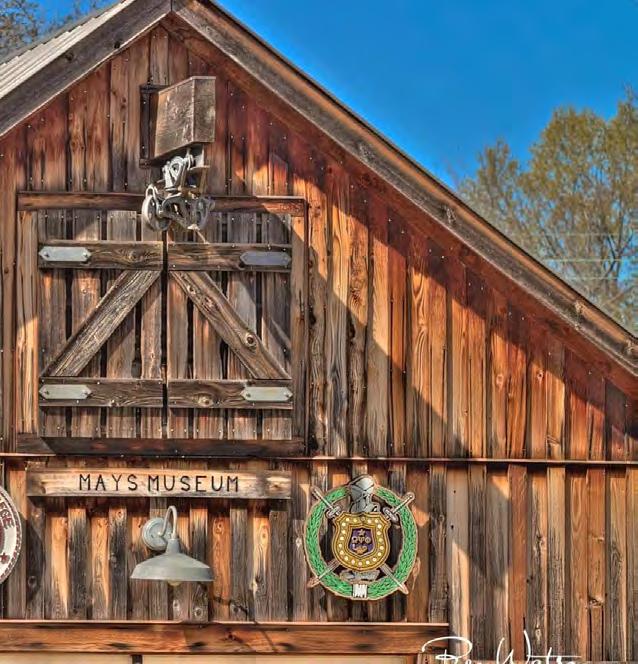
Greenwood County Hall of Fame
ALIGNING WITH THE GLEAMNS MISSION OF AIDING THOSE IN POVERTY, THE MAYS SITE SERVES AS A REFLECTION TO THOSE WHO SEEK ASSISTANCE FROM GLEAMNS THAT EDUCATION, DETERMINATION, AND HARD WORK ARE THE ESSENTIAL TOOLS FOR BREAKING THE WALLS OF POVERTY AND BUILDING THE LADDER TO SELF-SUFFICIENCY.

GLEAMNS Board of Commissioners
BETTY BOLES, Chair Public, Greenwood
WELBORN ADAMS, Private, Greenwood
MARY ETHEREDGE,, Public, Laurens
BERTHA RICE, Private, Laurens
JANICE ROBERSON, Low-Income, Laurens
LOUISE KEMP SETTLES, Secretary Public, Edgefield
MARCELLA EDWARDS, Private, Edgefield
DOROTHY RYANS, Low-Income, Edgefield
VACANT, Public, Abbeville
VACANT, Private, Abbeville
BERNICE MILLER, Low-Income, Abbeville
CHARLES JENNINGS, Treasurer Public, McCormick
VACANT, Private, McCormick
ANGELA GARRETT, Low-Income, McCormick
MAMIE SHIPPY, Public, Newberry
Omega Psi Phi Fraternity
CARLTON KINARD, Private, Newberry

TRAVIS REEDER, Low-Income, Newberry
Memorial of Rev. Dr. Dequincy Manvel Hentz
His life and success embodies the extraordinary power Dr. Mays possessed to influence the lives of young men
Schoolmaster of the Civil Rights Movement
Epworth native earned place in history
Honoring an individual who led an exemplary life and brought honor to the community 102
JACQUELINE RHINEHART, Public, Saluda
BETTY KENNER, Private, Saluda
JAMES COLEY, Low-Income, Saluda
RHONDA GARY, Policy Council Chair PC Liaison to Board
CHARITY MARTIN, MBA, Board Fiscal Advisor
Last of the Great School Masters
History had to take the flesh and form of a certain black man who was bold enough, wise enough and selfless enough to assume the awesome responsibility.
Dr. Mays was a lifelong proud and committed Omega Man. 114
The Rebel and the Humble Dr. Mays & Dr. Pinckney



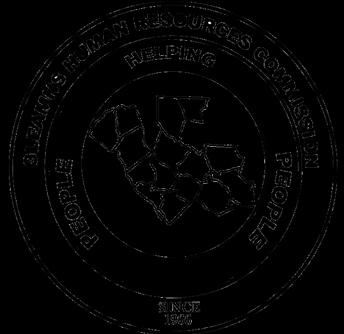
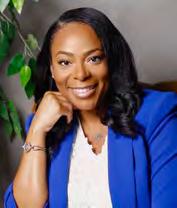
As the GLEAMNS Dr. Benjamin E. Mays Historical Preservation Site (Mays Site) celebrates its 10th Anniversary, on behalf of the GLEAMNS Board of Commis sioners and Staff, we take this opportunity to truly say thank you to all who helped us accomplish this magnificent feat.
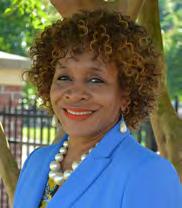
Many years ago, the Mays Site was but an idea…a remarkable idea, but an idea just the same. While at the dedication of the Mays Cross Roads in 1981, Dr. Mays was quoted saying “I wish someone could do something to save my house”. From there, the spark, of what is now a dedicated, historical preservation site to one of Greenwood County’s finest, was ignited. Ten years have brought upon magnificent changes to the Mays Site. From a single, wooden house in a field of grass, to a distinguishably-designed historical preservation site, consisting of Dr. Mays’ birth home, a symbolic one-room schoolhouse, and an interpretive museum charting the life and legacy of Dr. Mays. In addition to the buildings, the Mays Site provides a visual testimony to the agricultural significance of the tenant farming system that shaped the early years of Dr. Mays’ life and a driving force behind his desire for education and personal advancement. The addition of a seven-foot statute of Dr. Mays, looking southeast towards his homeland of Epworth, underscores the first ten years of the Mays Site.
As a community action agency, dedicated to aiding families lift themselves out of poverty and develop self-sufficiency, GLEAMNS is often asked why we took on the task of developing a historical preservation site for Dr. Mays. Our re sponse is simple: aligning with the GLEAMNS mission of aiding those in pov erty, the Mays Site serves as a reflection to those who seek assistance from GLEAMNS that education, determination, and hard work are the essential tools for breaking the walls of poverty and building the ladder to self-sufficiency. Dr. Mays said it best, “It is not your environment, it is you – the quality of your mind, the integrity of your soul, and the determination of your will that will decide your future and shape your life.” In this regard, the Mays Site is more than a reflection of Dr. Mays’ life, it serves as a reminder to many living in poverty of what can be accomplished through hard work and dedication, even in a blatant ly oppressive environment. We thank
for your support through these inaugural years. We implore your continued support of sharing the life and legacy of this remarkable man, and son of Greenwood County, for many, many more years to come. We look for ward to seeing you at the Mays Site!
I have just one minute, Only sixty seconds in it, Forced upon me—can’t refuse it, Didn’t seek it, didn’t choose it, But it’s up to me to use it. I must suffer if I lose it, Give account if I abuse it. Just a tiny little minute - But eternity is in it.

When the GLEAMNS Dr. Benjamin E. Mays Histori cal Preservation Site opened its doors more than a decade ago our goals were to focus on four things: Marketing and advertising, site maintenance, site expansion, and erecting a statue of Dr. Mays to serve as the centerpiece of the Site. All of these goals have been achieved in whole or in part.
Our vision for the GLEAMNS Dr. Benjamin E. Mays Historical Preservation Site was that of a vibrant center with a local, state, and national reputation for educating people about the extraordinary and legendary life of Dr. Benjamin E. Mays. The prima ry mission of the Mays Site is now to execute this vision. This mission of education and information is accomplished through three platforms: Living History, the Museum, and Research. This educa tion focuses on how a son of a former slave, who became a tenant farmer, summoned the inner will and drive to obtain an education in spite of his ear ly environment of poverty, Jim Crow segregation, racial discrimination and violence, and an unsup portive father. Two quotes of Dr. Mays come to mind as I reflect upon his life and the obstacles that he overcame, and the decade of obstacles that the historical preservation site bearing his name has overcome,
“It is not your environment, it is you- the quality of your mind, the integrity of your soul and the deter mination of your will that will decide your future and shape your life.”
“You are what you aspire to be, and not what you are now, you are what you do with your mind, and you are what you do with your youth.”
Tens of thousands of visitors have come to the Mays Site in the past decade. They have experi enced the life and legacy of Dr. Mays through our Living History, Museum, and through Research. Visitors experience 20th century American life with the replica of a 1900’s era tenant farm, the reality of late 20th century education when they enter the one-room Burns-Springs Schoolhouse, and gain a deep appreciation for the life of Dr. Ben jamin E. Mays by viewing the many photographs and accompanying wall narrative in the museum explaining key elements of his life. The Mays Site is also used by educators, students, and others to research the life of Dr. Benjamin E. Mays.
It has been my honor and privilege to serve as the director for the past five years. I am thankful for the outpouring of community, state, and nation al support that the Mays Site has received during my tenure here. I extend my heartfelt apprecia tion to Dr. Joseph Patten (former CEO of GLEAMNS Human Resource Commission) and Mr. Loy Sartin (former director of the Mays Site) for their vision and tireless commitment to the work of curating the Site. To Mrs. Betty Boles (GLEAMNS Board of Commissioners, Chair) and Mrs. Shunna Vance Jeter (GLEAMNS Chief Executive Officer) for their leadership and commitments that make it possible to perform the necessary work of the Mays Site. To the many community partners who have support ed the Mays Site for more than a decade.
As we continue the work of sharing the life and leg acy of Dr. Benjamin E. Mays we are mindful of his admonition concerning the stewardship of time. The poem, Life is Just A Minute, was often quoted by Dr. Mays as a reminder through recitation that eternity is in our usage of time.


Lord, that I might find favor in thy sight through the years to come as I continue my service as the Director of the GLEAMNS Dr. Benjamin E. Mays Historical Preservation Site.
In His Service,
So said Ambassador Andrew Young as he spoke at the dedication of the Benjamin E. Mays Historical Preservation Site in Greenwood, South Carolina on April 26, 2011.
DR. BENJAMIN ELIJAH MAYS, WHO WAS BORN IN 1894 TO FORMER SLAVES, was an adviser to Presidents, mentor of mentors like Dr. Martin Luther King, Jr., lauded preacher and scholar, advocate for social justice, and the president of Morehouse College from 1940 to 1967. He was a remarkable man and role model for thousands of stu dents who entered the doors of Morehouse, Spelman College, At lanta University, Clark and Morris Brown Colleges, and the Interde nominational Theological Seminary, the schools that constituted the broader Atlanta University Center of Black higher education.
Ramrod straight of posture, unwaveringly principled and caring, keenly intelligent and elegant in speech, Dr. Mays was one of the most important people to me during my college years at Spelman. Throughout my life he inspired me with a passion for excellence and service. The Mays Historical Site, which includes a museum, a 19th century one-room Black schoolhouse, and the simple log cabin that was Dr. Mays’s birthplace and childhood home, is a long overdue recognition of him by his native state, South Carolina.
One of Dr. Mays’s earliest childhood memories was of the armed White mob that came to his home during an 1898 riot and forced his father to bow before them at gunpoint. Eight other Black citi zens, including Dr. Mays’s cousin, were murdered. Dr. Mays under stood early on that the way to escape the violence, discrimination, and poverty of his rural Southern community would be through education. After graduating as valedictorian from the high school department of South Carolina State College at age 22, he went on to graduate with honors from Bates College in Maine. He went on to Atlanta, where he pastored Shiloh Baptist Church and was recruit ed to serve as a math instructor and debate coach at Morehouse.
After returning to school to earn a Ph.D. in Re ligion from the University of Chicago, Dr. Mays was appointed dean of the School of Religion at Howard University in 1934, and served there until assuming the presidency of More house.

I first met Dr. Mays in 1953 when I was thir teen years old and he came to stay at my house. Daddy had invited him to speak at our church, and because there were no hotels where Black visitors could stay in my South ern town, the pastor and parishioners always provided hospitality to strangers great and humble. Later, I heard and saw Dr. Mays and his beautiful wife Sadie often at Spelman or on Morehouse’s campus. Students were reg ularly invited to their house, and I was one of eight very lucky Spelman students privileged to sing with eight Morehouse students at Morehouse’s 9:00 a.m. Sunday morning chap el services in Sale Hall, where I heard Dr. Mays and other speakers from Morehouse and the outside world every week. Students lovingly imitated Dr. Mays’s words and mannerisms and hungrily internalized his unerring belief that we were God’s instruments for trans forming the world.
Of the six college presidents in the Atlanta University academic complex, Dr. Mays was
“IT STARTED HERE IN A LOG CABIN AND A COTTON PATCH. IF IT HADN’T BEEN FOR BENJAMIN MAYS, THERE PROBABLY WOULDN’T HAVE BEEN A MARTIN LUTHER KING.”FOUNDER AND PRESIDENT EMERITA CHILDREN’S DEFENSE FUND MARIAN WRIGHT
the one who we looked up to most. He inspired and taught us and stood by us when we challenged Atlan ta’s racial discrimination. Some of his teachings I wrote in my college diary. Others I internalized and, like many others who heard him frequently, I shared his words with others. I especially remember his oft-repeated “God’s Minute” from an anonymous sage:
I have just one minute Only sixty seconds in it, Forced upon me—can’t refuse it Didn’t seek it, didn’t choose it, But it’s up to me to use it.

I must suffer if I lose it, Give account if I abuse it.
Just a tiny little minuteBut eternity is in it.
Dr. Mays also warned “the tragedy of life is often not in our failure, but rather in our complacency; not in our doing too much, but rather in our doing too little; not in our living above our ability, but rather in our living below our capacities.” When Morehouse College bade Dr. King farewell after his assassination at a service on the grassy rectangle connecting Atlanta University with Morehouse, where I stood with thousands of oth ers who had marched behind his simple mule-driven cortege, Dr. Mays movingly saluted his former student, fellow freedom fighter, and servant of God with Ralph Waldo Emerson’s words: “See how the masses of men worry themselves into nameless graves, while here and there a great unselfish soul forgets himself into immortality.”
How many high school and college students today are urged to follow intrinsic values rather than extrin sic success? Dr. Mays was a great unselfish soul who through the countless young people he inspired lives on. I am grateful a new generation will now be able to visit his childhood home and learn about Dr. Benjamin E. Mays’s life and legacy.
Marian Wright Edelman is an activist for children’s rights, and the founder and president emerita of the Children’s Defense Fund (CDF).
Original published on https://www.childrensdefense.org/child-watch-columns/ health/2011/remembering-dr-benjamin-e-mayss-legacy/, June 3, 2011
“Ramrod straight of posture, unwaveringly principled and caring, keenly intelligent and elegant in speech, Dr. Mays was one of the most important people to me during my college years at Spelman. Throughout my life he inspired me with a passion for excellence and service.”


The Children’s Defense Fund Leave No Child Behind® mission is to ensure every child a Healthy Start, a Head Start, a Fair Start, a Safe Start and a Moral Start in life and successful passage to adulthood with the help of caring families and communities.


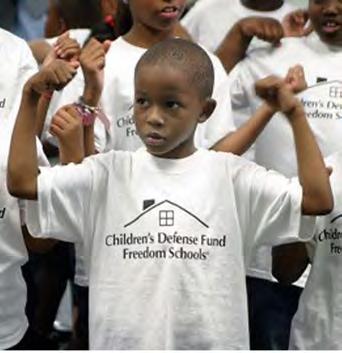
For more than 40 years, the Children’s Defense Fund has been fiercely independent and unwavering in our defense against any attack on children. We continue to work every day, at every level and on behalf of every child to improve their lives right now and for generations to come.

Greenwood is forever indebted to Dr. Benjamin E. Mays for his countless contributions to the progress of mankind. We are fortunate to be able to showcase his life and contributions at the Dr. Benjamin E. Mays Historic Preservation Site under the direction of Christopher Thomas.
Visionaries and scholars like Christopher Thomas and Loy Sartin have developed the site into a living, breathing teaching forum for Greenwood residents and visitors alike.


 Brandon Smith
Brandon Smith
“Greenwood

With its annual Governor’s Awards in the Humanities, the Board of South Carolina Humanities has long recognized established leaders who have made enormous contributions to the state and nation in educational, cultural, and community-building roles. In 2018, SC Humanities has established a new award to be presented at the Governor’s Awards in the Humanities luncheon and ceremony in October. The Fresh Voices in the Humanities Award has recognized individuals who are working in unique and innovative ways to use culture and history to bring people together, but whose efforts have gone relatively unnoticed beyond their own community. The 2021 recipients of the Fresh Voices in the Humanities Awards are Dr. Lydia Brandt, Associate Professor of architecture, American art, and theories and methods of historic preservation at the University of South Carolina; Tamara Herring, Executive Director of the Morris Center for Lowcountry Heritage; The Rev. Christopher B. Thomas, Director of the Benjamin E. Mays Historical Preservation Site; and Dr. Kasie Whitener, novelist, business owner, and instructor at the University of South Carolina.


Lucas McMillan, Lander University dean of the college of behavioral and social sciences, nominated Thomas. In his nomination letter, McMillan cites Thomas’ efforts to provide innovative programming and advocacy for people of all ages to learn about Mays, renewing “attention to this important figure in S.C. history.”

“Chris is a humble man and prefers co-teaching or panel discussions, but it is always clear that he is a gifted storyteller and a fountain of knowledge about Dr. Mays,” McMillan wrote in an email to the IndexJournal.
Alice Taylor-Colbert of Greenwood joined McMillan in submitting a letter of support for Thomas’ nomination. Taylor-Colbert, a consultant and retired history professor and dean, said Thomas has been a presenter for a series at Lander University on race and identity, which was funded by South Carolina Humanities.
Taylor-Colbert is also a development and special initiatives officer for South Carolina Humanities.
“He (Christopher Thomas) has studied Dr. Mays so thoroughly and provided such insight,” Taylor-Colbert said of that dialogue series. “... His ability to work with students of all ages is very, very important. As an educator, he’s going to have an impact on the Greenwood community for many, many years.”









The site had its earliest beginnings with the acquisition of Dr. Benjamin E. Mays’ birth home in 2004 when it was moved from its original location on US-178 in the Epworth Community.



THE HOME HAD BEEN ON SOUTH CAROLINA’S LIST OF MOST ENDANGERED AFRICANAMERICAN STRUCTURES.
The family who owned the home refused to release it. They were using it as a barn for hay storage and it was beginning to deteriorate badly. In 2002 a meeting was held in Greenwood to discuss acquisition of the home. It included Dr. Larry Jackson, president of Land er University; Dr. Joseph Patton, CEO of GLEAMNS; Mr. Frank Wideman, president of the Self Family Founda tion; County Councilman, Mr. Gonza Bryant; Mr. Steve Brown, City Manager; and Mr. Kenneth Driggers and Ms. Jennifer Satterthwaite of the S.C. Palmetto Con servation Foundation. After the meeting, Mrs. Griffith was approached and she agreed to sell the home for $4,000 and required that it be moved.
For context, this culminated a more than twenty- year effort to secure the home which began in November 1981 at the Mays Crossroads Dedication in Epworth. During the dedication, Dr. Mays visited his home a few feet away with Congressman William Jennings Bryan Dorn and Dr. Larry Jackson of Lander Universi
ty and assured them that the home was indeed his birth place. (Seven years prior to this event in the summer of 1974 during the filming of Born to Rebel, Dr. Mays is seen standing in front of the home declaring that “this is where I first saw the light of the day, just before the turn of the century.”)
It was at the Mays Crossroads Dedication that Dr. Mays’ confided to his secretary, Mrs. Sally Warner, that “he wished that his birth home could be saved.”
In late 2004, Dr. Mays’ birth home was moved to vacant land on the GLEAMNS campus at the insistence of Dr. Pat ton because of the historical nature and meaning of the campus to African Americans in Greenwood. The campus encompasses the old Brewer School which was founded in 1872 as the Brewer Industrial Normal School for Colored. It served as a black high school as far back as the 1920’s up until integration around 1971 at which time the school was converted to a Greenwood District 50 middle school. The campus also encompasses the old Brewer Hospital for blacks during segregation as well as the building which housed the black nurses. The Brewer Lab trained about seventy-five percent of the black nurses in South Carolina.
Around 2005, the Burns Spring School was donated to
the Benjamin E. Mays Historic Site and the Mays Museum (the barn) was built around 2006. Around this time the sidewalks were poured and a wrought iron fence and electronic access gate were placed around the site property. However, the school, museum, and birth home sat empty until 2010. In the fall of 2009 Mr. Loy Sartin, who had retired from a 29-year Air Force career and a 11-year career with Greenwood School District 50, met with Dr. Joe Patton and volunteered to set up the historic site.
During the 13- month period from March 2010 – April 2011, Mr. Sartin worked relentlessly and tirelessly to completely set up the site which included furnishing the birth home, schoolhouse, and the Mays Museum. In addition, he planted the first garden and cotton field as well as planted three oak trees, shrubs around the house and school, and set up the yard with a wash pot and tubs for clean ing clothes. He also built a well from very old lumber and a cedar post clothesline. On April 26, 2011, the Benjamin E. Mays Historic Site was dedicated. A stage and tent were set up in the parking lot and the dedication ceremony drew over 1000 people from across the nation. Television and radio stations descended on the site to record the magnificent event. The More house Glee Club Quartet provided music while the speakers, among others, included Dr. Mays’ last niece, Mrs. Bernice Mays Perkins of Cleve land, OH; Dr. Samuel Dubois Cook who eulogized Dr. Mays on Mar 31, 1984; and Keynote Speaker, Ambassador Andrew Young of Atlanta, GA.

After the dedication, Dr. Joseph Patton contin ued to provide outstanding direction for the Mays Historic Site until his retirement in 2016. Mr. Sartin continued to serve the Site as a volun teer and eventually as a paid director. Up until his retirement in 2017, he conducted hundreds of tours annually and gave an untold number of Mays Site presentations at schools, universities and churches in South Carolina and Georgia. He continues to serve voluntarily giving tours when needed, maintaining the flower beds, and plant ing/maintaining the annual garden and educa tional cotton field.

The GLEAMNS Human Resources Commission, Inc. Board of Commissioners wishes to express eternal gratitude and appreciation to the major sponsors for the development of the GLEAMNS Dr. Benjamin E. Mays Historical Preservation Site, dedicated on April 26, 2011. This serves as a thank you to the dedication, hard work, and generosity of those responsible for this most worthy endeavor. It is the Site’s mission to perpetuate the enormous legacy of the legendary Dr. Benjamin Elijah Mays who was born and reared in Greenwood and went out into the world to make an everlasting impact upon humanity. Furthermore, it is our earnest desire that this Site will serve as a place of understanding, knowledge, and inspiration for all who enter.
Joseph D. Patton, III, Lh.D CEO, GLEAMNS Human Resources Commission, Inc.
Loy Sartin
Curator/Director, GLEAMNS Dr. Benjamin E. Mays Historical Preservation Site

Their unbridled foresight, dedication and determination were instrumental in making the Mays Historic Site a reality. Without their superb leadership and perseverance, the Site could not have been established.
Honorable Gresham Barrett - U.S. Congressman
Honorable William Jennings Bryan Dorn - U.S. Congressman
Ms. Carrie Dumas - Close Friend of Dr. Benjamin E. Mays Mr. Ken Driggers - S.C. Palmetto Conservation Foundation
Honorable John Drummond - S.C. State Senator Dr. Larry Jackson - President Emeritus, Lander University
Mr. Charles Lesley, Carpenter Honorable Floyd Nicholson - S.C. State Senator Honorable Billy O’Dell - S.C. State Representative Honorable Anne Parks - S.C. State Representative Mrs. Bernice Mays Perkins - Dr. Benjamin E. Mays’ Niece
Honorable Gene Pinson - S.C. State Representative Honorable Mike Pitts - S.C. State Representative
Rev. Dwight Powell - Dr. Benjamin E. Mays’ Great Nephew Ms. Jennifer Satterthwaite - S.C. Palmetto Conservation Foundation Mrs. Sally J. Warner - Dr. Benjamin E. Mays’ Secretary
Mr. Frank J. Wideman, III - President, Self Family Foundation Brewer High School Alumni Association Capsugel Corporation Countybank
First Citizens Bank Greenwood City Council Honorable Floyd Nicholson - Mayor, 1994 - 2008 Mr. Steve Brown - City Manager, 1985 - 2009
Mr. Charlie Barrineau - Asst. City Manager, 2000 - 2009, City Manager, 2009 - Present Greenwood County Council Mr. Gonza Bryant - Chairman, 2003 - 2004 Mt. Olive Baptist Church - Greenwood, S.C. Self Family Foundation South Carolina Palmetto Conservation Foundation South Carolina State Legislature
In addition to the above, there were many others who contributed labor, resources, valuable objects, and historic photographs to make the GLEAMNS Dr. Benjamin E. Mays Historical Preservation Site a place that lives and breathes with the rich, humble spirit of the legendary Dr. Benjamin Elijah Mays. To them, we are also indebted.
The GLEAMNS Human Resources Commission, Inc. Board of Commissioners wishes to express sincere appreciation and gratitude to the major sponsors for the procurement of the bronze statue of Dr. Benjamin E. Mays to honor him in the county of his birth, Greenwood, S.C. The statue stands as a permanent memorial to Dr. Mays’ remarkable life of integrity, determination, courage, and commitment to racial harmony and reconciliation. This serves as a thank you to the major sponsors for their generosity which made this worthy endeavor a reality. Space does not permit listing the multitude of people who gave lesser amounts. This does not, however, diminish our heartfelt thanks and appreciation to them as well.
LEGACY SPONSOR - $50,000 + Baseball Great, Mr. Henry “Hank” & Billye Suber Aaron Very Dear Friends of Dr. Mays
PLATINUM SPONSORS - $10,000 + City of Greenwood Dr. Clinton E. and Mrs. Sally J. Warner Very Dear Friends and Secretary to Dr. Mays The Mighty 6 District of Omega Psi Phi Fraternity, Inc. (North & South Carolina)
GOLD SPONSORS - $5,000 + Dr. Benjamin E. Mays’ Family:
Dr. Ralph Allsopp & Dr. Marshalyn Yeargin-Allsopp
Timothy & Deleana Allsopp
Gabriel Allsopp Graceon Allsopp
Nasya Davis
Mary Lee Berkley
Luther R. Black
Janice Blocker
Boyd Family Bernard & Jeanette Boykins
Burgess Family
Margarie & Ronald Gibbs Shirley L. Gibbs
Family of Arsenia Mays Grair Hall Family
Kevin and Whitney Allsopp Jackson
Isabel Mays Jackson
Dennis James
Elayne Gibbs Jones
Kory & Becky Miller and Family
Larry and Majorie Miller
Morton Family Cleola Norman Brian & Tremeeka Norman Bernice Mays Perkins and Family
Rev. Dwight (Jerry) & Terri Powell and Family
Family of James H. Ruff, Sr. Michael W. and Ann Smith Beverly A. Moore
Michael W. Smith, Jr. Michelle E. Smith
Terrance A. & Lisa A. Smith
Javon M. Smith Hopkins Amber D. Smith Roberts
Sandra L. Smith Pounds
Thomas J. Syrkett, Jr. Fannie M. Turner
Tawana Wimbish
Grady & Patricia Yeargin
Loy E. Sartin - First Curator/Director of Mays Historic Site (2010 - 2016)
Kenneth W. Baldwin, Jr. Bates College Capsugel Corporation
Dr. Samuel Dubois Cook, Eulogist for Dr. Mays Ed Patton Enterprises
Dr. James A. Franklin, Sr. S.C. State Senator Floyd & Mrs. Mamie Nicholson
In Memory of S.C. State Senator Clementa Pinckney
Old Mt. Zion Baptist Church
Epworth Community
Dr. Mays’ Home Church
Mt. Olive Baptist Church Greenwood, S.C.
S.C. Governor Richard W. Riley Barry Weston
Mr. and Mrs. Frank J. Wideman, III
BRONZE SPONSORS - $500 +
Brewer High School Class of 1955
Delta Sigma Theta Sorority, Inc. Greenwood, S.C. Alumnae Chapter
S.C. State Senator John W. Drummond
Epsilon Gamma Gamma Chapter, Greenwood, S.C.
Omega Psi Phi Fraternity, Inc. Epsilon Psi Zeta Chapter Greenwood, S.C.
Zeta Phi Beta Sorority, Inc. Mr. Willie & Felecia Forrest Dr. George C. Grant
Morehouse College ‘61 Mrs. Anne J. Gunby Mrs. Suzy Holloway in Memory of Emanuel 9 Rev. Dr. Willie S. Harrison Dr. Timothy B. Hunter
Iota Upsilon Omega Chapter Greenwood, S.C.
Alpha Kappa Alpha Sorority, Inc.
Dr. Larry & Mrs. Barbara Jackson Geneva B. Johnson
Benjamin E. Mays High School Alumni Pacolet, S.C.
Sadie G. Mays Health and Rehabilitation Center
Atlanta, GA
Rev. Furman & Mrs. Janette Miller Dr. Robert C. Moore
Drs. Joseph D. & Josephine Patton Byron W. Smith & Rev. Thessa G. Smith
Pastor
Mays United Methodist Church Ninety Six, S.C.
Dr. James H. & Mrs. Glenda Smith
Pastor Chris & Mrs. Latisha Thomas
Dr. Stuart & Mrs. Angela Tinkler
Wal-Mart Supercenter, Bypass 72 NW Greenwood, S.C.
Dr. Curtis L. Williams
Morehouse College ‘61
Valerie Ackiss and McKinney Family
Mary Kay Addy
William Anderson & Kathryn Delaney Dr. George Amonitte
Patrick Bagley
Mrs. Martha Barnette R. Bartley
Dr. Fred C. Bassett
Judge Donnie & Dr.Jean Blackley Mrs. Thelma Boozer & Family Bradford-Brewer-Chenault Family Reunion
BRAG Bike Club of Atlanta, GA
Brewer High School Class of 1966
Brewer High School Class of 1967 Dr. Vernon & Georganne Burton in Memory of Emanuel 9
Betty Calhoun
Carnation Garden Club
President Jimmy Carter Elizabeth R. Cathcart
Cokesbury Family Reunion Club
Dean Family Club
Donaldson Properties L. Edward
Susan Farrar
First Presbyterian Church Greenwood, S.C. S. Green
Green Thumb Garden Club Edgefield, S.C.
Greenville Newcomers’ Club
Greenwood County Family and Community Leaders
James Henry Gilbert & Belinda Hicks Dr. Alice Hodges in Memory of Emanuel 9 Dr. Bettie Rose Horne
Juanita Hozey - Praise Unlimited Mrs. Joyce Hyde Dr. Darrell Johnson in Memory of Emanuel 9
Terry & Edwina Wyatt-Knowles
Lander University
Rev. Dr. Stephen L. Love
Main St. Methodist Men’s Group Greenwood, S.C.
Carol Mauldin
Mays United Methodist Church Ninety-Six, S.C.
McCormick County School District McCormick, S.C. Rev. J.P. Neal
Phyllis Nolan Mr. Willie Fred Norman
Northside Middle SchoolGreenwood, S.C.
Palladian Study Club
Dr. Albert & Sandra Payne Mr. J. David Patterson
Jean Roberts
Dr. John H. Roper, Sr. Virginia Rothrock L. Scott
June Shaw
Mary Silva & Larry Rodgers
Michael Smith
Smith Family Reunion
St. Paul United Methodist Church Ninety-Six, S.C.
Vivian Tatum
Debra Norman Trapp

Rachel & Robert Turner
Trinity United Methodist Church Greenwood, S.C.
Thomas Vance
Dwight & Linda Vogel
Mrs. Patricia E. Watts
Rev. Dr. Danny Webb, Pastor of Dr. Mays’ Home Church Old Mt. Zion Baptist Tim Woolston Lee Vartanian Witherspoon Family Reunion
After a furious twelve months of curating the birth home, museum, schoolhouse, and yard, the time arrived for the grand dedication.

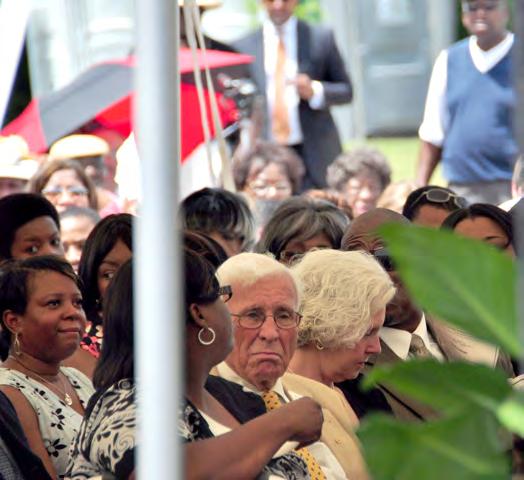
AFTER METICULOUS EVENT PLANNING, THE HISTORIC SITE CAME ALIVE THE MORNING OF APRIL 26, 2011 WITH THE ARRIVAL OF THE FIRST GUESTS.
Ladies in period dress stood on the porch of Dr. Benja min E. Mays’ birth home anticipating early visitors who wanted to get a sneak tour of the house that had been on the list of the eleven most endangered S.C. African Amer ican structures for over twenty years. Excitement was on the faces of people as they peaked into the “barn” which had been rapidly and painstakingly transformed from a building with bare walls into a first-class museum – the only museum in the U.S. dedicated to the renowned and legendary president of Morehouse College. Many of Dr. Mays’ family members entered the gate with anticipation, eager to visit their uncle’s birth home for the very first time! Dr. Mays’ secretary, Mrs. Sally Warner of Atlanta, was breathless at the beauty of the site, the Zoysia grass having turned green and the newly planted oak trees and shrubs sporting their light green, beautiful spring leaves. As hundreds of visitors filled the large tent on the black

top, 11:00 AM finally arrived and the much-anticipat ed program began as the overflow crowd of over 1000 crowded around the tent, eager to listen to this truly his toric event. Welcoming remarks were made by Dr. Joseph D. Patton III, CEO of GLEAMNS; Mayor Welborn Adams; and county councilman, Honorable Gonza Bryant. After the prayer of dedication by Rev. Dr. Willie S. Harrison and scripture reading by Rev. Danny Webb, pastor of Dr. Mays’ home church – Old Mt. Zion Baptist of Epworth, Mr. Stacey Robinson, former member of the Morehouse Glee Club, thrilled the crowd as he beautifully sang one of Dr. Mays’ favorite songs: The Impossible Dream. Afterwards, Loy Sartin, Curator/Director of the Site, introduced the Mays family who were seated up close to the stage.
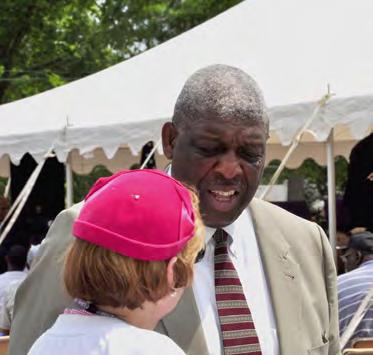
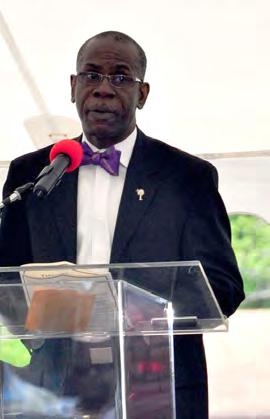
Among the special speakers were Dr. Robert Franklin, President of Morehouse College; Dr. Samuel Dubois Cook who was Dr. Mays’ eulogist, President Emeritus of Dillard University, and classmate of Martin Luther King, Jr.; Mrs. Billye Aaron, wife of baseball great Hank Aaron; Mrs. Bernice Mays Perkins, Dr. Mays’ 81 year- old (at the time) niece; Dr. Elaine Tuttle Hansen, President of Bates College; Dr. Johnnie McFadden, Professor of the Benja min E. Mays Academy at USC, Columbia, SC; Dr. Daniel Ball, President of Lander University; Dr. Larry Jackson, President Emeritus, Lander University; and Honorable Floyd Nicholson, Senator, SC Senate, 10th District. The truly remarkable Keynote Address was delivered, without notes, by Ambassador Andrew Young who spoke about 30 minutes, enlightening the crowd about the extraordinary life of Dr. Benjamin Elijah Mays which began in Greenwood County on August 1, 1894.

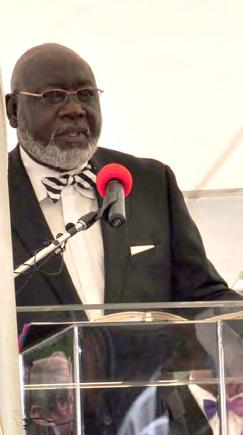



Special music was provided throughout the program by the Morehouse College Glee Club Quartet. After the ded ication, which lasted about three hours, the benediction was given by Rev. Alvin Deal. As the program adjourned and visitors began to stroll around the site, a soft rain ensued, gently cooling the very hot, muggy April day. Television and radio stations were on site to cover one of Greenwood’s most historic events.
HOURS PASSED BEFORE THE LAST VISITORS FINALLY DEPARTED THE SITE, FULL OF PRIDE THAT GREENWOOD HAD AT LONG LAST ESTABLISHED A MUSEUM AND HISTORIC SITE TO HONOR ITS MOST INFLUENTIAL AND DISTINGUISHED CITIZEN SINCE ITS FOUNDING IN 1897.
SENATOR NICHOLSON DR ROBERT FRANKLIN HON. GONZA BRYANT STACEY ROBINSON CLAUDE THOMAS REV. DR. WILLIE HARRISON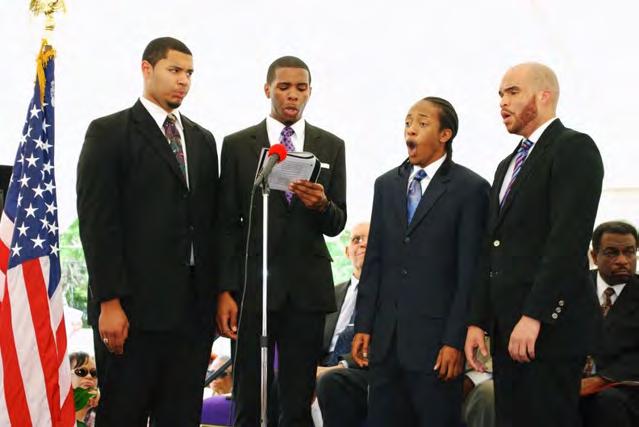

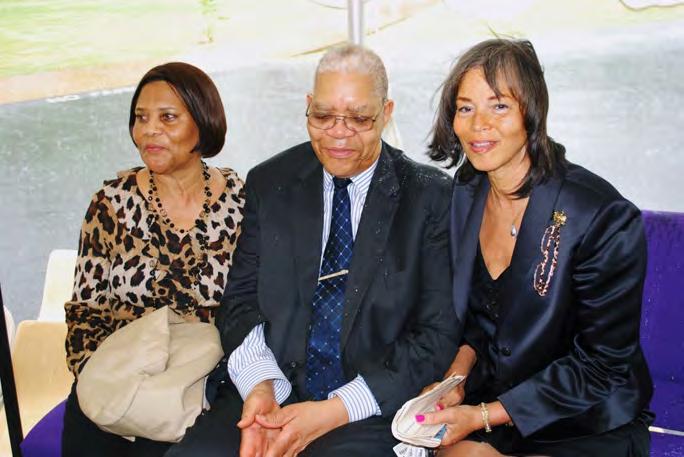


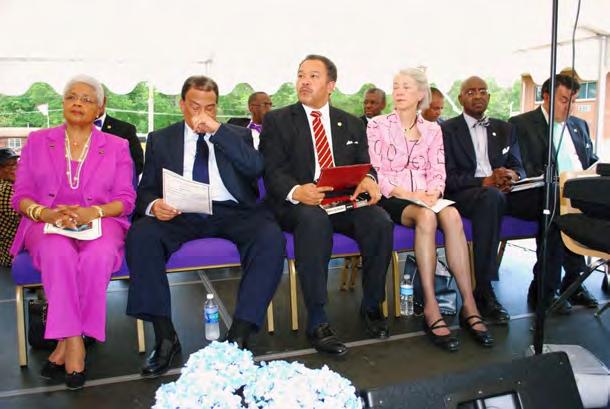




for the GLEAMNS Dr. Benjamin E. Mays
Historical Preservation Site is that of a vibrant center with a local, state, and national reputation for educating people about the extraordinary and legendary life of Dr. Benjamin E. Mays.
The Mays Historic Site is dedicated to perpetuating and preserving the enormous legacy of one of the giants of the American 20th Century, Dr. Benjamin E. Mays — the legendary president of Morehouse College for 27 years, a trusted advisor to 3 US presidents, and mentor/eulogist to the Rev Dr. Martin Luther King, Jr. The Site operates solely with generous donations and grants. However, the Site often finds itself with very little to operate and maintain the Site.
Dr. Benjamin E. Mays Historical Preservation Site
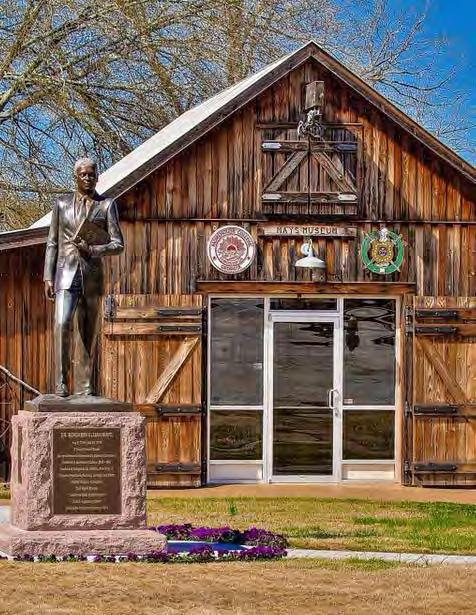
in 2004. We have the original Burns Spring School from the Epworth area that is iden tical to the Brickhouse School that Dr. Mays attended as a child. We also have The Barn that serves as modern museum.




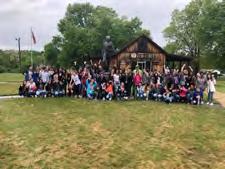



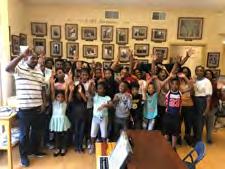



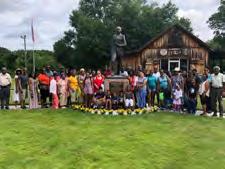
THE MUSEUM CAPTURES DR. MAYS’ LIFE IN OVER 100 PROFESSIONALLY FRAMED PHO TOS AND CONTAINS MANY OF HIS PERSONAL ITEMS. THE MUSEUM CONTAINS A THEATRE THAT SEATS FIFTY-FIVE AND IS EQUIPPED WITH TV/DVD SYSTEM THAT ALLOWS VISITORS TO THE SITE TO HEAR AND SEE FILMS, SPEECHES AND SERMONS BY AND ABOUT DR. MAYS AND HIS EXTRAORDINARY LIFE.
The centerpiece of the Site is a seven foot bronze statue of Dr. Mays that sits on a four foot gran ite base. The beautifully landscaped grounds are a warm and inviting site to behold. The flowers, cotton field, and garden set the stage for visitors to experience a small piece of ground reminiscent of the childhood of this iconic Civil Rights leader.
Visitors to the Mays Site receive a guided tour that typically lasts more than an hour. The tours are conducted by our director, our curator, or one of our trained and knowledgeable volunteer staff. During our ten years in operation tens of thou sands of visitors have visited the Mays Site. School groups, family reunions, Class reunions, youth groups, sports teams, civic organizations, church es and other religious organization, senior tours, bus tours, fraternities and sororities, have all vis ited the Mays Site during its decade of existence. The Mays Site has been branded as one of the top ten places in the United States to learn African American and Civil Rights history.
OPENING ON APRIL 26, 2011 THE MAYS SITE HAS HOSTED SCHOOLS, REUNIONS, CONCERTS, AND EDUCATED MANY ABOUT DR MAYS’ IMPACT ON THEIR LIFETHE GLEAMNS DR. BENJAMIN E. MAYS HISTORICAL PRESERVATION SITE IS A HISTORICAL PRESERVATION SITE AND MUSEUM HONORING THE LIFE AND LEGACY OF DR. BENJAMIN E. MAYS.
Now the time has come for this Nation to fulfill its promise. The events in Birmingham and elsewhere have so increased the cries for equality that no city or State or legislative body can prudently choose to ignore them. . . We face, therefore, a moral crisis as a country and as a people. It cannot be met by repressive police action. It cannot be left to increased demonstrations in the streets. It cannot be quieted by token moves or talk. It is time to act in the Congress, in your State and local legislative body and, above all, in all of our daily lives. It is not enough to pin the blame on others, to say this is a problem of one section of the country or another, or deplore the fact that we face. A great change is at hand, and our task, our obligation, is to make that revolution, that change, peaceful and constructive for all.
~ John F. Kennedy
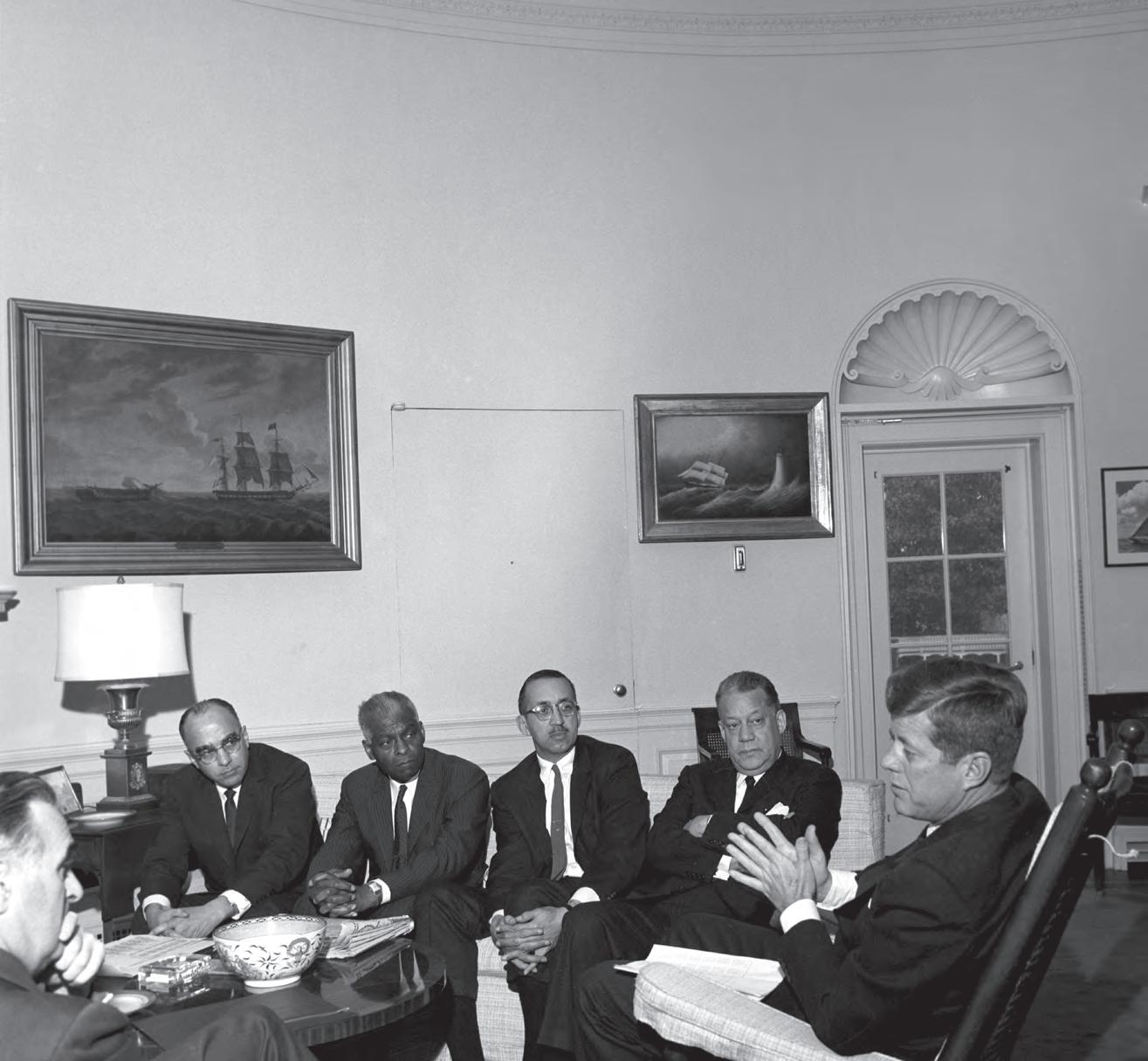
The JFK Library Foundation is pleased to celebrate the legacy of Benjamin E. Mays and to commemorate the 10th anniversary of the GLEAMNS Dr. Benjamin E. Mays
All men who believe in justice, who love peace, and who believe in the meaning of this country are under the necessity of working together to draw off from the body of human society the poison of racial antagonism.”
Bates College, the alma mater of Dr. Mays — where he learned to “accept with dignity my worth as a free man” — is proud to share the work of honoring and advancing the lessons of equity and justice that he lived and taught.



EJI believes that our history of racial injustice must be acknowledged before a society can recover from mass violence. The GLEAMNS community has been engaged in this work for a decade. Dr. Benjamin E. Mays embodied the spirit of the Black community following emancipation, and EJI congratulates the GLEAMNS community for its decade-long engagement to continue the work of Dr. Mays.
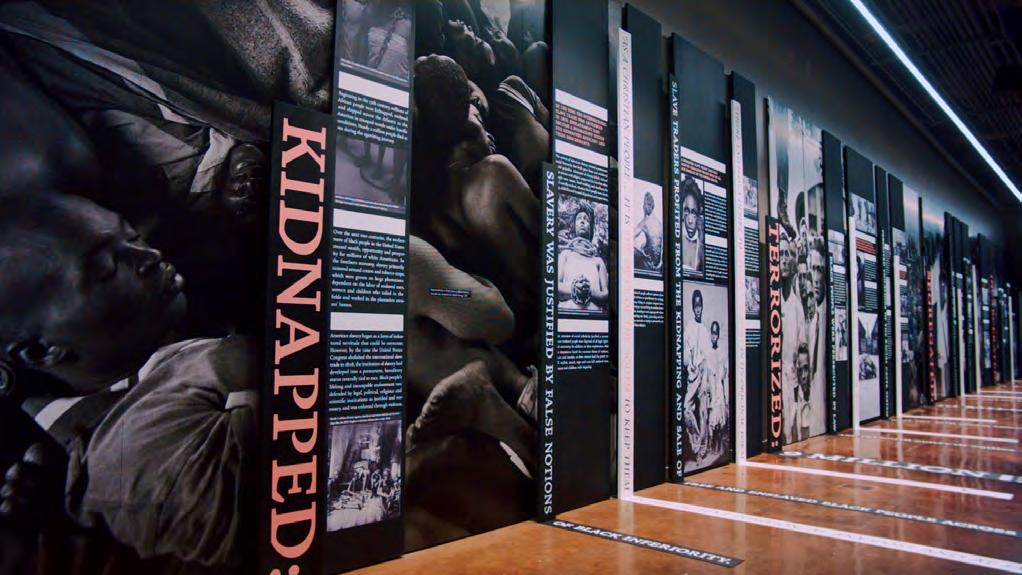
It is now more important than ever, as our history stands to teach so much about our present and future. We invite the GLEAMNS Community to visit Montgomery, Alabama to experience the Legacy Museum: From Enslavement to Mass Incarceration and the National Memorial for Peace and Justice — the nation’s first memorial to African American victims of lynching.
Visit museumandmemorial.eji.org to learn more
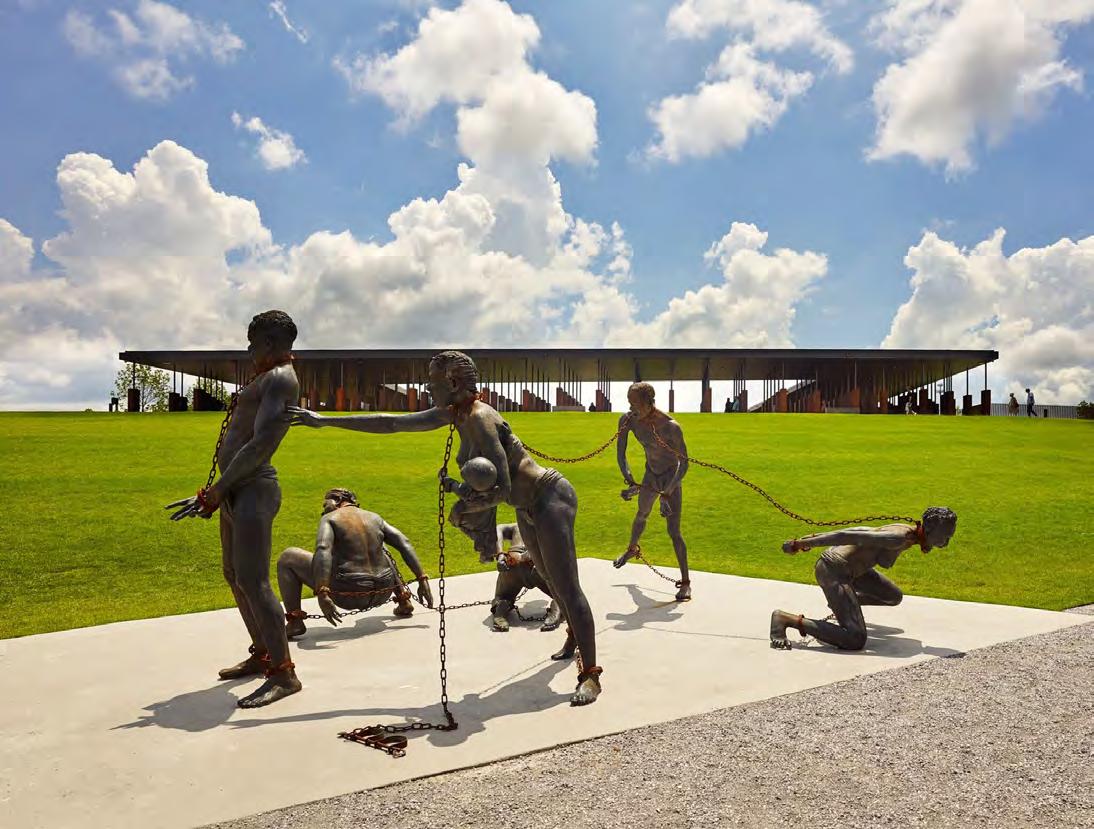
 JEARL NIX, GWINNETT COUNTY SCHOOLS AND CHARA HAEUSSLER BOHAN, GEORGIA STATE UNIVERSITY
JEARL NIX, GWINNETT COUNTY SCHOOLS AND CHARA HAEUSSLER BOHAN, GEORGIA STATE UNIVERSITY
In 1940, Atlanta was a bustling town. The city was still dazzling from the glow of the previous year’s star-studded premiere of Gone With the Wind. The city purchased increasingly more trolley busses to meet the demands of a growing population. Residents emerged from the Great Depression and found Rich’s department store as a popular local place to spend their money. Baseball fans gathered at Ponce de Leon Park to watch the hometown Atlanta Crackers battle their opponents. Yet, for black residents, 1940 Atlanta looked very different. The movie premier was a whites-only event. Blacks were crammed in the back of the new trolley busses. Rich’s did not allow black customers to try on clothes. And, the Crack ers’ stadium was segregated when the all-white team played, but not when the Negro League Black Crackers played.

In Atlanta, the color line was clearly drawn between black and white citizens. This color line not only kept blacks and whites apart physically, but it also prevented blacks from attaining educational opportunities, economic equality, healthcare ser vices, and many other public amenities readily available to white citizens. Most people, black or white, were not willing to cross the color line. Yet, in 1940 a man arrived in Atlanta who would plant the seeds of change. In the heart of the seg regated South, one black citizen reached across the color line, and what he found was a fellow white citizen willing to do the same.
In 1940, Benjamin E. Mays became president of the historical ly black, all male Morehouse College. Born to former slaves in South Carolina, Mays spent much of his life pursuing an education that was not available to most African Americans of his time. Mays eventually earned a PhD in religion from the University of Chicago. During his adult years, Mays was a professor and author of many books on Christianity and race relations. When Mays became the President of Morehouse,
he was faced with the difficult task of saving this institution from financial ruin. Mays rolled up his sleeves and went to work raising money by enforc ing tuition payments and soliciting monetary dona tions from the wealthy black and white residents of Atlanta.(1) One particular resident, Margaret Mitch ell, had recently acquired fame and fortune. Mays believed she could help the financially strapped Morehouse College.
A lifelong resident of Atlanta, Margaret Mitchell was a descendent of a Confederate soldier who fought to keep African Americans, such as Mays’ parents, in slavery. Mitchell grew up in a prominent white family who employed African Americans for domes tic jobs.(2) Mitchell only left Atlanta long enough to attend one year at Smith College. She returned home to take the place of her deceased mother as mistress of the household. Often viewed as a rebel, Mitchell was not well-suited for the constraints of the South’s high society women. An annulled mar riage, an affinity for boyish or revealing attire, a job as a reporter, and a streak of progressive views pre vented Mitchell from being fully accepted by Atlan ta’s elite.(3)
1926, bored from being bed ridden with a bad ankle, Mitchell decided to start writing a book. Ten
years later, in 1936, Mitchell’s Gone With the Wind was published. The book’s content focuses on At lanta during the antebellum period, the Civil War, and Reconstruction. The novel’s plot revolves around the loves and experiences of the main character Scarlett O’Hara. The book sold one mil lion copies in its first year, and in its second year, Mitchell won the Pulitzer Prize for literature. A few years later, the book was produced as a pop ular movie.(4) Some blacks found the content offensive. The book and movie portrayed slaves as happy and willing servants instead of showing the harsh realities of slavery.(5) Mitchell always defended her work by noting that the black char acters actually demonstrated more morality than those portrayed by whites.(6)
With the book and movie success, Mitchell be came a prominent Atlantan. President Mays be gan requesting financial support from Mitchell in late 1941. In the summer of 1942 Mitchell first do nated money to Morehouse College.
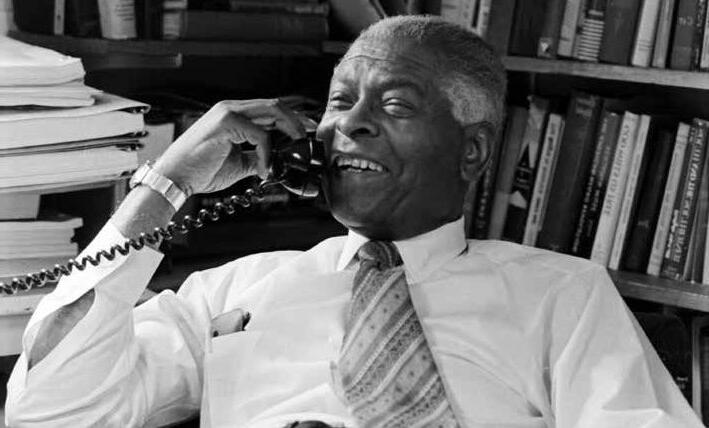
In her letter to Mays dated June 29, 1942, (See letter #1) Mitchell enclosed a check totaling $80 for “…some fine and deserving student”.
She pointed out that she could not guarantee the donation would be given annually because of the uncertain times of war. Finally, Mitchell made the request that her gift be kept anonymous. “I am sure you understand the reason behind this and I hope you will keep this matter confidential.”(7) Mitchell’s request for secrecy had a lot to do with the potential backlash she could receive from the white community for supporting a black college. Over the next three years, Mitchell continued her private donations to Morehouse College.
Mays’ solicitation for Mitchell’s financial support was scoffed at by some in the black community. Because of Gone With the Wind’s glorification of slavery, Mitchell did not have a favorable image among African Americans. At the movie’s 1939 premiere in Atlanta, blacks were restricted from entering the legally segregated Loew’s Grand The
ater which was decorated with white columns and con federate flags.(8) The black stars of the movie were not included at the Atlanta premier.(9) At a segregated recep tion sponsored by the city of Atlanta, ten year old Martin Luther King, Jr. joined the Ebenezer Baptist Church choir in singing spirituals to entertain the whites-only crowd in attendance.(10) However, Mays was not to be deterred. He had a plan and a vision for Morehouse, and he knew that gaining the support of a progressive Mitchell would be beneficial to the college.
World War II changed Atlanta and the South. Agricultural based jobs in the South dissipated thus blacks migrat ed to urban centers for employment. The Atlanta Ur ban League (AUL), an organization of local black leaders, worked in the 1940s to help these new residents find jobs, fight for educational opportunities, find housing (11) despite the objections of vocal hate groups (12), and improve hospital services for African Americans.(13)
The increase in the black population brought the crisis of public healthcare for Atlanta’s black residents to a cli max. As the President of Morehouse, which included a school of medicine, Mays was aware of the substandard healthcare available to blacks. Public health facilities were severely lacking. In a 1947 report from the AUL, it was reported that blacks made up 35 percent of Atlan ta’s population yet they only had access to 391 hospital beds. The segregating color line also existed in health care. There were few public hospitals to care for blacks who could not afford private care. Not only were facili ties lacking, but there was also a severe shortage of black
doctors. The AUL reported that for every 3,074 black res idents, there was only one black doctor.(14)
In the spring of 1946, Margaret Mitchell had a first-hand experience with the poor quality of healthcare for blacks. Mitchell’s black laundress, Carrie Holbrook, died of can cer. An employee of Mitchell’s for over twenty years, the two women were very close. Holbrook was in the final stages of cancer when her family and Mitchell searched for a hospital so that Holbrook could spend her final days in comfort. The wait for a hospital bed for Holbrook was two to three weeks. Mitchell, desperate to provide Hol brook with a peaceful end, quietly donated money to the Sisters of Our Lady of Perpetual Help hospital. The hospital administrators agreed to accept Holbrook who passed away three days later.(15)
This personal experience propelled Mitchell into action. On April 17, 1946, she wrote a letter (see Letter #2) to Hughes Spalding, chair of the Fulton DeKalb Hospital Authority, recounting the story of her laundress Carrie Holbrook’s situation and the desperate need for more medical facilities for Atlanta’s African Americans. She included a donation of $1,000 towards the development of a public unit for Atlan ta’s black residents (16).
Hughes Spalding was a powerful and respected Atlanta lawyer. As chairman of the Fulton DeKalb Hospital Au thority’s board of trustees, Spalding had the power to improve the healthcare needs of Atlanta’s black commu nity. Working with the Atlanta Urban League and utiliz ing funds from donations such as Mitchell’s, the Hughes Spaulding Pavilion of Grady Hospital was eventually opened in 1952.(17)
Only a few months after Holbrook’s death, in a letter dated October 23, 1946, (See letter #3), Mitchell pledged to Mays and Morehouse College a $2,000 scholarship for deserving medical and dental students.
The scholarship did have some stipulations.(18) First, Mays should select the recipient based on good charac ter rather than scholastic aptitude. Second, the recipient should practice medicine in Georgia. Dr. Mays agreed to Mitchell’s terms and the scholarship was established. At the request of Mitchell, the donations remained private.
On August 11, 1949, Mitchell was struck by a speeding taxi on Atlanta’s famous Peachtree Street. She died five
days later.(19) Yet, her death did not end her work with Mays and Morehouse College. In 1951, both Mays and Morehouse College received more than $3,000 in donations from an arrangement made by Mitchell before her death. In March of 2002, Eugene Mitchell, the nephew of Margaret Mitchell, donated $1.5 million to Morehouse College establishing the Margaret Mitchell Chair in the division of humanities and social sciences. This donation was at the time one of the largest individual gifts in the history of Morehouse College.(20) The Mitchell-Mays relation ship symbolizes the courage of two individuals who reached across the color line and across generations for the benefit of both blacks and whites.
In the next section, we provide several ideas for les sons to teach about the little known Mitchell-Mays relationship and how such a relationship can be ap plicable to students in today’s classroom.
The correspondence between Mays and Mitchell shows a relationship across racial barriers which impacts more than just the two people involved. By examining these letters and their importance to race relations in the Jim Crow era, students will become aware of the potentials of crossing color and race lines. These letters reveal the challenges of segregation, in contexts that students might not have contemplated, such as medical care, educational opportunity, and the role of women. In addition, the narrative of the Mays-Mitchell relationship teaches about civil rights, human equality, race, and domestic concerns on the home front during World War II. This history lesson addresses the NCSS thematic standards of culture and cultural diversity, individuals, groups and institutions, and civic ideals and practices. Common core standards include writing short research focused projects and reading foundational U.S. documents as well as seminal works of American literature (i.e. Gone with the Wind). We provide several different opportunities for students and teachers to explore.
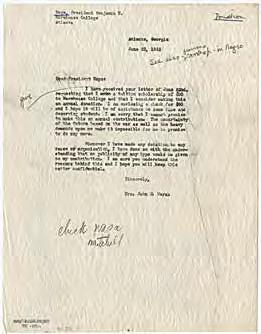
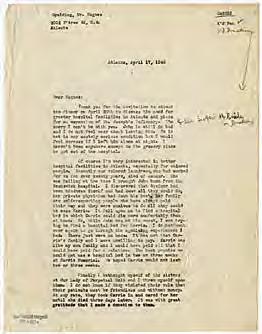
found on the Library of Congress’s collection, available at www.loc.gov/rr/print/list/085_ disc.html. Lead students through an analysis of the images. For a guide of possible questions, use the Analyzing Photographs & Prints teacher’s guide at www.loc.gov/teachers/ usingprimarysources/resources/Analyzing_ Photographs_and_Prints.pdf
Students may also review Jim Crow in America from the Library of Congress’s Jim Crow in America Primary Source Set, available at www.loc.gov/teachers/ classroommaterials/primarysourcesets/civil-rights/pdf/teacher_guide.pdf, to gain a broader sense of civil rights issues in the 1940s. Discuss any race-related events in the 1940s that Mitchell and Mays would most likely have been aware of and that might have served as a context for their correspondence. Some additional events to consider include the 1940 publication of Richard Wright’s Native Son, the 1945 election of Adam Clayton Powell, and Truman’s 1948 Executive Order to desegregate the military.
from this story and letters, of segregation and changes in attitude towards race in the 1940s. Specific examples include the use of the terms “colored” and “negro,” segregated practices in ballparks, department stores, hospitals and the Gone with the Wind movie premiere. Examples of changes are indicated in the Atlanta Urban League reports and Mitchell’s efforts to improve healthcare for blacks.

in the article and the letters, ask them to write an essay about how black and white residents in the South responded to the burgeoning civil rights movement?
Students may find the online Georgia Encyclopedia www.georgiaencyclopedia.org/nge/Home.jsp to be a great source. Additional readings about Mays and Mitchell are located in the reference section of this article.
Change in the Wind A documentary on the Mays/ Mitchell relationship created by Andrew Young. http://andrewyoungpresents.blogspot. com/2010/12/new-on-dvd.html
PBS Documentary on Margaret Mitchell: American Rebel. http://www.pbs.org/wnet/ americanmasters/episodes/margaret-mitchellamerican-rebel/watch-the-full-documentary/2047/
Mitchell House and Museum
http://www.margaretmitchellhouse.com/
LETTER #1: MARGARET MITCHELL, LETTER TO BENJAMIN E. MAYS
JUNE 29, 1942
“I have received your letter of June 22nd, requesting that I give a tuition scholarship of $80 to Morehouse College and that I consider making this an annual donation. I am enclosing a check for $80 and I hope it will be of assistance to some fine and deserving student. I am sorry that I cannot promise to make this an annual contribution. The uncertainty of the future based on the war as well as the heavy demands upon me make it impossible for me to promise to do any more.
Whenever I have made any donation to any cause or organization, I have done so with the understanding that no publicity of any type would be given to my contribution. I am sure you understand the reasons behind this and I hope you will keep this matter confidential.”
Notes:
1. Ira Joe Johnson and William G. Pickens, Benjamin E. Mays & Margaret Mitchell: A Unique Legacy in Medicine (Winter Park, FL: FOUR-G Publishers, 1996), 1-6.
2. Ibid., 6, 8.
3. Anita P. Davis, Margaret Mitchell: A Link to Atlanta and the World, eds. Julie Bookman, Karen Kelly, Mary Wilson, and Bonnie Garvin (Atlanta: The Atlanta Historical Society, 2006), 7, 13.
4. Ibid., 19-20.
5. Gary M. Pomerantz, Where Peachtree Meets Sweet Auburn: The Saga of Two Families and the Making of Atlanta (New York, NY: Scribner, 1996), 130.
6. Davis, 28.
7. Letter from Margaret Mitchell to Benjamin E. Mays, June 29, 1942; Margaret Mitchell Margaret family papers, Box 55, Folders 17-18, Hargrett Rare
LETTER #2 EXCERPTS: MARGARET MITCHELL, LETTER TO HUGHES SPALDING
APRIL 17, 1946
“I’m very interested in better hospital facilities in Atlanta, especially for colored people. Recently our colored laundress, who worked for us for over twenty years, died of cancer. … It fell upon me to find a hospital bed in which Carrie could die more comfortably than at home. …I do not want ever again to go through the agonizing experiences I had. There just were no beds. …Carrie was like my own family and I would have paid all that I would have paid for a relative.”
Mitchell added,
“I do not think people who have not experienced so heartbreaking a time can realize the need for more beds for our colored population who are able to pay something for medical and hospital care. …I hope so much that some thought will be taken of this particular problem. …Atlanta is big enough now to have colored people in the white-collar class, and I wonder how many of them have been in the situation of our Carrie, willing to pay but being unable to buy a bed in which to die.”
Book and Manuscript Library, The University of Georgia Libraries, Athens, GA
8. Johnson and Pickens, 9-10.
9. Pomerantz, 133.
10. Davis, 29.
11. Alton Hornsby, Jr. and Alexa Benson Henderson, The Atlanta Urban League, 1920-2000 (Lewiston, NY: The Edwin Mellen Press, 2005), 39, 50, 56.
12. Kevin M. Kruse, White Flight: Atlanta and the Making of Modern Conservatism (Princeton, NJ: Princeton University Press, 2005), 46.
13. Ronald H. Bayor, Race & The Shaping of TwentiethCentury Atlanta (Chapel Hill, NC: The University of North Carolina Press, 1996), 160.
14. Ibid., 161.
15. Johnson and Pickens, 8.
16. Letter from Margaret Mitchell to Hughes Spalding, April 17, 1946; Margaret Mitchell Margaret
LETTER #3 EXCERPTS: MARGARET
MITCHELL, LETTER TO BENJAMIN E. MAYS
OCTOBER 23, 1946
“I want [the $2,000 check] used to assist deserving students in acquiring medical and dental educations. I think I may speak for Carrie, as well as for myself, when I say that both of us would prefer the students to be chosen on a basis of character, good will toward their fellow man, and willingness to work, rather than on brilliance or high scholastic grades alone.”
Mitchell continued, “Georgia is a huge state and is poor. We are poorer in Negro doctors, I am sure, than almost any other state. Therefore, I would definitely prefer that any boys who avail themselves of this money should practice in Georgia or at least give Georgia a trial of a year or so.”
Mitchell concluded, “…but I ask that you make very clear to anyone who accepts this money for medical or dental training that it would be the wish of Carrie Mitchell Holbrook that they stay here and help their own people.”
family papers, Box 55, Folders 17-18, Hargrett Rare Book and Manuscript Library, The University of Georgia Libraries, Athens, GA
17. Bayor, 163.
18. Letter from Margaret Mitchell to Hughes Spalding, October 23, 1946; Margaret Mitchell Margaret family papers, Box 55, Folders 17-18, Hargrett Rare Book and Manuscript Library, The University of Georgia Libraries, Athens, GA
19. Davis, 26.
20. Dahleen Glanton, “Of Race and a Southern Novel: Mitchell Family, Black College Renew Alliance,” Chicago Tribune (2002). doi: http:// articles.chicagotribune.com/2002-03-31/ news/0203310407_1_morehouse-college-blackmen-mrs-mitchell.
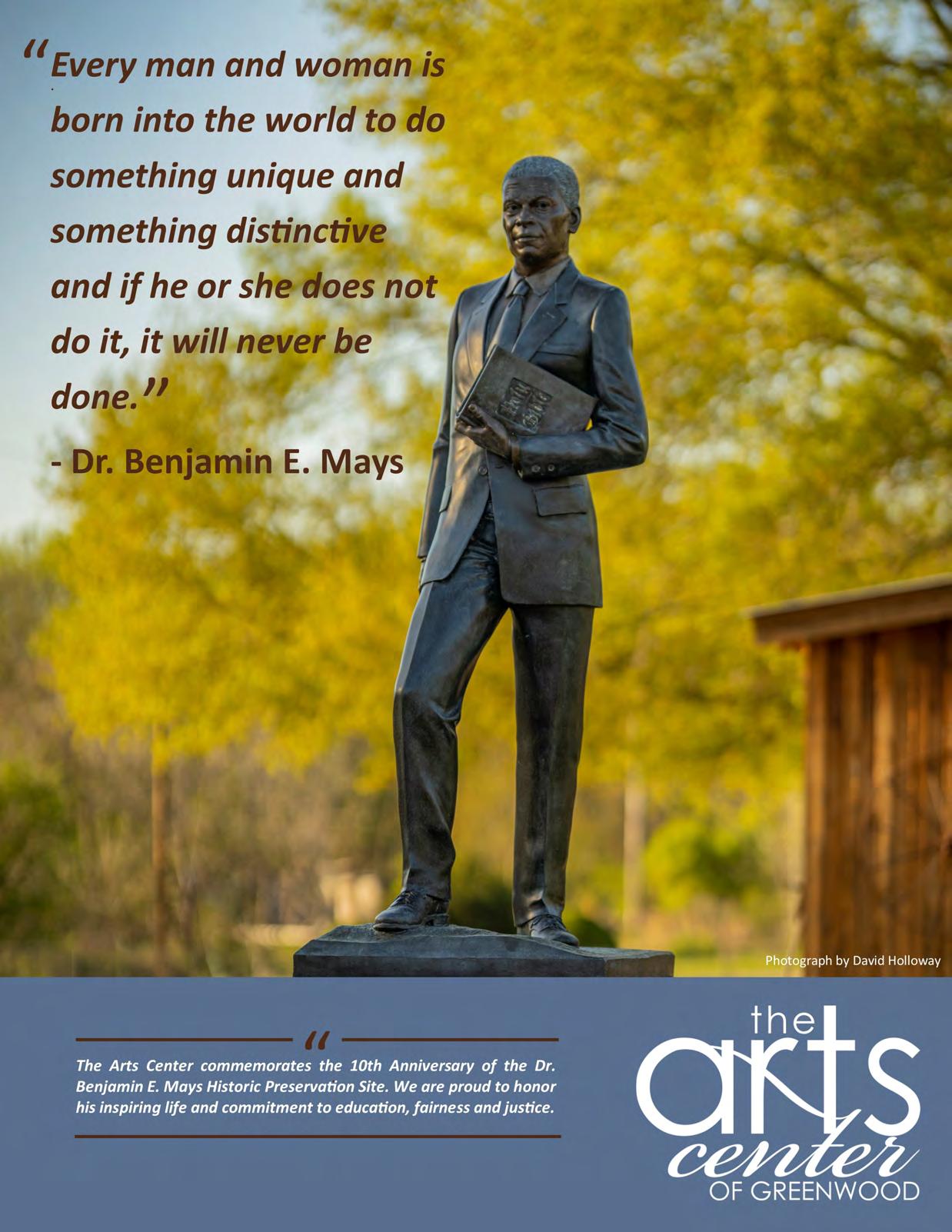
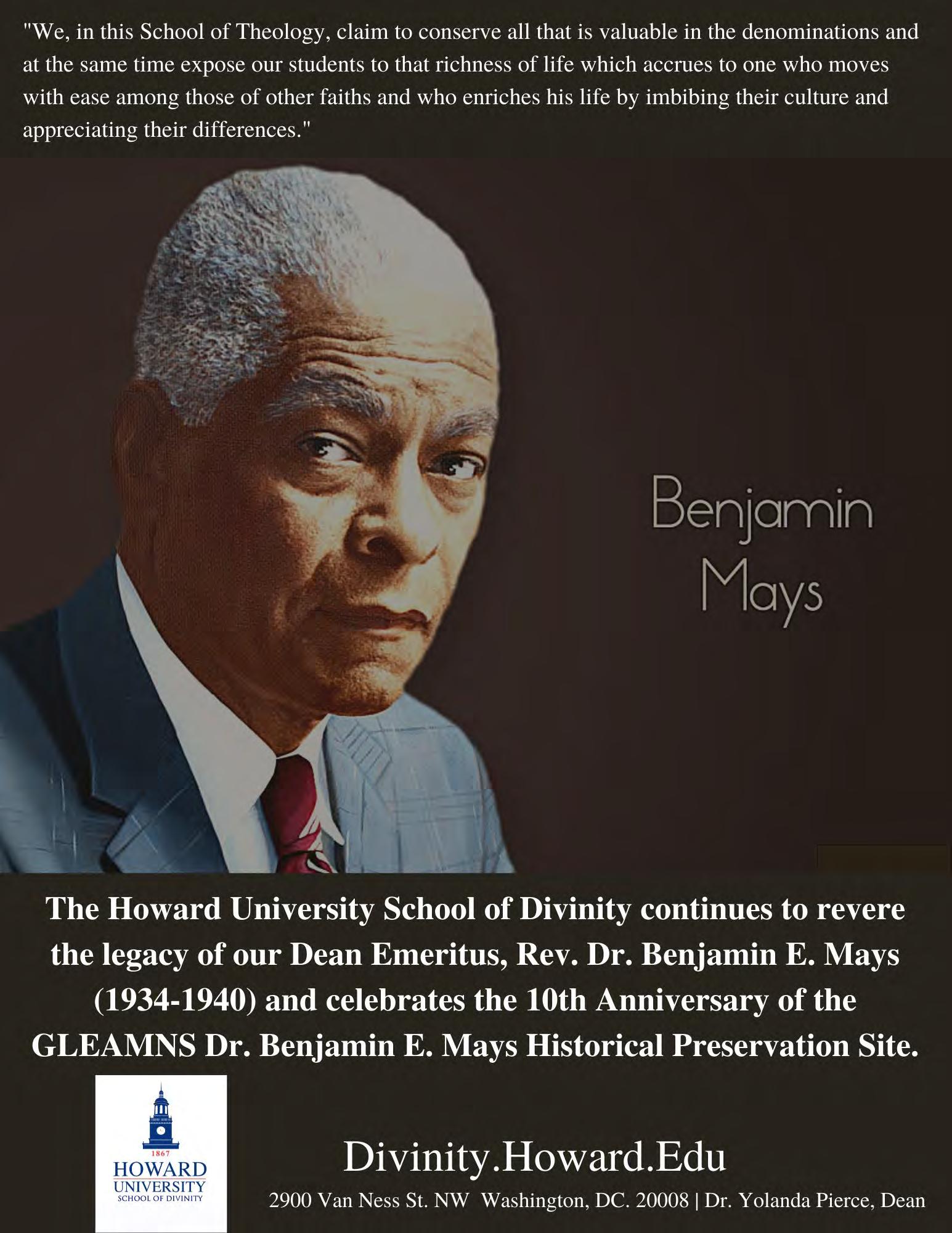


Every man and woman is born into the world to do something UNIQUE and something DISTINCTIVE and if he or she does not do it, it will never be done.
From developing their logo to creating this publication, it has been an honor to help the Dr. Benjamin E. Mays Historic Preservation Site commemorate the man who did so much for our world.
DR. BENJAMIN E. MAYS
Black religious intellectuals have historically occu pied a very important role in the black communi ty. In the course of American history, religion has served as the centerpiece of African American life and its preachers, ministers and thinkers have func tioned as the main spiritual and intellectual lead ers. Historically, black religious intellectuals have also operated as progenitors of social and political change in various facets of American life. In the era of slavery, Nat Turner and other preachers imbued many communities of blacks with the resolve and spiritual vision of resisting and surviving that sys tem’s evils. In the 19th century, such luminary black religious thinkers as Alexander Crummell and Bish op Henry McNeal Turner laid the intellectual and spiritual foundations for Black Nationalism and the back to Africa movement. In the 20th century, visionaries such as Benjamin Elijah Mays, Howard
Thurman and Martin Luther King, Jr. represented the prototype black religious thinker in their fusion of religious theology, philosophy, secular intellec tual thought, and a strong measure of individuality. Interestingly, this existence among many black re ligious figures of a strong intellectual undercurrent and balance to their religious and spiritual selves has placed them in a position of critical importance vis-a vis the black community, American society writ large, and the world.
In this article my focus is geared toward an un derstanding of the critical importance and repre sentation of 20th century pre-World War II black intellectuals, namely Benjamin Mays and Howard Thurman. Here, I lay the groundwork for further examinations of their role as black religious intel lectuals, symbols of black masculinity1, and schol ar/activists with respect to the problems of race as it related to the church and global relations. Through an initial examination of Mays’s and Thur man’s years at Howard University, their individual approaches to religion and masculinity and their involvement as social commentators and activ ists, imbued with a vision to eradicate racism in the church and society, I plan to situate these two figures as major models of black masculine intel lectual leadership in America. In American popu lar culture, when most people think of black reli gious thought and leadership, the name that most

comes to mind is that of Dr. Martin Luther King, Jr, without any mention of other important figures. Due to this significant omission, it is also partly my intention here to demonstrate the central role that Mays and Thurman had in shaping the 20th century African American ministerial community, especially the consciousness and philosophy of leading figures such as King, Jesse Jackson and others.2

In the 1930s and 1940s, the School of Re ligion at Howard University showcased some of the most capable black religious thinkers ever congregated at one institu tion at one particular time. It is not a co incidence that such a religious intellectual collective functioned at Howard, especial ly with the presence of a similar secular collective that simultaneously operated within a university-wide intellectual com munity. After obtaining his Ph.D. from the University of Chicago in 1934, Benja min Elijah Mays took over the position as Dean of the School of Religion at Howard University. As dean, Mays increased both his own reputation as well as that of the school with a number of professional achievements. He began a tradition of ex cellence at the School of Religion that con tinued after his departure in 1940. Among Mays’s many accomplishments at How ard, he brought national attention to the university, mainly through securing for it a class A rating from the American Asso ciation of Theological Schools. Both Mays and the School of Religion went hand in hand for he often promoted it and his own individual work both nationally and internationally.3
By 1934, Howard University had achieved the designation as the capstone of Ne gro education. In 1926, Mordecai John
son became the school’s first black president and set out on a vision of building a great black intellectual community at Howard. This vision be came a reality and was apparent as many noted black scholars of that time sought to teach and operate within this incredible intellectual milieu. The origins of this community lay in the nature of racial segregation, which left scholars such as Mays very few alternatives. In a real sense, an ap pointment at Howard represented the pinnacle of a black scholar’s career. Like Mays, a number of other Howard intellectuals had received their ad vanced degrees from leading white universities in the North, and this fact was an attractive quality that acquired the attention of Mordecai Johnson.
In Mays’s case, as with a number of other schol ars, chances for work after completion of grad uate degrees in academia were based on three main choices: Fisk University, Atlanta University, or Howard University. Prior to his appointment to Howard, Mays had accepted a similar offer from Fisk’s president, Thomas Jones, but eventually chose Howard due to his deep personal respect for Mordecai Johnson. In his autobiography Mays recalled that Johnson “had made a tremendous impression on me when I first heard him speak while I was a teacher at Morehouse ....” It was this tremendous first impression that caused Mays to thereafter intently follow Johnson’s career. Re flecting back on his decision to come to Howard, Mays recollected:
I was eager to go to Howard for several reasons. I felt the challenge to make the School of Religion outstanding, to lift it, if possible, from its stepchild role to a place of respectability in the institution. Moreover, I had great admiration for Mordecai Johnson.... I had more than a casual interest in Mordecai Johnson’s success at Howard. I am ba sically a ‘race’ man. I believe in the black man’s ability, and my heart leaps with joy when a Negro performs well in any field. For me, it was imper ative that the first “Negro’ President of Howard University be an unqualified and triumphant suc
THEIR INDIVIDUAL APPROACHES TO RELIGION AND MASCULINITY AND THEIR INVOLVEMENT AS SOCIAL COMMENTATORS AND ACTIVISTS WERE IMBUED WITH A VISION TO ERADICATE RACISM IN THE CHURCH AND SOCIETY
cess. I was eager to help him build a great University by making the School of Religion a first-rate institution.4
Mays commented that various questions were raised by “doubting Thomases,” concerning the competency of Johnson to complete his duties as president. To his cred it, Mays argued that there were a number of precedents indicating that black men demonstrated the capability to be successful presidents of institutions of higher learning. As examples, he cited Booker T. Washington and Robert Russa Morton’s leadership at Tuskegee and John Hope at Morehouse College. A larger question Mays believed was whether Johnson could get appropriations from Congress due to the opposing stances of Southern congressmen, who blocked Howard’s attempt to secure governmental funding. Even after Johnson’s successful acquisition of appropriations for Howard, there were other barriers to contend with, such as Congressional interference with af fairs at Howard, that would cloud his administration.
In addition to pressures from white racism and main stream society, Mays articulated what he believed to be an even greater obstacle facing Johnson’s administration: that of “[s]ystematic undermining of self-confidence” by other black intellectuals at Howard. A small group of professors there were vehement in their dislike and op position toward Johnson, many believing that he admin istered in too dictatorial a fashion. Never fully grasping the reasons for the intense animosity toward Johnson, Mays went so far as to suggest that Johnson, himself, had not fully comprehended the depth of the opposition against him. Mays admitted that he, himself, was some what caught between divided loyalties since many of the dissenters were friends of him and his wife, Sadie. Seem ingly, due to a keen sensitivity of the precarious position of black men in the academy, Mays found ways to stay above the fray and maintained good relationships with Johnson as well as his dissenters in the university com
munity. In his numerous encounters with the president, Mays disclosed that not once did he experience the type of man that many others saw Johnson as. Instead, his as sessment of Johnson depicted him as “a man of honor and integrity,” being careful to add that he, as any other human being, possessed an imperfect nature. This favor able attitude toward Johnson by no means meant that Mays agreed with everything the president did. For in stance, Mays believed that the School of Religion at How ard functioned in a marginal position in comparison to other schools such as medicine and law. All in all, even with the controversy, Mays operated well within this in tellectual community and contributed mightily to its exis tence, maintenance, and ascendance.5
Among the intellectuals who composed this commu nity during Mays’ tenure were educators Dwight W. O. Holmes and Charles H. Thompson; philosopher Alain Locke; historians Rayford Logan, Charles Wesley and William Leo Hansberry; political scientist Ralph Bunche; sociologist E. Franklin Frazier; economist Abram Harris; and religious intellectual Howard Thurman. Thurman’s arrival at Howard, in 1933, preceded Mays’ by about one year. Mays’s and Thurman’s relationship extended as far back as their days at Morehouse College where Mays served as one of Thurman’s professors and mentors. Now that they were at Howard, they functioned more as contemporaries, exhibiting an air of tremendous respect toward one another. Thurman was equally as cognizant as Mays of President Johnson’s vision of building Howard into an intellectual heavyweight. In his own autobiogra phy, Thurman expressed that he too “was caught up in Mordecai Johnson’s vision to create the first real commu nity of black scholars.” Hence, a close friendship existed between all three, Mays, Thurman and Johnson. Just as Mays had a great influence on Thurman’s life, the same can be said of the influence of Johnson on Mays’ devel opment. Thurman and Johnson were graduates of More house College, and Mays was a former instructor there. All three were former Baptist pastors, articulate debaters, and practitioners of the philosophy of nonviolence be fore Martin Luther King Jr. For Mays, it was due mainly to the success he achieved as Dean at Howard, in addition to his relationship with Johnson, that earned for him the opportunity to become president of Morehouse College in 1940. For Thurman, the Howard years were equally as gratifying in that they proved critical to his evolution as an intellectual and human being. Despite the turmoil that
MAYS UNDERSTOOD ALL TOO WELL THE DIFFICULT POSITION THAT JOHNSON WAS ASSUMING. SINCE ITS FOUNDING IN 1867, HOWARD UNIVERSITY HAD ONLY BEEN HEADED BY A SUCCESSION OF WHITE MEN. NOW, HERE WAS JOHNSON, IN THE LATE 1920S, THE FIRST BLACK MAN IN THAT POSITION.
often visited Howard, in particular, and black intellectual life in general, these three black men retained the bonds that brought them together and remained on common ground.6
At the beginning of his tenure as Dean of the School of Religion at Howard, Mays instituted six major goals that he wanted to accomplish while there. In addition to in creasing the enrollment, Mays wanted to improve the faculty, upgrade the physical plant, expand and improve the quality of the library, set up an endowment, and gain accreditation through the American Association of Theo logical Schools. Not surprisingly, Mays achieved much of what he set out to do. In terms of the development of the faculty, it can be argued that he intended to do for the school of religion’s faculty what president Johnson envisioned doing for the entire university, and that was to assemble the best black minds around. In addition to himself, the Howard University School of Religion facul ty boasted of a number of prominent black theologians and religious thinkers of the period before World War II. Among the other luminaries on the faculty during Mays’s tenure were Howard Thurman, Rev. William E. Carrington, Mordecai Johnson, John Edward Bentley and Rev. Robert William Brooks.7
Mays had a demanding schedule as a religious intellec tual at Howard. He operated as an educator, teacher, preacher, social activist, and prominent scholar. Some how, Mays functioned well, remaining heavily involved in university affairs and the School of Religion, as well as local, national and international affairs. Mays often traveled overseas to various nations, including India and Africa. During his six-year tenure as Dean of the School of Religion, Mays attended world conferences in Europe and India. In addition, Mays was a sought-after public speaker and intellectual. Both through literary and ora torical means, Mays used the Howard years to promote a number of social causes, which further demonstrated his tremendous leadership as a religious intellectual. As an ardent social critic, he contributed substantive articles to many black newspapers, most notably the Pittsburgh Courier. Lastly, in these years, Mays established himself as a prolific scholar. His works, The Negro’s Church (1933) with Joseph Nicholson and The Negro’s God (1938) estab lished him as a contributor to black theology and leading architect of the modern-day field of African American re ligious studies.8
Both Benjamin Mays and Howard Thurman were instru mental in the organization of the School of Religion’s Annual Convocation. Howard historian Rayford Logan argued that, “perhaps the most valuable contribution of the School of Religion was the Annual Convocation.” The convocation showcased many of the most known Chris tian religious figures and “served as a clearinghouse for the exchange of ideas and as a power house for the gen eration of ideals.”
Among the many speakers who attended this gathering were figures such as J. A. Martin, General Secretary of the Colored Methodist Episcopal Church, the Reverend Miles Mark Fisher, Pastor of White Rock Baptist Church, Rufus M. Jones, mystic and mentor to Howard Thurman, and the Reverend Vernon Johns, Pastor of First Baptist Church in Charleston, West Virginia. Convocation speakers were also chosen from important areas outside the religious arena, including Ralph Bunche, professor of political sci ence at Howard, and Robert C. Weaver, who served in the U.S. Department of the Interior.9
In 1940, following Mays’ departure to Morehouse College, many of the faculty at Howard continued their critical role in race leadership with the advent in 1944 of a series of dialogues, held annually through 1948, with other black religious intellectuals for the expressed purpose of de termining their role and that of the Christian religion in proposing solutions to the race problem in America. His successor at Howard was William Stuart Nelson, anoth er important black religious thinker and friend of Mays and Howard Thurman. Although Mays left to assume the presidency at Morehouse, he remained active in the Insti tute at Howard and often had essays published as a part of the annual proceedings.10
Howard Thurman, born in Daytona Beach, Florida, has been characterized by some scholars as “the foremost African American religious philosopher in American his tory.”
THE CONVOCATION WAS ALSO SIGNIFICANT IN THAT IT PROVIDED FOR STUDENTS OF THE SCHOOL OF RELIGION THE CHANCE TO INTERACT WITH SOME OF THE MOST INFLUENTIAL RELIGIOUS MINDS OF THE DAY.
BEFORE KING AND CORNEL WEST, THURMAN REPRESENTED A TYPE OF BLACK RELIGIOUS PHILOSOPHER WHO ARTICULATED A VISION OF A BELOVED COMMUNITY THAT ESCHEWED RACISM AND ABHORRED SEGREGATION.
Thurman functioned in numerous capacities and carved his own niche within each. As Baptist minister, university professor and intellectual, as well as dean of the chap el, Thurman constructed a careful bridge between the secular and sacred, synthesizing the two in a unique and balanced fashion. Thurman’s impact can be felt in the foundations of pre-World War II, black religious intellec tuals’ critique of racial segregation and subsequent expli cations of the contradictory nature of Christian practice as well as his pioneering influence on black theology and black church studies.11
Additionally, Howard Thurman represents a unique reli gious thinker who epitomized the scholar/activist model inherent in black intellectual life. By the scholar/activist model I am referring to the idea that black intellectuals have always been engaged, perhaps as a consequence of racism and partly due to the nature of black culture and community development, in activism while simultane ously doing significant scholarship. Thurman’s scholarly bent is evidenced by the tremendous number of works he published. As an activist, he was so attuned to oth er cultures and so well-rounded as an individual that he served as a good model for other activists. In addition to his tutelage of civil rights leaders, Thurman’s activism and vision were evidenced in the creation of the first inter racial and interdenominational church in San Francisco. Although Thurman has had a tremendous influence on the philosophical construction of black liberation theolo gy and black church studies, he was careful not to get en cased in any particular theology or social category, mak ing special effort to transcend constructions of race and religion without denying their critical importance in his formative vision. Thurman represents a black religious intellectual who worked to actualize the concept of unity in virtually every area of his life, from his theology to his identification as a black male and black American. Cath erine Tumber and Walter Earl Fluker characterize Thur man as “a public intellectual who influenced some of the
most important social movements of the mid-twentieth century... “. For generations of social and religious activ ists following in his footsteps, Thurman supplied a viable mantle of social change and racial progress to emulate.12
Thurman used his years at Howard University, 1933-1944, to hone his meditative and introspective style, emerging from this period as a giant philosopher and social theore tician. In addition to being appointed the first black Dean of the Andrew Rankin Memorial Chapel in 1932, Thurman also served as Professor of Theology and chairman of the Committee on Religious Life. His creative and pioneering sermonic styles attracted the attention of a broader re ligious and academic following, one larger than he had ever known before. Thurman instituted at Howard the tradition of inviting a plethora of diverse scholars and theologians to speak at Chapel services, a tradition that continues to this day. His tenure as Dean of Chapel re flected an evolving desire to transcend differences based on race, sex, religious orientation, and class. Like Mays, Thurman was an active participant in the intellectual community at Howard. Among the figures he associated with were Mays, Abram Harris, Alain Locke, E. Franklin Frazier and, of course, Mordecai Johnson.13
In recent years, Thurman has received little attention outside some theological circles. This oversight has partly been attributed to Thurman’s contemplative and medita tive mode of religious leadership. Although Thurman was not as publicly visible as many other black religious fig ures in terms of activism, often choosing to influence the civil rights movement and its leaders behind the scenes, his impact upon their activism and activities cannot be denied. Despite the apparent criticisms of being socially detached, Thurman epitomized a particular genius, both in his philosophy and in his representation as a religious thinker and activist. In terms of philosophy, Thurman’s brilliance is evident as one sees how his own diverse life and experience served as a model for his theological vi sion. The maternal influences on Thurman’s unique con struction of masculinity and gender, especially within the bounds of religion and the church, served to shed light on his attempted unification of these areas on a global scale, much as he understood them in his own life. Fur thermore, Thurman’s ability to navigate through various philosophical and spiritual mediums as well as integrate numerous functionary roles, such as preacher and teach er, illustrate a similar vision that was espoused in his con
cept of the beloved community. In many ways, representative as an embodiment of the unity of the self, Thurman has been characterized as a social prophet, shaman, mystic as well as a minister, university professor and chapel dean.
has defined contemporary black religious in tellectual life. Allen argues that many black religious intellectuals have not properly ad dressed the contradictions inherent in the Christian religion in terms of its support and propagation of racism, slavery, sexism, ho mophobia and other forms of discrimination. Allen also argues that most black religious in tellectuals have depended too much on the Bible without significant criticism of it as a source or adequate intellectual inquiry into various areas of secular subjects, so as to bal ance their religious orientations.
As part of their travels to India, Mays and Thurman came under the powerful influence of Mahatma Gandhi. Before his encounter with Gandhi, Mays previously harbored a nonviolent sensibility. However, it was not until his exchanges with Gandhi that Mays would acquire a broader application of that philosophy. Gand hi persuaded Mays to reconfigure nonviolent approaches to segregation and social change, thus, placing more emphasis on “mass campaigns of passive resistance” and focus less attention on individual stances. Years later, Mays would use this knowl edge gained from his conversations with Gandhi and impart it to young Morehouse men at Tuesday morning chapel talks. One of these young men, Martin Luther King, Jr., internalized Mays’s messages and transformed them into a broad philosophy that would later re-energize the civil rights movement.15 Similarly, Howard Thurman’s growing conception of nonviolence was also affected by Mahatma Gandhi. In 1935, Thurman and his wife, Sadie, went to India and gained an audience with the poet Rabindranath Tagore and Gandhi. According to many scholars, Thurman was the first African American scholar to meet with the Indian leader of nonviolence.
Gandhi imparted to Thurman his belief that western versions of Christianity were largely responsible for the global segregation of the world’s people, especially along lines of race, class and gender. After his return to the U.S., a reinvigorated Thurman set out on a path to fuse his Christian pacifism and mysticism with the principles of proactive unity and non-violent social change learned from Gandhi.16
In recent years, religious oriented intellectuals such as Cornel West have echoed intellectuals of previous decades, namely Harold Cruse and John Hope Franklin, in saying that a “dilemma” or “crisis” has epitomized black intellectual life in America, par ticularly in the twentieth century. Accordingly, humanist scholar Norm Allen has called attention to a similar crisis that he argues
MY ARGUMENT IS THAT MAYS AND THURMAN CONTRADICTED THIS CRITICISM THAT IS MADE AGAINST BLACK RELIGIOUS INTELLECTUALS. THESE TWO FIGURES NOT ONLY QUESTIONED THE CHURCH’S ROLE WITH RESPECT TO THE RACE QUESTION AND OTHER IMPORTANT ISSUES BUT ALSO POSITED A TYPE OF MASCULINE REPRESENTATION THAT ADHERED TO MUCH OF TRADITIONAL NORMS, AS IN THE CASE MORE SO OF MAYS, BUT ALSO ADVANCED A MORE INCLUSIVE AGENDA.
Under Mays’ leadership the School of Reli gion was far more progressive on the issue of gender than most institutions of higher learning, especially black colleges and univer sities. There were a number of women grad uates of that particular school. Although not widespread, the matriculation of Leticia Oc tavia Jones in 1936 with a Th.B. and M.A. re cipients, Anita Anderson in 1936 and Reva A. Brannon in 1940 indicated a small yet grow ing sensitivity exhibited toward women reli gious scholars. However, despite these nota ble successes, a question arises as to why 35 other enrolled women failed to receive their degrees, and this issue warrants further in vestigation by future scholars.17
THE UNITY THURMAN GENERATED BETWEEN THESE ROLES AS WELL AS HIS ABILITY TO TRANSCEND ANY DEFINABLE BOUNDARIES BOTH EXEMPLIFIES HIS VISIONARY ROLE AS A BLACK RELIGIOUS INTELLECTUAL AND ALSO PARTIALLY EXPLAINS HIS RELATIVE OBSCURITY. 14
Many pre-World War II black intellectuals, including Mays and Thurman, actively and openly challenged both the black and white church establishments on the question of segregation within their boundaries.
THESE BLACK RELIGIOUS THINKERS WERE AWARE OF THE CRITICISMS AND CONTRADICTIONS IN THE HISTORICAL PRACTICE OF CHRISTIANITY BUT THEY, FIRMLY BELIEVED THAT A SINCERE APPLICATION OF THE RELIGION’S PRINCIPLES WOULD ELICIT THE MOST EFFECTIVE RESPONSE TO THE RACE PROBLEM, BOTH IN AMERICA AND AROUND THE WORLD.
Concurrent with the advancements in civil rights achieved by other notable black leaders such as Charles Hamilton Houston, Dean of Howard’s law school, black religious thinkers, led by Mays and Thurman “sharp ened their critique of white Christianity and developed a theology of race relations .... “ Two of the principle architects of this new theology were Benjamin Mays and Howard Thurman. Interestingly, this new theory of race relations was coupled with a new identity among blacks, characterized by the term “New Negro.” This new identity was promoted by Harlem Renaissance fig ures such as Alain Locke and advanced in religious cir cles by Mays and Thurman as well. It would eventually serve as a strong impetus for the black theology and black church studies movement of later decades.18
Mays and Thurman represented prototypical black religious intellectuals and activists even though their styles were somewhat different. Before King, Mays was perhaps the most visible and active black religious thinker around. He, more than many other scholars, recognized and articulated both the national and inter national consequences of the race problem in America. Mays’s versatility as a religious intellectual provided an instructive model for generations coming after him. In comparison, Thurman’s influence on shaping future generations of black religious intellectuals was also of critical importance. His range of insights and diversity of religious thought moved beyond traditional appli cations of theology in the black church to incorporate mysticism and other spiritual ideologies. Why Thurman was shunned in his day by many of his contemporaries and others is still a very probing question. One thing that cannot be denied him is the tremendous impact
he had on many generations of black re ligious thinkers, including Martin Luther King, Jr., and Jesse Jackson. As one schol ar characterized him, “Howard Thurman .... was more than an activist, he was an activator of activists, a mover of mov ers.” This latter point is particularly evi dent as one identifies definite strands of Thurman’s thought embedded in the moral philosophies of King and Jackson in terms of developing the concept of community.19
Mays’s influence upon later generations of black religious thinkers is also very ev ident. Mays was as diverse as Thurman in terms of subject matter but he was far more traditionally oriented along theological lines. Whereas Thurman ex perimented with styles of worship and addressed social issues from a deeper philosophical standpoint, Mays adhered to more of a direct and traditional ap proach to worship and critique of social issues, emanating from the Black Baptist tradition.
This characteristic of Mays is revealing and significant to a deeper understanding of his influence on the developing consciousness of King and other black religious leaders. The influence Mays possessed was partly due to his combination of gifted orator, towering statue and personality, and his incredible knowledge of world
EVEN WITH MAYS’S MORE CONSERVATIVE APPROACH TO THEOLOGY, HE POSSESSED AN UNCANNY ABILITY TO APPRECIATE DIVERSITY AND CO-EXIST WITH PRACTITIONERS OF DIFFERENT PHILOSOPHIES, SUCH AS THURMAN.
affairs. Mays both advanced the cause of black manhood, both in his personal example and emerging philosophy of black masculinity. It was this philosophy that developed as a result of Mays’s life-long experiences and culminated in his creation and actualization of a model for training young black men. This model has been referred to by many as the “Morehouse Mystique,” and became evident soon after Mays assumed the presidency of Morehouse College in 1940. This philosophy included virtually every aspect of black male development, the mental, physical, and the spiritual. In young black men, Mays developed their intellects, infusing a broad knowledge of world affairs. In terms of physical appearance, Mays, himself, an aweinspiring presence of well over six feet, taught young black males how to be gentlemen in dress and mannerisms. Finally, he supplanted into the souls of young black males a strong awareness of the concept of human connectedness and the spiritual manifestations of human life. Taken together, each aspect of this philosophy characterized Mays’ own development and experience as a black man prior to Howard and throughout his time there. I would argue that Mays had been developing this philosophy all his life, honing it while Dean of the School of Religion at Howard. The result was a viable model of black masculine leadership and identity that spanned from his sharp attire to his character and religious philosophy. Soon after his arrival, many young emerging scholars such as King came under Mays’s influence and quickly gravitated to his way of thinking. Mays, as Thurman, not only traveled the world over and represented cosmopolitan intellectuals but also shared a deep abiding longing in the transformative nature of the Christian religion and represented more than your typical pulpit preacher?20
In terms of criticisms of Howard Thurman as a legitimate black religious intellectual, one must examine at least in some detail the number of influences inherent in his conception of religion. Although Thurman’s mysticism was viewed by many traditional religious thinkers as unconventional, his adherence to mainstream Baptist principles was still very evident in his multidimensional theology. Scholar James William McClendon, Jr, evidences definite strands of Baptist tradition in Thurman’s conception of religion. Among the characteristics he attributes to Thurman are the concepts of Biblicism, or the adherence to the actual teachings of the Bible; the idea of mission that shuns imperialistic notions but retains “responsible witnessing; .... freedom of the individual conscience;” discipleship, in the sense of being classless and not relegated to a mere religious elite; and finally, the idea of community, which include both the traditional church and the
coming church of Christ. In his ability to synthesize various experiences, Thurman was a genius and has to be seen, along with Mays, as two of the preeminent deans in the black religious intellectual tradition. In terms of Peter J. Paris’s construction of black religious leaders, Thurman could be characterized as a combination of the “priestly” and “prophetic” types while Mays can be seen as more of the former.21
Another thing that distinguished Thurman from many other black religious thinkers was the inclusion of his own personal self deeply within his religious thought and practice, what Theophus Smith calls “rendering his own experience.” However, to answer some of the criticisms levied against him, I argue that Thurman was very representative of black religious life, especially in his ability to combine various modes and mediums of expression.
HIS ABILITY TO FACTOR HIS OWN EXPERIENCE HAS BEEN WHAT HAS CHARACTERIZED AFRICAN AMERICAN INVOLVEMENT IN THE CHRISTIAN EXPERIENCE AND POSITS THURMAN MORE AS AN INNOVATOR OF RELIGIOUS AND SPIRITUAL THOUGHT RATHER THAN A STRANGER.
Furthermore, in the 1950s and 1960s, Thurman rep resented a bridge builder, attempting to link integra tionist goals with more radical approaches to social change espoused by black nationalism. The evidence of Thurman’s balance can be discerned in his influ ence on the fields of Black Theology and African American Religious Studies.22
BLACK RELIGIOUS INTELLECTUALS HAVE PLAYED A PIVOTAL ROLE IN THE SOCIAL, ECONOMIC, POLITICAL AND CULTURAL LIVES OF AFRICAN AMERICANS, THE NATION, AND THE WORLD.
In particular, the examples of such leading figures as Benjamin E. Mays and Howard Thurman have provid ed immeasurable contributions to the development of black religion, black masculinity and a whole host of other socio-political and religious issues. Their pi
Morehouse College Centennial Banquet (February, 1967)President Benjamin Mays, Mrs. Sadie Mays, speak er Howard Thurman, Mrs. Yvonne King Gloster and Dr. Hugh M. Gloster

oneering efforts, both at Howard University and else where, indicate a small amount of their critical impor tance to the shaping of black religious intellectual life in the twentieth century. Their role as philosophers, men tors, activists and social critics deserves more scholarly attention, particularly the relationship that existed be tween the two, their importance to later generations of black religious thinkers, and their own unique repre sentations as intellectuals. Benjamin Mays and Howard Thurman bequeathed to black religious intellectuals towering examples of black manhood and masculin ity. Black religious intellectuals from James Cone and Cornel West to Jesse Jackson and Gardner Taylor owe a tremendous debt to the enduring legacy of these two giant luminaries. Present-day black intellectual life, be it secular, sacred, or both, could stand to learn a great deal from the prophetic and visionary witness of both Benjamin Mays and Howard Thurman.
Notes1. Stephen B. Boyd, W. Merle Longwood, and Mark W. Muesse, Redeeming Men: Religion and Masculinities (Louisville: Westminster/John Knox Press, 1996), pp. 222-233.
2. Dick Russell, “Howard Thurman, Benjamin Mays, and the Martin Luther King Legacy” in Black Genius and the American Experience (New York: Carroll & Graft Publishers, 1998), pp. 421-449.
3. Miles Mark Fisher IV, “The Howard Years,” in Lawrence E. Carter, ed. Walking Integrity: Benjamin Elijah Mays, Mentor to Martin Luther King, Jr (Macon: Mercer University Press, 1998), p. 132.
4. Benjamin E. Mays. Born to Rebel: An Autobiography 2nd. ed. (New York: Charles Scribners and Sons, 1971), pp. 139-141.
5. Mays, Born to Rebel, pp. 140-143.
6. Walter Dyson. Howard University. “The Capstone of Negro Education--A History, 1867-1940” (Washington, D.C.: The Graduate School, Howard University), 1941, pp. 172-177; Thomas C. Battle and Clifford L° Muse Jr. Howard in Retrospect: Images of the Capstone (Washington, D.C.: MoorlandSpingarn Research Center, Howard University, 1995); Howard Thurman. With Head and Heart: The Autobiography of Howard Thurman (New York: Harcourt Brace Jovanovich, 1979), pp. 87, 130-135.
7. Benjamin Mays, Annual Report, 1938-1939, The School of Religion, Howard University, Washington, D.C., 1939, p. 8
8. Gayraud Wilmore, ed, African American Religious
Studies: An Interdisciplinary Anthology (Durham: Duke University Press, 1989), pp. xi-xxii, 184.
9. Rayford Logan. “Howard University: The First Hundred Years” 1867-1967 (New York: New York University Press, 1969), 380; Howard University Bulletin, 1939, 10.
10. William Stuart Nelson, ed. The Christian Way in Race Relations (New York: Harper and Brothers, 1948).
11. Theophus Smith, “Howard Thurman,” in Donald Musser and Joseph Price, ed. A New Handbook of Christian Theologians (Nashville: Abingdon Press, 1996), p. 440; C. Eric Lincoln, Race, Religion, and the Continuing American Dilemma (New York: Hill and Wang, 1999), pp. 228-276.
12. Walter Earl Fluker and Catherine Tumber, eds., A Strange Freedom: The Best of Howard Thurman on Religious Experience and Public Life (Boston: Beacon Press, 1998), p. 2.
13. Alton B. Pollard, Mysticism and Social Change: The Social Witness of Howard Thurman (New York: Peter Lang, 1992), pp. 22-23; Howard Thurman, With Head and Heart (New York: Harcourt Brace Jovanovich, 1979), p. 90.
14. Ibid., pp. 440-441; Mozella Mitchell, ed. The Human Search: Howard Thurman and the Quest for Freedom (New York: Peter Lang, 1990).
15. Sudarshan Kapur. Raising Up a Prophet: The AfricanAmerican Encounter With Gandhi (Boston: Beacon Press, 1992), pp. 8 1--100.
16. Fluker and Tumber, A Strange Freedom, pp. 5-6;
Kapur, Raising Up a Prophet, pp. 90100.
17. Dyson, p. 210.
18. Mark Chapman. “Of One Blood”: Mays and the Theology of Race Relations,” in Lawrence E. Carter ed. Walking Integrity: Benjamin Elijah Mays, Mentor to Martin Luther King Jr (Macon: Macon University Press, 1998), p. 234; Idus A. Newby. Black Carolinians: A History of Blacks in South Carolina from 1895 to 1968 (Columbia: University of South Carolina Press), 1973.
19. Larry Murphy, “Howard Thurman and Social Activism,” in God and Human Freedom (Richmond: Friends United Press, 1983), pp. 15657; Elizabeth O. Colton. The Jackson Phenomenon: The Man, The Power, The Message (New York: Doubleday, 1989), p. 32; John J. Ansbro. Martin Luther King, Jr.: The Making of a Mind (Mary knoll: Orbis Books, 1982).
20. Edward A. Jones. A Candle In The Dark: A History of Morehouse College (Valley Forge, Pa.: Judson Press, 1967).
21. James William McClendon, Jr. Ethics: Systematic Theology, vol. 1; Peter J. Paris, Black Religious Leaders: Conflict in Unity (Louisville: Westminster/ John Knox Press, 1991), pp. 15-28°
22. Alton B. Pollard. Mysticism and Social Change: The Social Witness of Howard Thurman (New York: Peter Lang, 1992); Luther E. Smith. Howard Thurman: The Mystic as Prophet (Washington, D.C.: University Press of America, 1981)
Ansbro, John J. Martin Luther King, Jr.: The Making of a Mind: Mary knoll: Orbis Books, 1982.
Battle, Thomas C. and Clifford L. Muse. Howard in Retrospect. Images of the Capstone. Washington, D.C.: Moorland-Spingarn Research Center, Howard University, 1995.
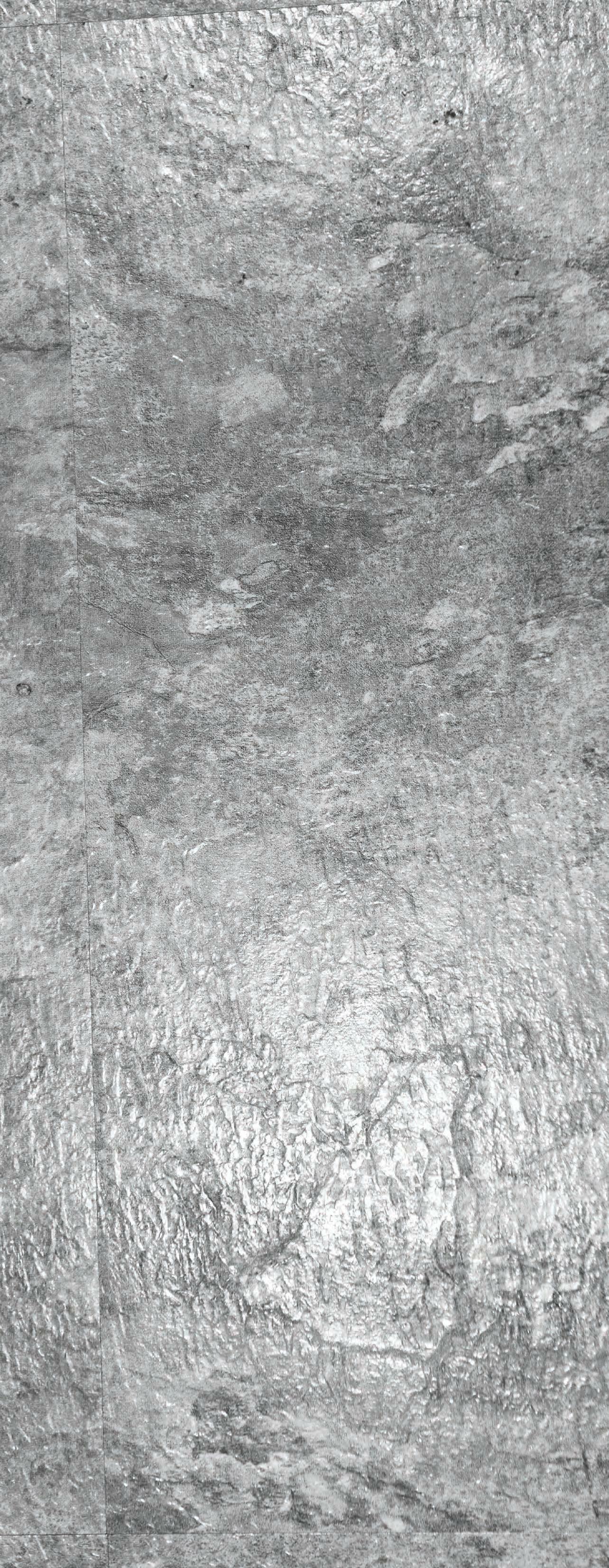
Boyd, Stephen B., W. Merle Longwood, and Mark W. Muesse. Redeeming Men: Men and Masculinities. Louisville: Westminister/John Knox Press, 1996.
Carter, Lawrence Edward, ed. Walking Integrity: Benjamin Elijah Mays, Mentor To Martin Luther King, Jr. Macon: Mercer University Press, 1998.
Colton, Elizabeth. The Jackson Phenomenon: The Man, the Power, the Message. New York: Doubleday, 1989.
Dyson, Walter. Howard University: The Capstone of Negro Education- A History, 1867-1940. Washington, D.C.: The Graduate School, Howard University, 1941.
Fluker, Walter Earl and Catherine Tumber, eds. A Strange Freedom: The Best of Howard Thurman on Religious Experience and Public Life. Boston: Beacon Press, 1998.
Howard University Bulletin, 1939.
Jones, Edward A. Candle In the Dark: A History of Morehouse College. Valley Forge, Pa.: Judson Press, 1967.
Kapur, Sudarshan. Raising Up a Prophet: The African- American Encounter With Gandhi. Boston: Beacon Press, 1992.
Lincoln, C. Eric. Race, Religion, and the Continuing American Dilemma. New York: Hill and Wang, 1999.
Logan, Rayford. Howard University: The First Hundred Years, 1867-1967. New York: New York University Press, 1969.

McClendon, James William, Jr., Ethics: systematic Theology, vol. 1.
Mays, Benjamin Elijah. Born To Rebel: An Autobiography. New York: Charles Scribners and Sons, 1971.
Annual Report, 1938-1939, The School of Religion, Howard University, Washington, D.C., 1939.
Mitchell, Mozella, ed. The Human Search: Howard Thurman and the Quest for Freedom. New York: Peter Lang, 1990. Musser, Donald and Joseph Price, ed. A New Handbook of Christian Theologians. Nashville: Abingdon Press, 1996.
Murphy, Larry. God and Human Freedom. Richmond: Friends United Press, 1983.
Nelson, William Stuart, ed. The Christian Way In Race Relations. New York: Harper and Brothers, 1948.

Newby, Idus A. Black Carolinians: A History of Blacks in South Carolina from 1895 To 1968. Columbia: University of South Carolina Press, 1973.
Paris, Peter J. Black Religious Leaders: Conflict in Unity. Louisville: Westminster/John Knox Press, 1991.
Pollard, Alton B. Mysticism and Social Change: The Social Witness of Howard Thurman. New York: Peter Lang, 1992. Russell, Dick. Black Genius and the American Experience. New York: Carroll & Graf Publishers, 1998.
Smith, Luther E. Howard Thurman: The Mystic as Prophet. Washington, D.C.: University Press of America, 1981.
Thurman, Howard. With Head and Heart. The Autobiography of Howard Thurman. New York: Harcourt Brace Jovanovich, 1979.


Wilmore, Gayraud, ed. African American Religious Studies: An Interdisciplinary Anthology. Durham: Duke University Press, 1989.
Choosing the right college is an important decision. And we know you have certain expectations. You don’t need to lower those expectations to work toward the career you want at an affordable cost.


Maybe you’re paying for college out of your own pocket, and you want to save on the first two years of your bachelor’s degree. Maybe you’re interested in entering the workforce quickly, but you’re unsure of the direction you should take. Whatever questions you have, Piedmont Technical College can help you find the path to a successful future.

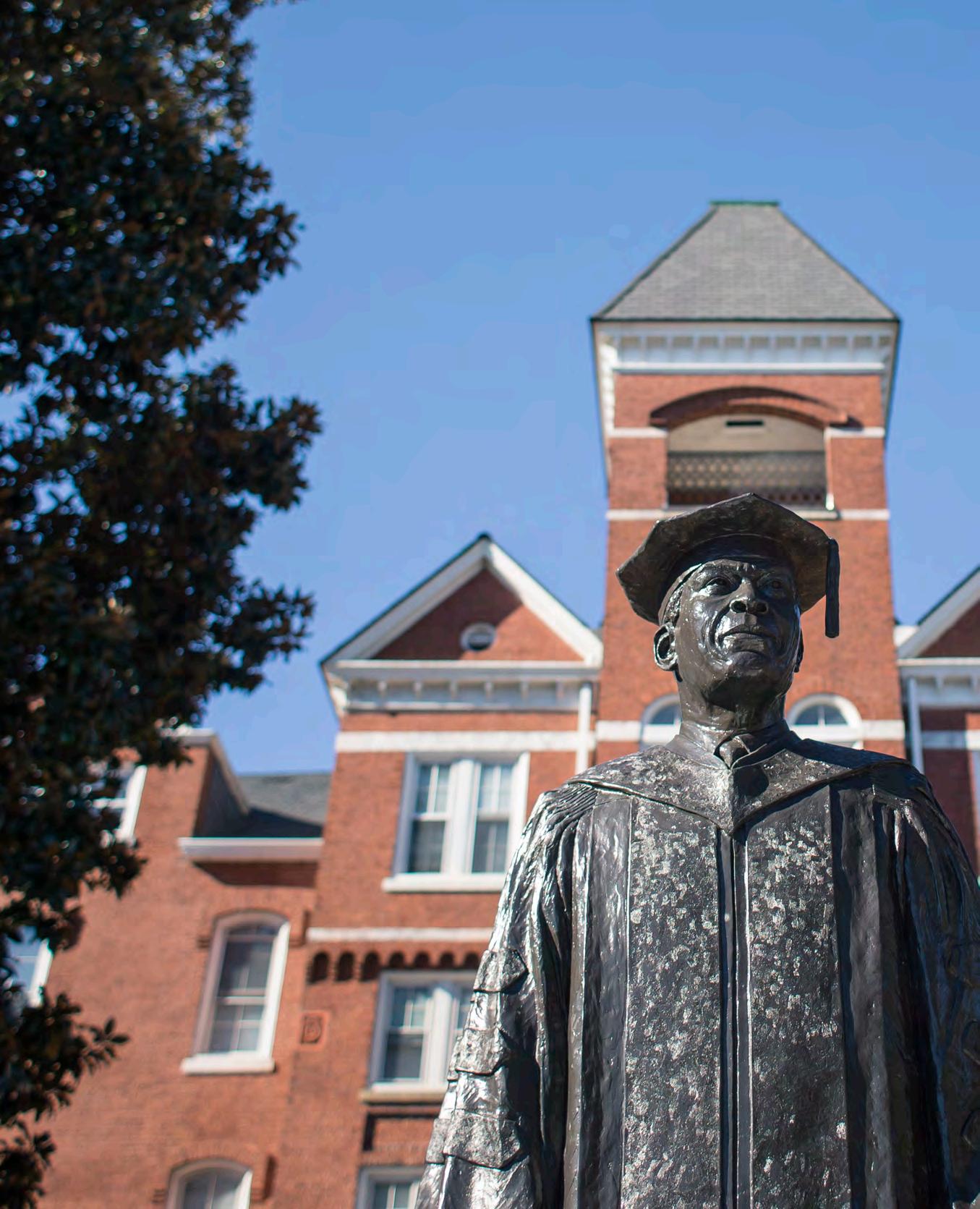

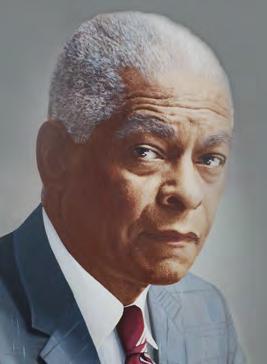
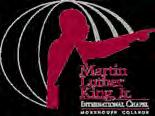


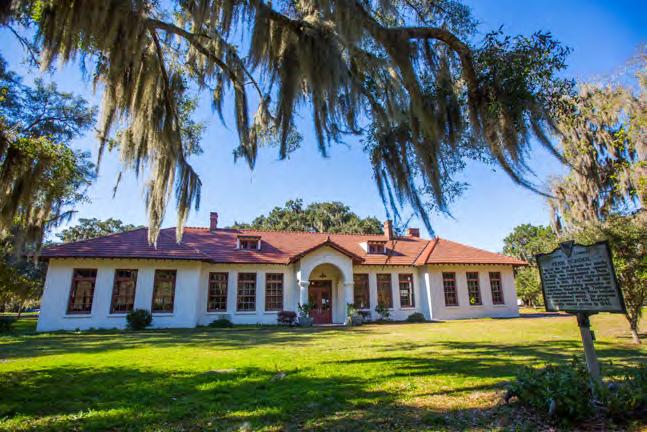
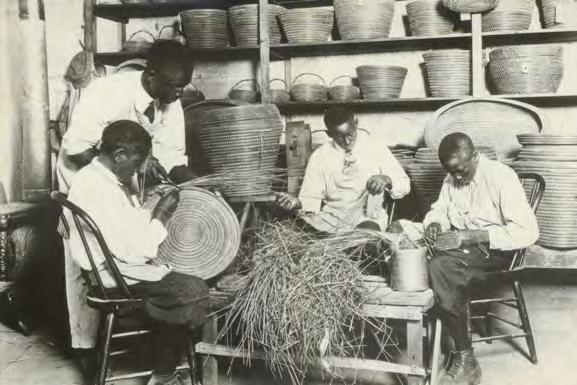
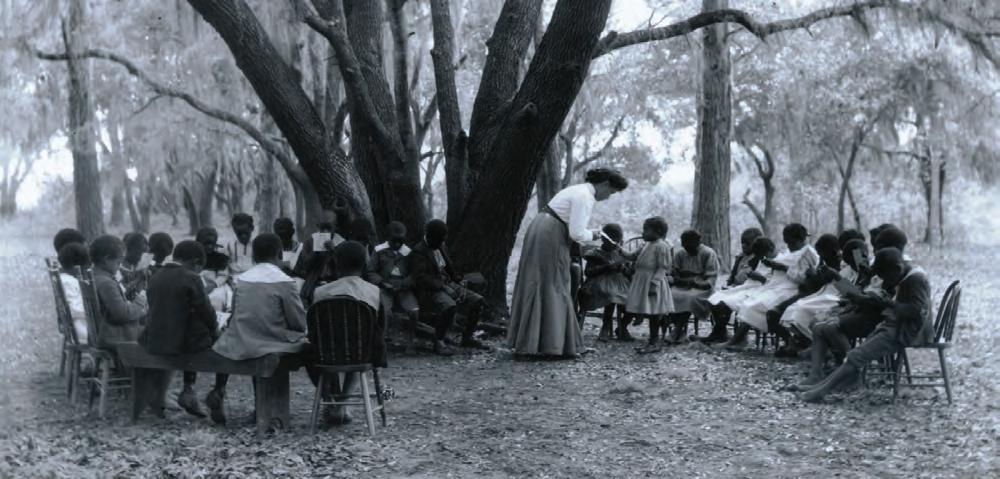
Sadie M. Gray was born August 5, 1900 in Gray, Georgia. She was the daughter of James Seaman Gray and Emma Frances Blount Gray. Her paternal grandfather was James Madison Gray, a prominent white landowner in Jones County, Georgia who founded the city of Gray, Georgia in the 1850s. She was from large family. She had four older brothers and four older sisters. Two of her siblings would become professors at Paine College in Augusta, Georgia. Her brother Emory would enter the dentistry.
She would attend Paine College in Augusta, GA and later earn a bachelor’s degree (1924) and Master’s degrees (1931) in Sociology at the University of Chicago’s Department of Social Service Administration. Following her graduation from the University of Chicago she took a position teaching at South Carolina State College in Orangeburg.



In 1925, Benjamin Elijah Mays returned to State College to teach English after earning an M.A. from the University of Chicago. Benjamin and Sadie were both on staff at State Col lege during the 1925-26 academic year and began a courtship during this period. After months of courtship, they married on August 9, 1926. They moved to Tampa, Florida from 1926-28 where she was a social worker for the Nation al Urban League. They then moved to Atlanta, Georgia in 1928 where she served as a social worker for the Georgia Study of Negro Child Welfare and taught at the Atlanta University School of Social Work. Her and her husband would attend graduate school at the Universi ty of Chicago where she would earn a master’s degree from Department of Social Service Administration. In 1934, her husband began a six year term as dean of religious studies at Howard University. During this period she was a social worker at the National Youth Ad ministration, and also taught at Howard University. Her husband was offered the presidency of Morehouse College on March 10, 1940 and inaugurated as the sixth president on August 1, 1940. He would serves as president of Morehouse Col lege from 1940 to 1967. She taught at Spelman College during this time and was a frequent lecturer on social topics in Atlanta, focusing often on women’s issues. She would later work to es tablish the Atlanta Association for Convalescent Aged Persons and serve as its first president. This non-profit organization would open Happy Haven, a nursing home for the elderly black residents of Atlanta. Mrs. Sadie G. Mays was admitted to Hap py Haven Nursing Home during the summer of 1969 and she passed away there on October 10, 1969. The nursing home was renamed the Sadie G. Mays Memorial Nursing Home on Decem ber 20, 1972, in honor of her memory. It is now the Sadie G. Mays Health and Rehabilitation Center in Atlanta, GA.


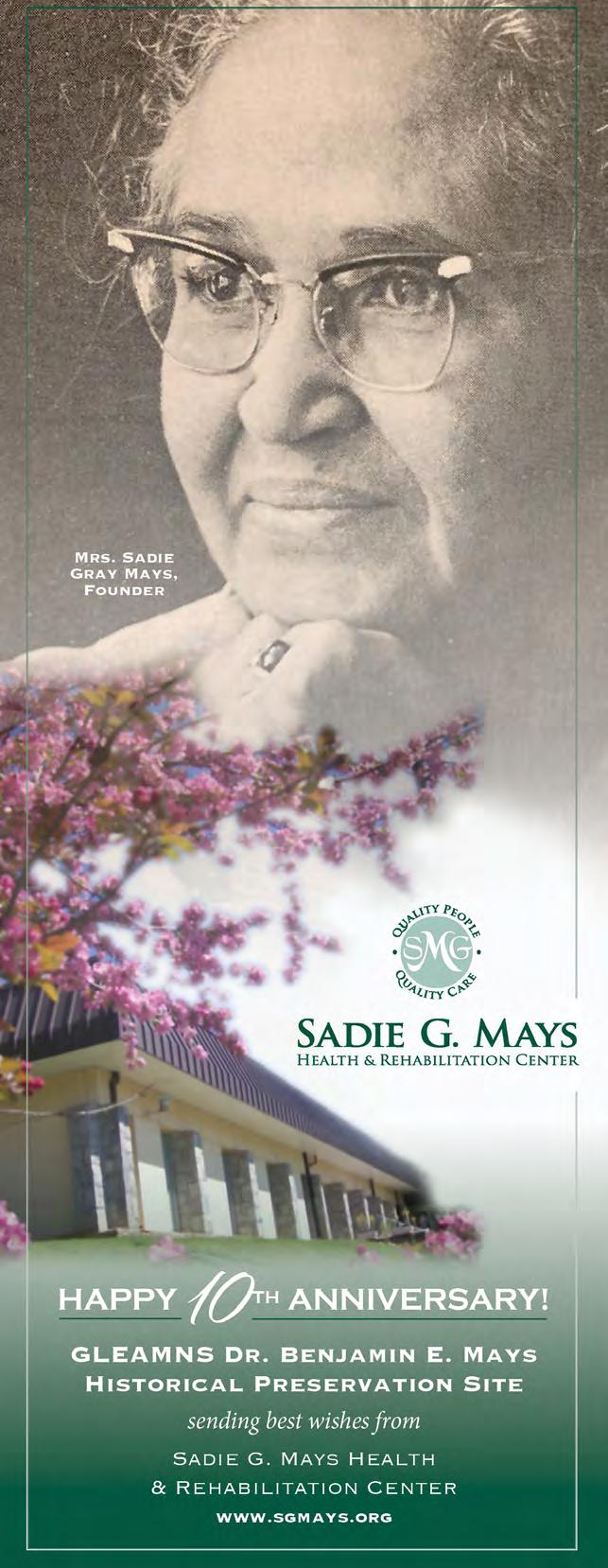

It is not your environment, it is you - the quality of your mind, the integrity of your soul and the determinatioln of your will that will decide your future and shape your life.
In June 2010, the Andrew Young Foundation of Atlanta sent a film crew to the Mays Historic Site to partially film Change in the Wind. This one hour and forty-five documentary is a fascinating, never before told story about the secret, non-romantic, eight- year relationship of Dr. Benjamin Mays and Margaret Mitchell, author of Gone with the Wind. The film crew also was escorted to Epworth for filming. Dr. Joseph Patton and Loy Sartin were excited to attend the premier showing in Atlanta in August of 2010. Copies of the popular film are available for sale at the Mays Historic Site.
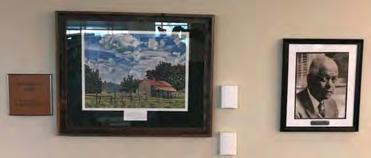
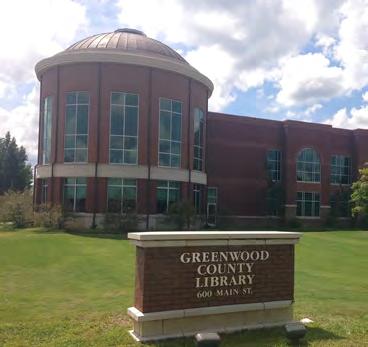
In September 2010, the Mays Historic Site was pleased to learn that, at its request, the Greenwood Library Board approved the dedication of the new library’s reference area as the Dr. Benjamin E. Mays Reference Area. Dr. Mays’ great niece, Dr. Marshalyn Yeargin-Allsopp of Atlanta, accepted the dedication certificate at a brief ceremony. (We note that back in the 1950s – 1960s, there existed a Benjamin E. Mays Branch of the library on Tompkins Street in Greenwood).
Mr. Samuel P. Long, Jr., a proud US Army veteran of New Jersey, classmate of Martin Luther King, Jr., visited the Mays Historic Site for the first time in April 2011 just before it officially opened on Apr 26, 2011. Mr. Long was married by Martin Luther King, Jr. in 1948 after graduating with the civil rights giant in the famous Morehouse Class of 1948. He married Ms. Ruth Bussey on August 23, 1948. Up in his nineties, Mr. Long was ecstatic and overjoyed about being at the site dedicated to his revered and legendary college president, and he spent several hours going through the museum soaking up every photo and word narrative about Dr. Mays. He told several stories of his relationship with Martin Luther King, Jr., but the most memorable one was the story of how he was frantic to find a replacement official to marry him when the original official cancelled due to an emergency. Mr. Long reached out to Martin Luther King, Jr. who had already been ordained as a minister to marry him, and it was the source of much talk over the years at Mr. Long’s family get togethers! On November 4, 2017, Mr. Long at age 95 again visited the Mays Site to take in the unveiling of the beautiful bronze statue of Dr. Benjamin E. Mays. We are sad to say that Mr. Long passed away on October 28, 2018 but are so happy that he was able to visit the site twice during his long and memorable life.
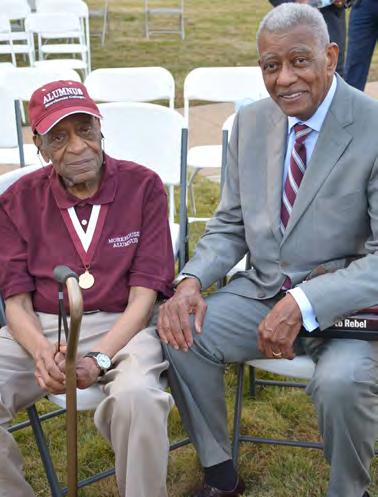
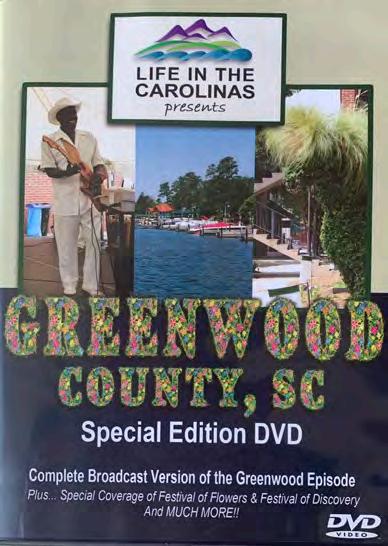
Executive Producer Carl White of Life in the Carolinas visited Greenwood in 2011 to film the Benjamin E. Mays Historical Presentation Site as part of his film called, Life in the Carolinas Presents Greenwood County, S.C. It also features clips about S.C. Festival of Flowers, Uptown Greenwood, Piedmont Technical College, S.C. Festival of Discovery, Lander University, Greenwood Genetic Center, Lake Greenwood, the Greenwood Community Theater, among others. It’s a nice little film to watch about all things Greenwood and copies are available at the Mays Historic Site.
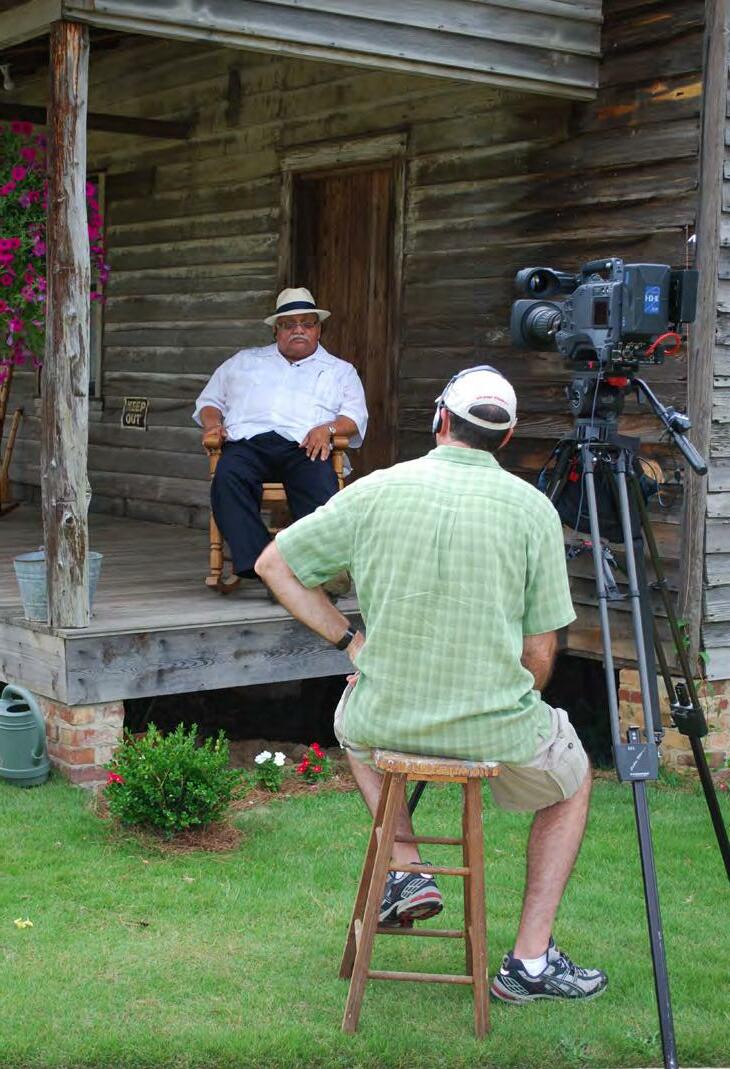
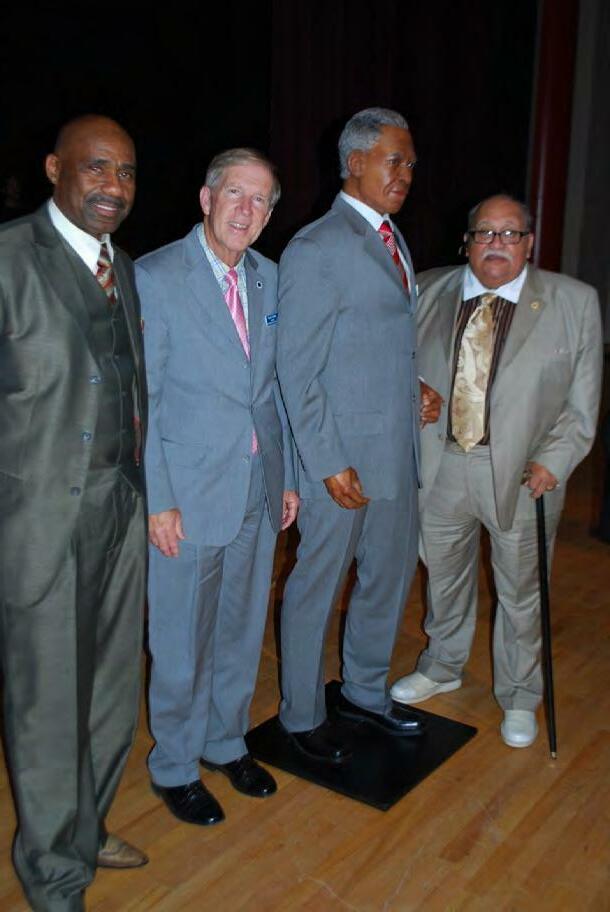
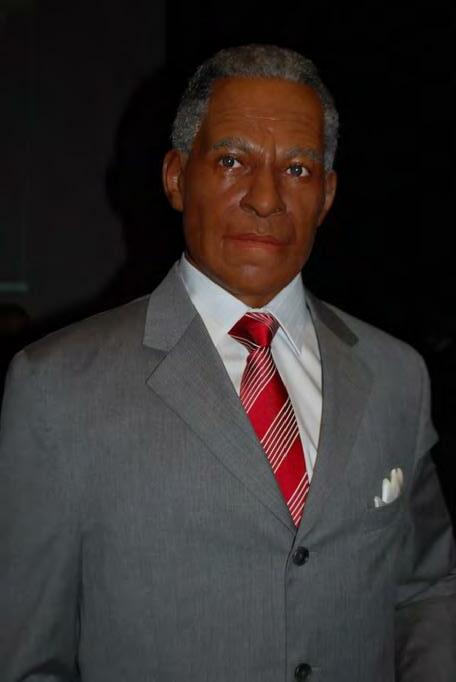
Culture and history abound at the National Great Blacks In Wax Museum in Baltimore, MD with the help of more than 150 life-sized, life-like wax figures. AS ONE OF THE ONLY WAX MUSEUMS IN THE NATION DEDICATED TO THE PRESERVATION OF AFRICAN AMERICAN HISTORY, THE GREAT BLACKS IN WAX MUSEUM OFFERS ONE OF THE MOST ENLIGHTENING AND EDUCATIONAL EXPERIENCES AROUND.
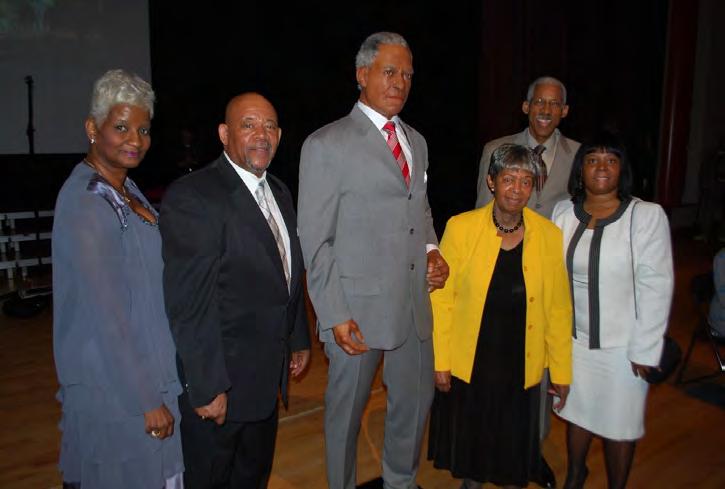
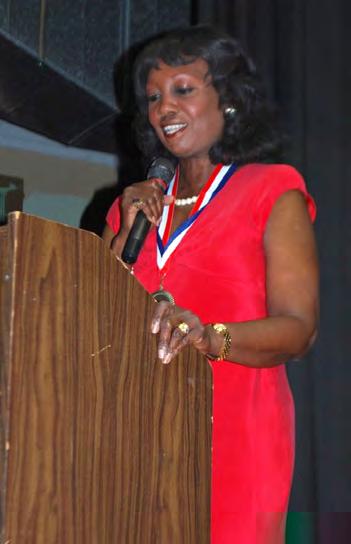
On April 20, 2013 the National Great Blacks in Wax Muse um hosted a wax figure unveiling ceremony and VIP re ception at Morgan State University in the Carl J. Murphy Fine Arts Center Gilliam Concert Hall. The event theme, “Four Educators for Uplift” featured the unveiling of four life-sized, life-like wax figures honoring four pioneering educators: Dr. Mary McCloud Bethune, Dr. Benjamin E. Mays, Dr. Benjamin Arthur Quarles, and Dr. Freeman Hrabowski III. The presentation of Dr. Benjamin E. Mays was conducted by Michelle E. Smith, Great-great Niece of Dr. Mays. The GLEAMNS Dr. Benjamin E. Mays His torical Preservation Site was represented by Dr. Joseph Patton, CEO of GLEAMNS Human Resource Commission, Loy Sartin, Director of the Mays Site, and Rev. Alvin Deal.
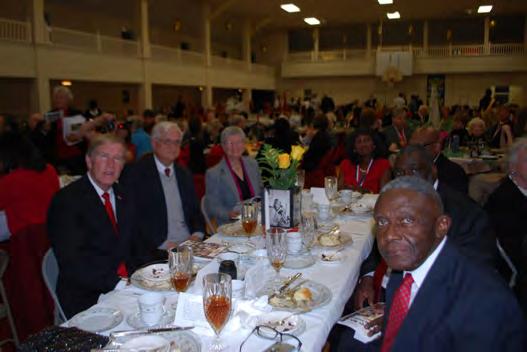
The Ninety Six Hall of Fame first started in 2011 with 50 inductees, and with the exception of 2012, there have been 10 members inducted every year since then. Dr. Benjamin E Mays was the very first person to be selected for the Ninety Six Hall of Fame. He was inducted into the hall in Feb 2011
 Dr. Marshalyn Yeargin-Allsopp, great-niece of Dr. Benjamin E. Mays, accepting the prestigious award.
Dr. Marshalyn Yeargin-Allsopp and Senator Floyd Nicholson
Dr. Marshalyn Yeargin-Allsopp, great-niece of Dr. Benjamin E. Mays, accepting the prestigious award.
Dr. Marshalyn Yeargin-Allsopp and Senator Floyd Nicholson
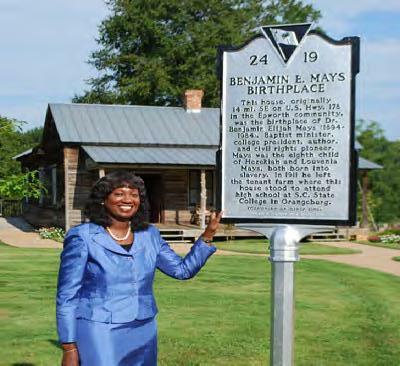

On September 8, 2012, the new S.C. marker for Dr. Benjamin E. Mays was unveiled at the Mays Historic Site. It was placed near the sidewalk where visitors can read about his extraordinary life prior to touring the birth home and the museum. The unveiling was a remarkable event and was attended by the Morehouse Class of 1961 and many members of the Greenwood community. Dr. Marshalyn Yeargin-Allsopp, Dr. Mays’ great niece from Atlanta, spoke about how proud she was of her uncle. Dr. Richard Hope, president of the Morehouse Class of 1961, also spoke about his close association with the incomparable Dr. Benjamin E. Mays. The new marker contains more language than the original S.C. Mays marker that still stands at the original site of his birth home on U.S. highway 178 in the Epworth Community, about 14 miles SE of the Mays Historic Site.

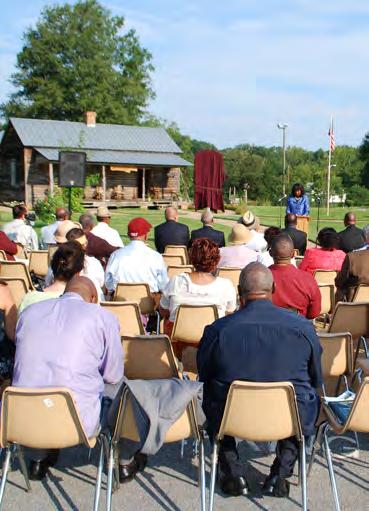
From September 7 – 8, 2012, the Mays Historic Site was honored to host the 51st annual reunion of the Morehouse graduating class of 1961. The president of the Class, Dr. Richard Hope, grandson of former Morehouse College President Dr. Richard Hope, attended along with his wife, Alice. (It was Dr. Hope who, in 1920 after Benjamin Mays graduated from Bates College, recruited him to teach mathematics at Morehouse!). Dr. Charles Willi, president of Martin Luther King’s Class of 1948, also attended. At the unveiling of the new S.C. Mays marker on Sep 8th, Dr. Richard Hope spoke about the significant meaning it had for him to have attended Morehouse College and to visit the Mays Historic Site dedicated in honor of his former beloved college president, Dr. Benjamin E. Mays.
The Class of ’61 was truly excited to visit for the first time Dr. Mays’ birth home which had been rescued from its use as a hay barn in Epworth. Class members had effusive and eloquent comments about the Mays Museum which contains so many photos and artifacts of their beloved and distinguished college president. After a reception in the museum’s theater, Loy Sartin, director/ curator of the Mays Historic Site, treated the men and many of their wives to a tour of Epworth and took photos of them standing next to the S.C. historic marker at the original site of the birth home on US 178. Loy then gave the class a tour of the Phoenix Community and related facts about the Phoenix Riot which truly made it come alive in the minds of the class members who had read Dr. Mays’ account of the mob that confronted his father in November 1898.
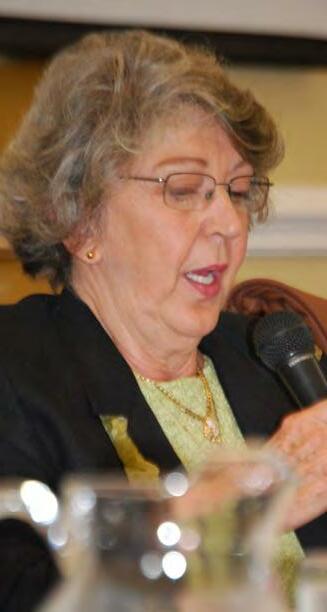

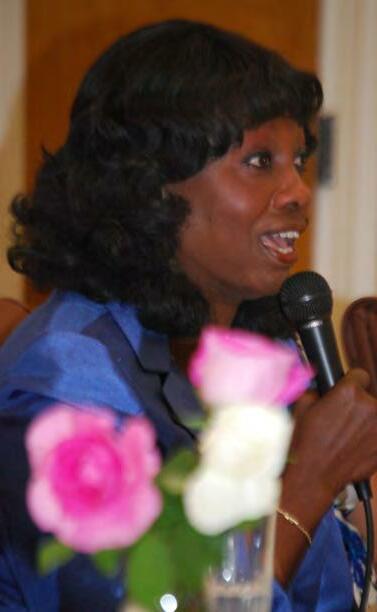

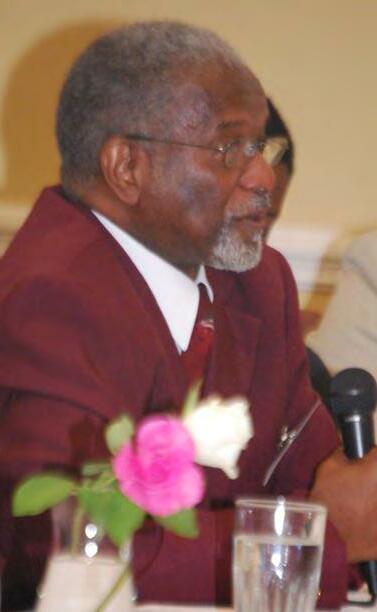
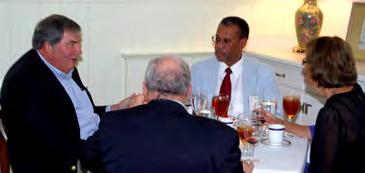


On Saturday, September 8th, the Class of ’61 attended the premier showing of S.C. ETV’s new film, Born to Rebel, Driven to Excel, uptown in Greenwood’s Arts Center. It was a dramatic film which had been partially filmed at the Mays Site and in Epworth. Following the film, one of the class members, Dr. George Grant, who had been one of the prestigious “house boys” for Dr. and Mrs. Mays, participated in a panel discussion about the legendary president of Morehouse College. Many distinguished panelists participated including Dr. Mays’ eulogist, Dr. Samuel Dubois Cook; Dr. Mays’ secretary, Mrs. Sally Warner; Dr. Charles V. Willie; Dr. Mays’ great niece, Dr. Marshalyn Yeargin-Allsopp; and Dr. Vernon Burton who wrote the foreward to Dr. Mays’ autobiography, Born to Rebel. Following this thought-provoking discussion, everyone was treated to good food and a chance to mix and mingle with local folks
At the same venue and time, a book signing was held by the authors of two new Mays biographies: Benjamin Elijah Mays, Schoolmaster of the Movement by Dr. Randal Jelks; and The Magnificent Mays by Dr. John H. Roper, Sr. Later that evening, the class reunion was capped with a delicious dinner in their honor. Hosting the reunion was truly one of the most memorable events that have occurred at the Mays Historic Site and we look forward to hosting the Morehouse Class of ’61 again!
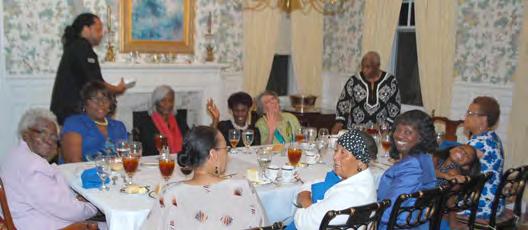

This film by S.C. Educational Television was partially filmed at the Mays Historic Site and in the Epworth Community where Dr. Benjamin E. Mays was born and reared. SC ETV named the film at the suggestion of the director of the Mays Site, Loy Sartin, who worked with ETV’s producer/ director, Tabitha Safdi, to coordinate the film’s production. Narrated by Harry Belafonte, it is a wonderful film about Dr. Mays’ early life and the struggles he faced growing up in the segregated South. Filmed also in Atlanta where Dr. Mays spent most of his life, it is full of fascinating and interesting interviews with personalities such as baseball great Hank Aaron and his wife, Billye; Ambassador Andrew Young; Dr. Samuel Dubois Cook; Morehouse College president, Dr. Robert Franklin; and Dr. Mays’ great niece, Dr. Marshalyn Yeargin-Allsopp. Copies of the film are available at the Mays Historic Site.
On June 4, 2014, US Congressman James “Jim” Clyburn visited the Mays Historic Site for a tour and to conduct a book signing for his new book, Blessed Assurances. A table was set up in the front room of the museum for Congressman Clyburn and his wife, Emily, as many people lined up to meet and greet the famed congressman. He was astonished at the professional, high quality of the museum in honor of a man whom he knew well, Dr. Benjamin E. Mays, with whom he also shared the same alma mater, S.C. State College, at Orangeburg (Clyburn earned his undergraduate degree and Dr. Mays graduated high school and later taught English at SC State College 1925-26). The Index Journal covered this special visit and it was headlined in the Index edition of June 5, 2014.
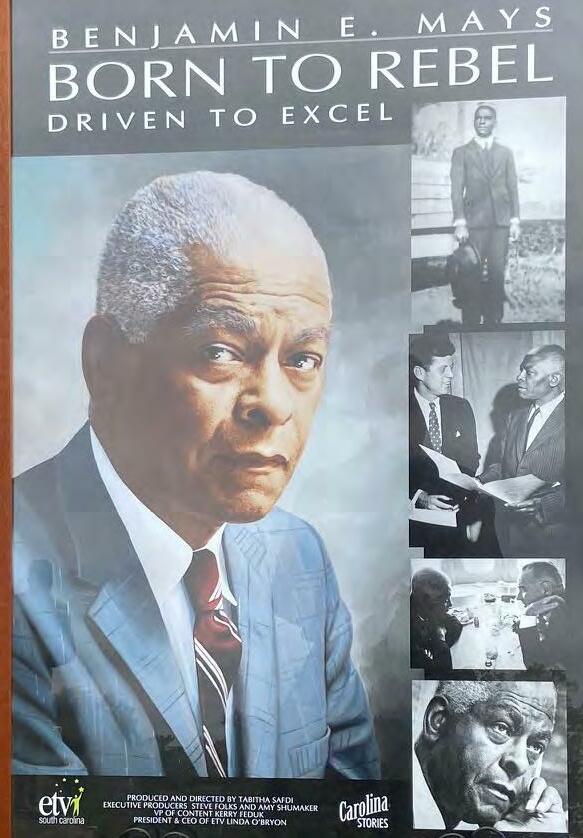
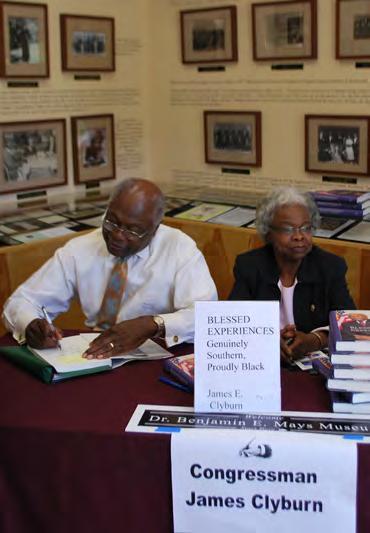
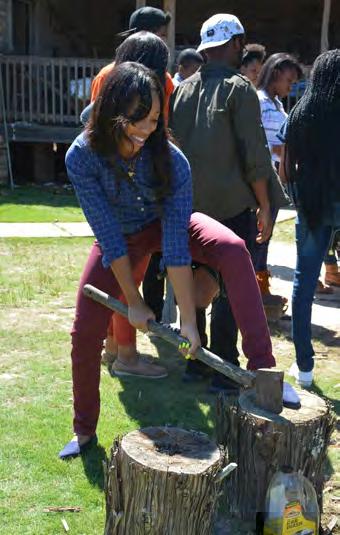
On September 14, 2015, the Benjamin E. Mays High School of Atlanta visited the Mays Historic Site. This was one of the most memorable visits that the Site has hosted during the last ten years. About 50 students arrived in a huge bus and were immediately treated to a tour of Dr. Mays’ birth home. As they came out the rear of the home, many of the students participated in chopping wood, washing clothes in the wash pot’s boiling water, hanging clothes on the cloths line, picking vegetables, and taking photographs in the educational cotton field. Since most of these students were city kids, they reveled in being at the site which prides itself in maintaining an appearance of a 1900’s sharecropper’s homestead. After a visit to the one-room schoolhouse reminiscent of the one that Dr. Mays’ attended, complete with blackboards containing student assignments, the students enjoyed the museum with stories of how Dr. Mays struggled with his father just to get out of Greenwood to attend high school at SC State College in Orangeburg, how he became a star student there, and the heartwarming story of how he met his first wife, Ellen, at high school, among others. Our State Senator Floyd Nicholson presented the students a beautiful framed print of Dr. Mays’ birth home, and encouraged the students to work hard to be good students and live lives worthy of the legendary Dr. Benjamin E. Mays.


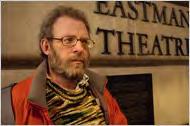

On Thursday, May 25, 2017 about 40 individuals visited the GLEAMNS Dr. Benjamin E. Mays Historical Preservation Site auditorium to attend a presentation by Dr. Peter Eisenstadt and Dr. Orville Vernon Burton on Dr. Benjamin E. Mays and Howard Thurman. Howard Washington Thurman (November 18, 1899 – April 10, 1981) was an influential African-American author, philosopher, theologian, educator, and civil rights leader. Benjamin Elijah Mays (August 1, 1894 – March 28, 1984) was an American author, minister, professor, orator, and leader in the Civil Rights Movements of the 1950s and 1960s. Mays and Thurman are two of the greatest Black theologians in 20th century America and shaped a generation Black theologians and preachers.
At the time of these lectures, Dr. Eisenstadt and Dr. Burton were working together to produce an edition of Dr. Benjamin E. Mays’ uncollected writings. In addition, they were hoping in the future to collaborate on a dual intellectual biography that compares the world views and ideas of the two great Black theologians, Dr. Thurman and Dr. Mays. Dr. Eisenstadt has since published a biography of Thurman entitled, Against the Hounds of Hell: A Life of Howard Thurman (Feb 2021). Dr. Eisenstadt was Associate Editor of the Howard Thurman Papers Project and is an affiliate member of the Clemson University history department. In this work he offers a fascinating exploration of the life of this religious thinker and activist. Dr. Eisenstadt shared his insight that evening into the life of this 20th century giant in the Black church and Black theological academia. Dr. Burton equally provided insight into the life and religious thinking of Dr. Mays. Those in attendance were moved by the lives of these two iconic religious thinker and activists.
2017Excitement filled the air in Greenwood, South Carolina in the early days of November of 2017 as the GLEAMNS Dr. Benjamin E. Mays Historical Preservation Site prepared to unveil the long awaited statue of the native son and iconic Civil Rights leader. Visitor from all over the United States began arriving in Greenwood on Friday afternoon to attend the Saturday morning unveiling. The Mays family, friends, mentees of Dr. Mays, Alumni and faculty from Morehouse College – Bates College – the University of Chicago, and Howard University were making the journey to Greenwood. Visitors arrived in Greenwood that weekend with their attention set on attending a pre-unveiling event on Friday, November 3, 2017 at 5 in the evening. Lander University was co-hosting along with the Mays Site a panel discussion on Greenwood native and civil rights leader Dr. Benjamin E. Mays in the university’s Josephine B. Abney Cultural Center Auditorium. The panel discussion, titled “The Life and Legacy of Dr. Benjamin E. Mays,” was part of a weekend-long celebration being organized by the Mays Site, and is co-hosted by Lander’s Department of History and Philosophy. Contributors included historians and scholars, as well as some of Mays’ students and mentees. Panelists include: Dr. Orville Vernon Burton, twice nominated for the Pulitzer Prize in History and one of the nation’s leading historians; Dr. Zachery Williams, a Greenwood native and associate professor of African American history at the University of Akron; Dr. Otis Moss Jr., pastor, theologian and mentee of Mays; Dr. Lawrence E. Carter, professor of religion and dean of the Martin Luther King Jr. Chapel at Morehouse College; and Dr. John H. Roper Sr., Mays biographer and history professor at Coastal Carolina University.
Led by moderator Christopher Thomas, director of the GLEAMNS Dr. Benjamin E. Mays Historical Preservation Site, each panelist provided insight into the life of Dr. Mays. The audience was captivated by these scholars as they shared their knowledge of the life and legacy of Dr. Mays, and some shared intimate antidotes concerning their personal relationships with the former President of Morehouse College. Those in attendance were often spellbound during the ninety minute panel discussion. The event ignited flames of hope, pride, and optimism throughout Greenwood County. It motivated local citizens to rename a school in honor of Dr. Mays, and to create the Dr. Benjamin E. Mays Endowed Chair of the History and Philosophy Department at Lander University. It was an awe-inspiring evening at Lander University to kick-off the weekend of statue unveiling celebrations.

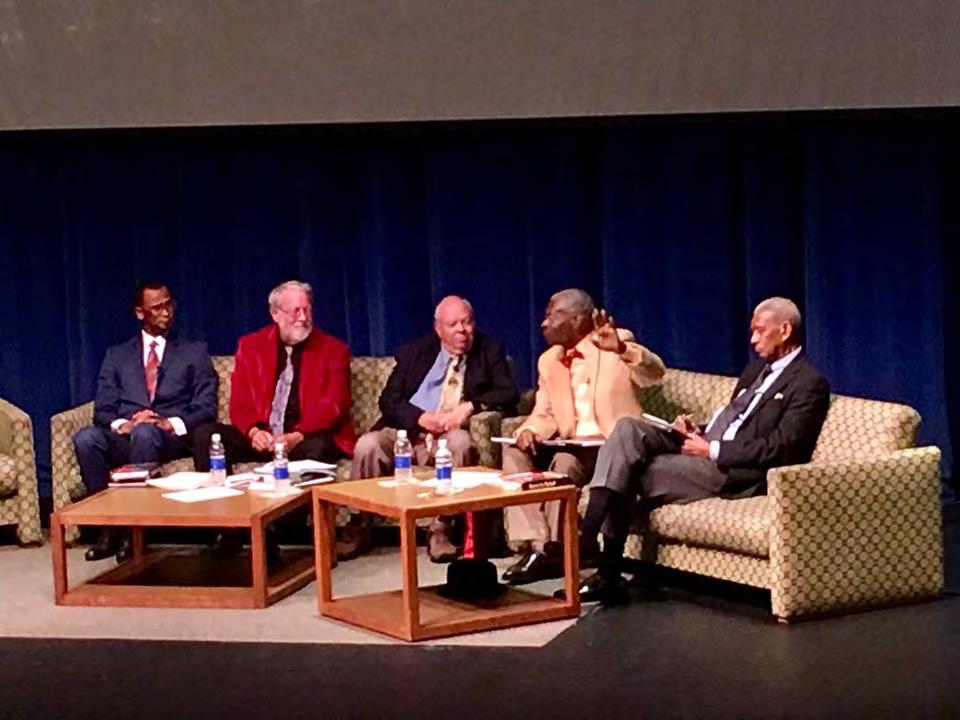
AFTER ALMOST A DECADE OF PLANNING, FUNDRAISING, SITE PREPARATION, PROCURING A SCULPTURE ARTIST, SELECTING GRANITE, DRAFTING LANGUAGE FOR PLAQUES, AND MONTHS OF EVENT PLANNING, THE LONG AWAITED UNVEILING OF THE STATUE OF DR. BENJAMIN E. MAYS HAD FINALLY ARRIVED.
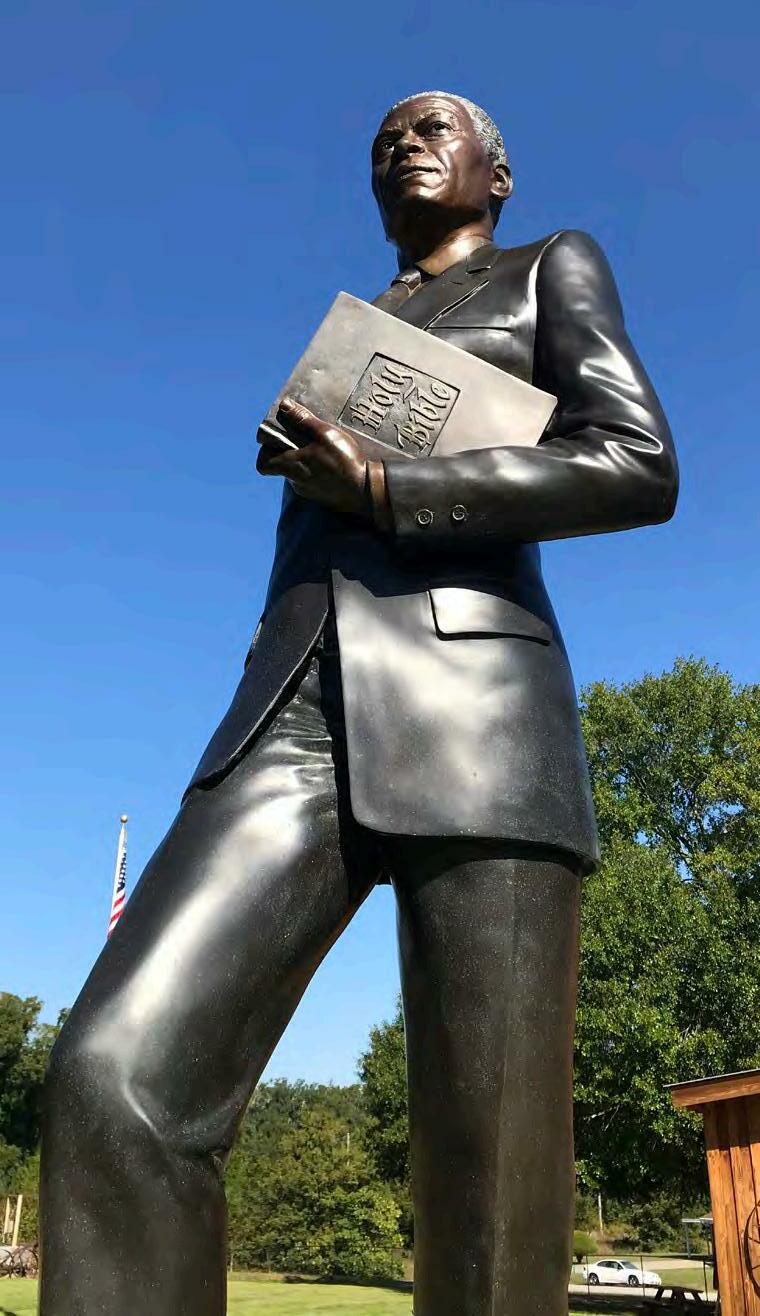
she hung on the walls of their home. His life had come full circle and Dr. Mays was home again in Greenwood County – facing home to Epworth.
Mays family members from Atlanta, GA, Cleveland, OH, Las Vegas, NV, Los Angeles, CA, Charlotte, NC, and other US cities came in anticipation of this historic event. Fellow alumnus of Bates College Reginald Floyd (’86), Benjamin Robinson (’86), a Mays Scholar while at Bates, Alicia Hunter Warner (’94), John Amols (’72), and Sally Ehrenfried (’89) all came to witness the unveiling of the statue of Dr. Benjamin Elijah Mays (’20). As well as a contingency of alumnus from the University of Chicago and his beloved Morehouse College.
Designed and created by statue artist Jon Hair, the statue was unveiled November 4, 2017 at the GLEAMNS Dr. Benjamin E. Mays Historical Preservation Site, located a few miles from Epworth, where Mays was born in 1894. The statue facing directionally to the Epworth community of his birth and childhood. Facing to the original site of the home place where Dr. Mays experienced his first mob at the tender age of four, and also facing to the home place where his mother prayed for her children in her bedroom at night and inspired him with the pictures of great African American leaders that
He was known as “the schoolmaster of the movement” for “inspiring generations of African American students and clergy to develop their intellectual talents and calibrate their ethical compass in order to challenge injustice,” wrote University of Kansas historian Randal Maurice Jelks. One of Mays’ students at Morehouse was Martin Luther King Jr., who called Mays “my spiritual mentor and my intellectual father.” Samuel Dubois Cook, a former Mays student and the former president of Dillard University, once said that “Mays’s genius was as an inspirer and motivator as well as a transformer of young men.” A towering bronze image of Dr. Mays would now sit as the centerpiece of the historical preservation site named in his honor to inspire and motivate generations to come.
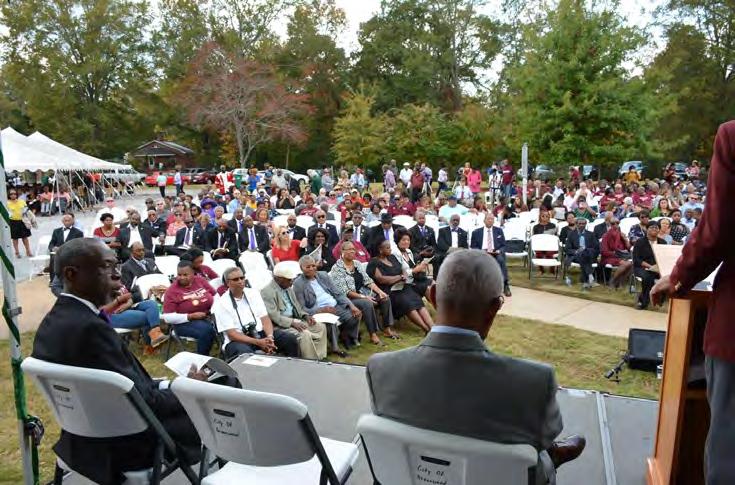
The Rev. Otis Moss, a Mays protégé, delivered the keynote address at the unveiling.
“We thank God for the life of Benjamin Elijah Mays, a prophet of freedom,” Moss told his audience. “He fought for freedom with every fiber of his
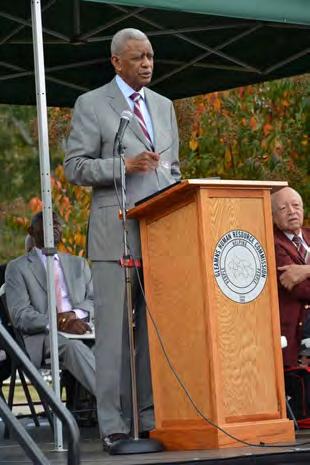
a life and a legacy, remembering the greatness of an individual who blessed this nation and the world.” “He was a prophet for freedom, an apostle for excellence,” Moss said. He eloquently elevated our reverence for Dr. Mays and his life and legacy.
A mentee of Dr. Mays, Rev. Dr. Grady Butler, and Dr. Lawrence Carter, Dean of the Martin Luther King, Jr. International Chapel at Morehouse College, also spoke at the dedication ceremony.


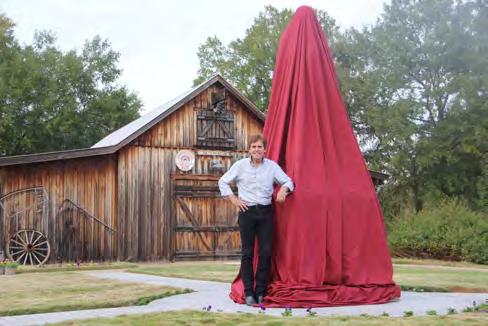


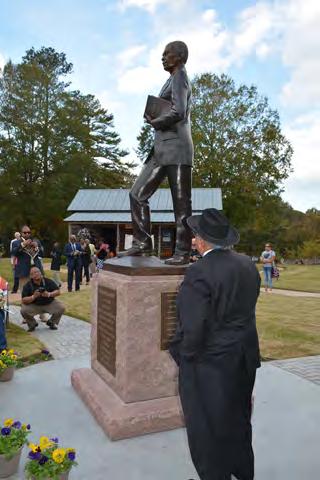
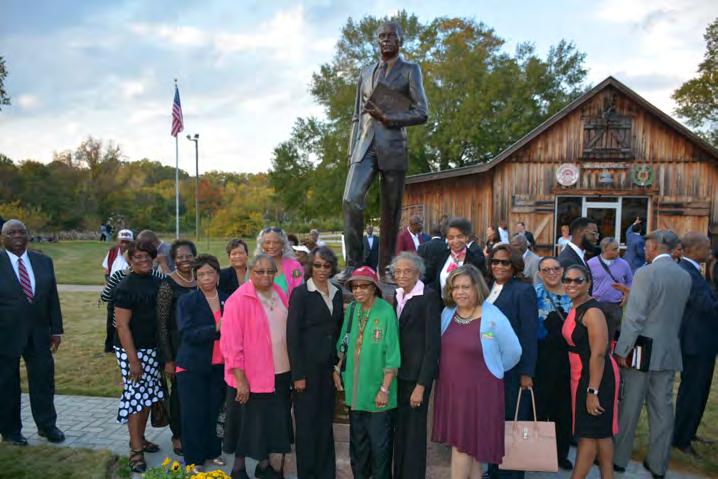
DR. JOSEPH PATTON, FORMER CEO OF THE GLEAMNS HUMAN RESOURCE COMMISSION, AND A DRIVING FORCE BEHIND THE ESTABLISHMENT OF THE MAYS SITE HAD THE HONOR OF UNVEILING THE STATUE. AN EMOTIONAL MOMENT FOR MOST WHO WERE IN ATTENDANCE. SOME CLAPPED. SOME RAISED THEIR VOICES IN JOY. OTHERS SIMPLY WERE IN AWE. SALLY WARNER, FORMER SECRETARY OF DR. MAYS, SAT WEEPING. Loy Sartin, Director Emeritus of the Mays Site, and the only person in American history to perform the work of a founding curator of a historic site honoring Dr. Benjamin E. Mays said, “It’s just a great thing, we’ve worked so long, about six years, to raise the funds and everything for the statue. I was so concerned that we get the face correct and I think we got it really good. So I think it’s something we can really be proud of.”
While difficult to put in words, something extraordinary happened that afternoon at the Mays Site. Something that those in attendance will never forget.
DR. LAWRENCE CARTER, DEAN OF THE MARTIN LUTHER KING, JR. INTERNATIONAL CHAPEL AT MOREHOUSE COLLEGE CHRISTOPHER THOMAS, DIRECTOR OF THE GLEAMNS DR. BENJAMIN E. HISTORICAL PRESERVATION SITE, LOY SARTIN, DIRECTOR EMERITUS OF THE GLEAMNS DR. BENJAMIN E. MAYS HISTORICAL PRESERVATION SITE, DR. OTIS MOSS, JR., RETIRED CLERGYMAN AND MENTEE OF DR. BENJAMIN E. MAYS
REV. DR. GRADY BUTLER DR. ORVILLE VERNON BURTON REV. DR. OTIS MOSS, JR.
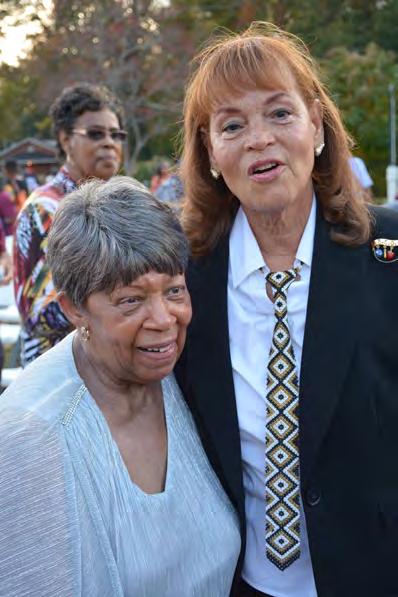



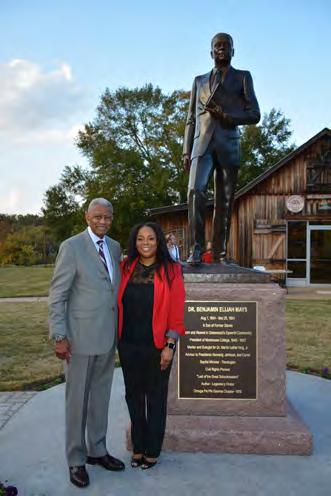

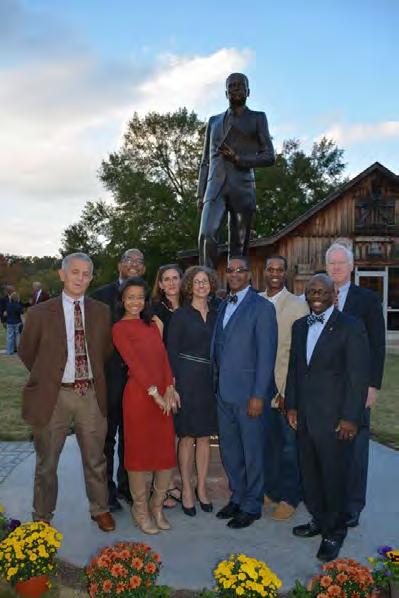
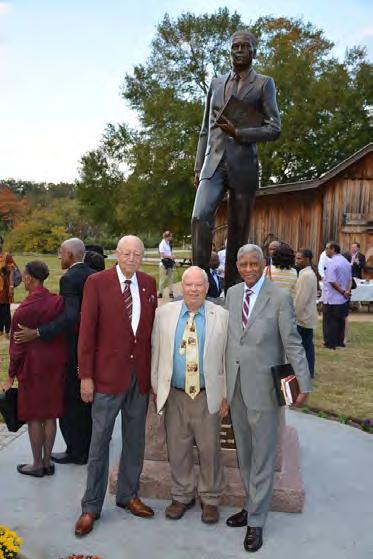
DELEGATION
 FROM BATES COLLEGE
REV. DR. OTIS MOSS, JR. AND SHUNNA JETER, CEO OF GLEAMNS HRC
MRS. BERNICE MAYS-PERKINS NIECE OF DR. MAYS WITH MS. CATHY LOVING FORMER SECRETARY OF DR. MAYS
FROM BATES COLLEGE
REV. DR. OTIS MOSS, JR. AND SHUNNA JETER, CEO OF GLEAMNS HRC
MRS. BERNICE MAYS-PERKINS NIECE OF DR. MAYS WITH MS. CATHY LOVING FORMER SECRETARY OF DR. MAYS

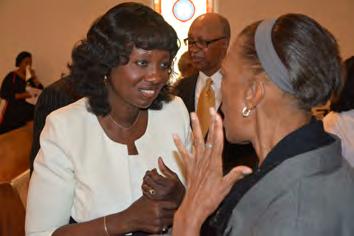
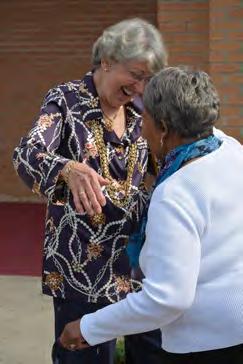

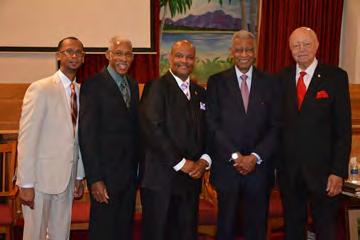
ON SUNDAY, NOVEMBER 5, 2017 THE FINALE OF A WEEKEND OF CELEBRATION WAS A WORSHIP SERVICE AT OLD MT. ZION BAPTIST CHURCH IN EPWORTH, SC.

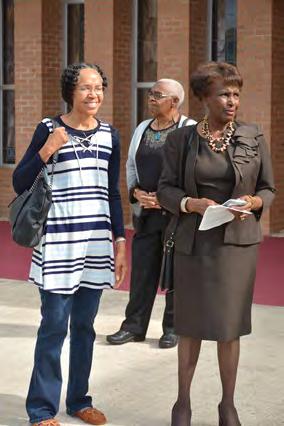

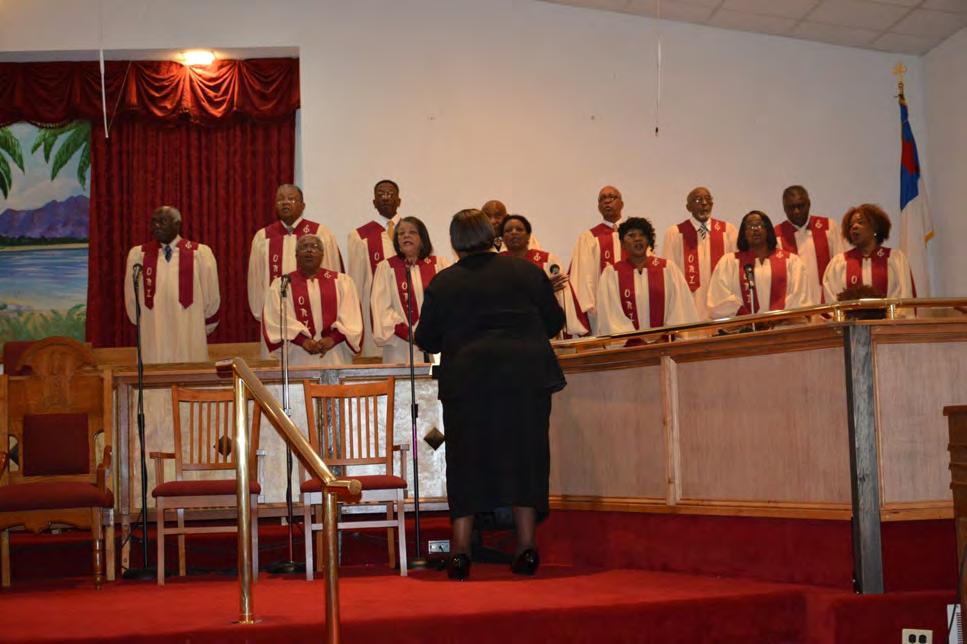

The destination was the childhood church of Dr. Benjamin Elijah Mays. Dr. Danny Webb, current pastor of Old Mt. Zion, graciously welcomed the community and out of town guests to worship with the congregation on this special occasion. So following the previous day’s unveiling of the long awaited statue of the civil rights icon – his family, friends, former students, mentees, fraternity brothers, and members of the Greenwood community went home to Epworth to the house of worship where Dr. Mays first experienced God. A former Mays era Morehouse student and mentee of Dr. Mays, the Rev. Dr. Otis Moss, Jr.,
Dr. Moss considered it an honor to preach where Mays had previously preached his first sermon before the age of ten. Mrs. Latisha Thomas and Mrs. Felicia Rhynes lead the congregation in praise and worship, and the Old Mt. Zion Baptist Church choir ministered to the congregation in song. The diverse and ecumenical crowd enjoyed the worship experience at Old Mt. Zion while reflecting upon the significance of the historic moment and weekend in Greenwood County, SC. The atmosphere following service was an atmosphere similar to the closing of a family reunion. Warm embraces, gratitude, and joyousness
The Uzee Brown Society of Choraliers visited the GLEAMNS Dr. Benjamin E. Mays Historical Preservation Site on September 7, 2018 and perform at the birth home of Dr. Mays. Uzee Brown, Jr. a native of Cowpens, S.C. and a graduate of Benjamin E. Mays High School in Pacolet, SC. Graduating as Valedictorian. Dr. Brown holds a BA degree from Morehouse College, a master’s degree in composition from Bowling Green State University, and master and doctoral degrees from the University of Michigan. Brown’s diverse career as an educator, singer/performer, composer/ arranger, and choir director has taken him to more than twenty-six countries, including Italy, Germany, France, Switzerland, Poland, Russia, Luxembourg, Spain, , South America and the Caribbean, along with

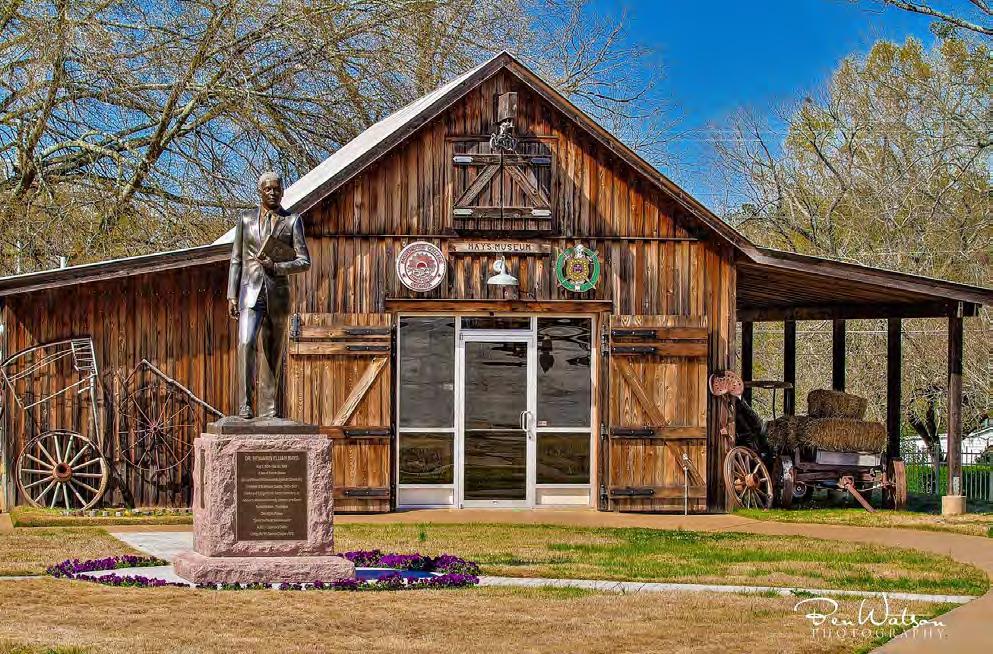

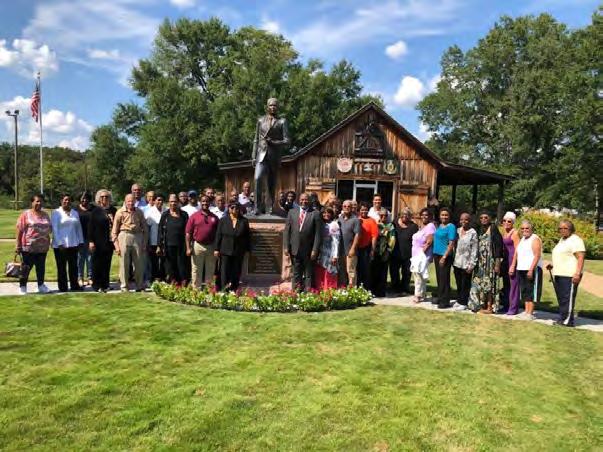
seven countries in Africa that, including South Africa, Nigeria, Ghana and Ethiopia. He was then chairman of the Department of Music at Morehouse College, previously served as chair of Music at Clark Atlanta University, and director of the historic Ebenezer Baptist Church Choir in Atlanta, GA. Brown is founder and director of the Uzee Brown Society of Choraliers, a choral ensemble comprised of some of the most gifted singers in metropolitan Atlanta. The group had come to South Carolina to perform at a benefit concert in Cowpens, SC and decided to include a visit to the Mays Site as part of their trip. It was a memorable visit from a group with some having deep personal ties to Dr. Mays, Morehouse College, and Spelman College.
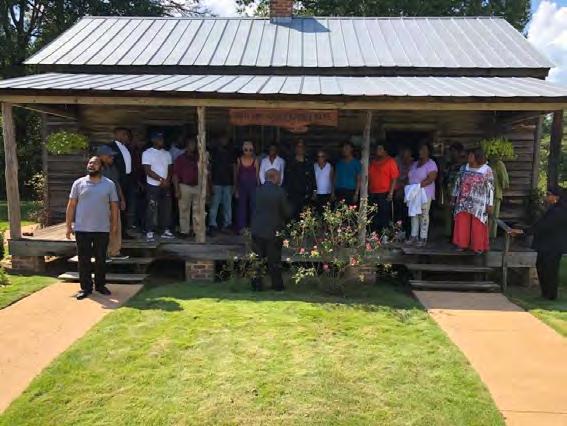
AS I HAVE SAID SO OFTEN I am one of Bennie Mays’ “boys.” I have been one of his “boys” since I was a kid in the rolling countryside and on the red hills of Griffin, Georgia, and I will be one of his “boys” until I die.

Dr. Mays had a love affair with the basic and perennial values of the human enter prise: excellence, decency, justice, non-vi olence, love, good will, reason, nobility, concern for others, compassion for hu man suffering, respect for the dignity and worth of every man, woman, and child, sensitivity to human needs, a heightened sense of personal and social responsibil ity, and the love of God. He was so many
things: prophet, scholar, educator, apos tle of social justice, champion of human excellence, author, humanist, humanitar ian, teacher, voice of the voiceless, a chief founder of the Civil Rights Movement and the Black Revolution, a major architect of the New South, inspirer, motivator, and transformer of youth, and peerless spokesman of the gospel of Jesus of Naz areth.
Dr. Mays was a hard taskmaster. I some times thought that it was easier to please God than Dr. Mays. His standards for him self and others were inordinately high, lofty, and demanding. Truly, they could never be fully satisfied--thank God. He kept us stretching, striving, aspiring, and always looking up.
er-pressures, he had supreme integri ty, character, and incorruptibility.

Bennie Mays taught us how to live. He also taught us how to die. Miss Cord eila Blount, his devoted niece, said to me the day of his death: “Bernie was so remarkable. He was remarkable in life. He was remarkable in the twilight of life and in death.” Yes, our beloved Dr. Mays lived with grace and dignity, and died with grace and dignity.
I have told him that the title of one of his books, Lord, the People Have Driven Me On, was a great misnomer. The Lord knows that Bennie Mays drove the people on. And I told him that Bennie Mays drove the good Lord on. He was always inexhaustible, creatively restless, irrepressible, tireless, always dreaming of new worlds to conquer, new mountains to climb, new rivers to cross, new tasks to tackle, new challenges to meet. Life, for him, could never be finished. No wonder that, in spite of the spate of books he wrote, he was working on three more when he died. And he always thought that his best book, on the Brown public school desegregation case of 1954, was yet to be written. He lived in the world of anticipation, and not simply in the world of memory. He lived in the creative world of hope. He died dreaming. He died aspiring to greater things and loftier heights. What a magnificent way to die! Dr. Mays was a daring, incurable, and incredible dreamer. Dreams were a central part of his longevity, productivity, mean ing, zest, and inspiration.
DR. MAYS WAS BORN FREE. HE LIVED FREE. HE DIED FREE Always cou rageous, he was a prophet to the core of his being--always emphasizing the creative tension between the “is” and the “ought,” promise and ful fillment, the Kingdom of man and the Kingdom of God. He never forgot the prophetic responsibility to speak “truth to power.” He was always his own man, always a man of great moral courage, rebellion, and affirmation. Fierce independence and individualism, nobility, and supreme integrity were hallmarks of his great life. “Never sell you soul” was a central theme and imperative of his teachings and life. His soul was never for sale to any body at anytime for any price. In a world of constant pressures and count
Even as he confronted the frailties of age and death, Buck Bennie was mighty tough. He made a game of wrestling with, and defying death. He was utterly defiant and outrageously uncooperative. More than once, he es caped the cold clutches of death, with the clarion call “I ain’t got time’ to die.” “I’m too busy serving my master.” Until the final encounter, he won every bat tle with death. This was so symbolic of the man. Dr. Mays was always a great fighter--whatever or whomever the foe.
Mrs. Sally Warner, his superb con fidante, great friend, and assistant, told him, after he had been in inten sive care at the hospital a few months ago, that she had called several peo ple. Alert and sharp as always, he got the message. As only Bennie Mays would and could say, he commented: “I fooled you, didn’t I?” He fooled all of us so many times.
“The time and place of a man’s life on earth are the time and place of his body,” said Howard Thurman, “but the meaning and significance of his life are as vast and as far-reaching as his gifts, his times, and the passionate commit ment of all his powers can make it.”
“DREAMS
DR. MAYS TOUCHED, ENRICHED, INSPIRED, educated, motivated, transformed so many lives--black and white, rich and poor, male and female, learned and untutored, Gentile and Jew, Protestant and Catholic, Northerner and Southerner, religionist and secularist. So many owe him so much.
Dr. Mays lived a long life. But longevity has no intrinsic merit. As Dr. Mays reminded us so often, it is not how long but how well. It is not the quantity of years but the quality of service that counts. Dr. Mays gave to life the highest and the best we can give to life: the gift of self. He followed his own advice that “Lives are saved by giving them away.” “The truly great men of history are not those who hoard and keep,” said Dr. Mays, “but those who dedicate their lives to some great cause and who give themselves to the benefit of the people.” Again, “the only way to save our lives is to give ourselves to others in some worth while service. Giving is the inherent in living.”
Dr. Mays was one of the world’s greatest ed ucators and philosophers of education be cause he applied the Christian conception of human vocation and service to the whole educational process.
The search for happiness is an unworthy goal. you go out looking for happiness, you don’t know what to look for or where to look. you marry looking for happiness, it is an unworthy aim. People should marry because they love each other; not for happiness, but for better, for worse, for richer, for poorer.
It is not important that people be happy. Was Moses happy? .... Was Socrates happy? .... Was Jesus happy? .... Was Mahatma Gandhi happy? ....We argue still further, what right have we to be happy? They tell me half of the people of the earth are starving Why should we have bread enough and to spare while our brother starves? To be personal, who am I? I am no better than my starving brother. Who am I to be happy? But for the grace of God. I, too, might be starving Who am I to ride around in Pullman cars and jets while others starve?
Where may happiness be found?
If happiness is to be found, it will be found in noble endeavor, endeavor that gives satisfaction and is beneficial to mankind. It will be found in struggling, in toiling, and in accomplishing something worthwhile. Happiness, if it is to be found, will be found in a job well done....
If happiness is to be found, it will be found in pursuing and accomplishing something worth” while, and the quest must be continuous--no complacency and no satisfaction.
If happiness is to be found, it will be found in noble living A man lives nobly when he has an honest conscience, when he can say: The community is better off because I gave my best to it. I did not exploit people for my personal gain . . .
If happiness is to be found, it will be found when we live more for others than we do for ourselves.
Yes, Bennie Mays represents the Kingdom not of this world. The Kingdom not of this world is the Kingdom of God. It is the King dom of truth, love, righteousness, human service, social and ra cial justice and caring--beyond race, color, creed, sex, ethnicity, culture and other boundaries of estrangement.
What greater legacy can a person leave to his loved ones, friends, disciples and fellow human beings than the precious, unique and enduring legacy of Bennie Mays?
You and I must make his vision, legacy and work our own. Be cause of the death of Bennie Mays, you and I, all of us, must do a little more to promote the cause of excellence, decency, justice, the higher possibilities of history and culture and the Beloved Community of all of God’s children. To mind come the words of Micah: “He has showed you, O man, what is good; and what does the Lord require of you but to do justice, and to love kindness, and to walk humbly with your God?”

So, our very special Dr. Mays, our beloved Bennie Mays, our “Buck Bennie,” who has meant so much to so many, we mournfully and yet with joy, say: Hail, thanks, love and farewell.
At the time of this writing, Samuel DuBois Cook was President of Dillard University and a member of the executive committee of the Southern Regional Council. Dr. Cook’s remarks are excerpted from his eulogy to Dr. Mays.



The eulogy by Samuel DuBois Cook, March 31, 1984.
-- From the funeral tribute to Dr. Mays by Hugh M. Gloster, President of Morehouse College.
-- Benjamin E. Mays, Born To Rebel (1971).



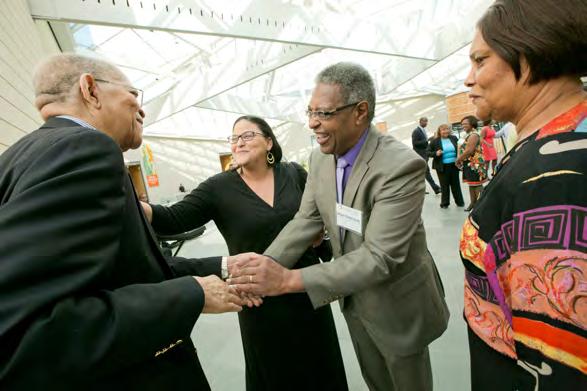
The Lyndon Baines Johnson Foundation is honored to commemorate the life and work of Dr. Benjamin E. Mays, who was the personification of what President Lyndon Johnson wanted for our nation.


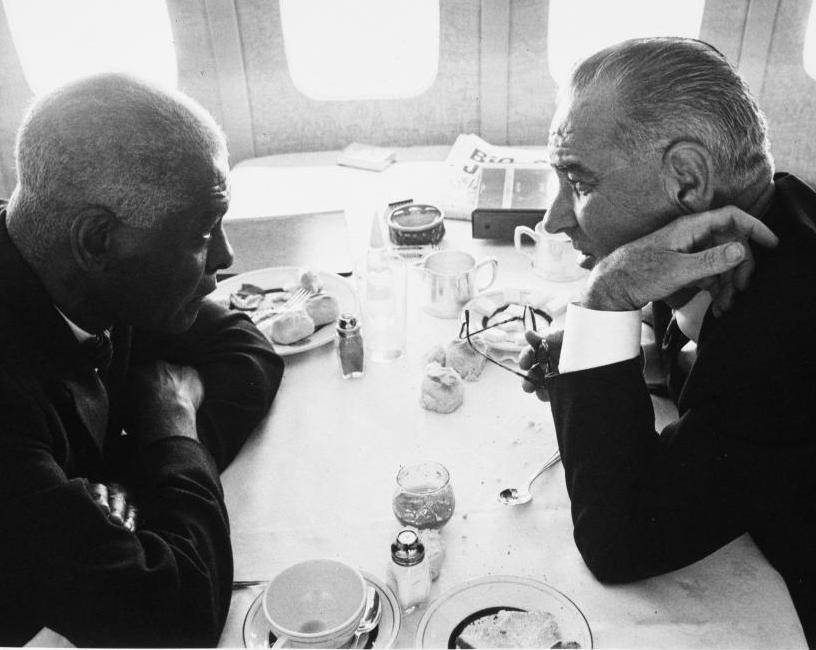
“Our mission is at once the oldest and the most basic of this country: to right wrong, to do justice, to serve man.”
on the 10th anniversary of the founding of the GLEAMNS Dr. Benjamin Mays Historic Preservation Site.
 By Eric Lawson
By Eric Lawson
With his selection, Witherspoon will teach a newly-cre ated course on Mays and the evolution of civil rights in the United States each academic year. Witherspoon will also coordinate special events that celebrate the many contributions Mays made through joint projects be tween Lander and the Dr. Benjamin E. Mays Historical Preservation Site in Greenwood, including opportunities for Lander students through internships and research.
The Dr. Benjamin E. Mays Endowed Chair was created in 2020 through a gift to The Lander Foundation from Doug and Sally Kauffmann. Doug is the former chair of The Lander Foundation board of directors and Sally is a 1975 alumna. The Kauffmanns’ gift created the second-ever endowed chair at Lander University and the first in the College of Behavioral and Social Sciences. Mike Worley, Executive Director of The Lander Foundation, said, “Their transformative gift will help continue the work of Mays in the Greenwood region, South Carolina and beyond. The Kauffmanns’ investment in this Chair is a direct reflection of their commitment to elevating the important intersec tion of higher education with social justice issues.”
The Kauffmanns, of Greenwood, were motivated to learn
more about Mays after attending a 2017 panel discus sion at Lander on Mays’s life that was co-sponsored by the Mays Site. “That event ignited an interest within us about Dr. Mays,” explained Doug. “He’s so undervalued in spite of his contributions, and in my mind, he’s the greatest person the state of South Carolina has ever pro duced. Through his personal work ethic, character and drive, he achieved the American dream.”
Witherspoon explains, “Dr. Mays, who has been called the ‘Schoolmaster of the Civil Rights Movement’ for his mentorship of Dr. Martin Luther King, Jr. and many other civil rights leaders, represents the very best that high er education has to offer: courage, wisdom, academic rigor and a ceaseless drive for equality and fairness. As

much as one can, I aspire to follow the example he set for all of us.” He added, “In that tradition, I am humbled and honored to have been named the inaugural holder of the Mays Endowed Chair and deeply grateful to the donors who made it possible.”
Mays was born in Greenwood County in 1894. The son of former slaves, his childhood was touched by acts of racial violence and forced segregation in the American South. Having witnessed angry mobs and lynchings, Mays real ized that he wanted something better and developed an insatiable desire to get an education. Angering his father by leaving the farm, Mays headed to attend Bates College in Maine and later earned a doctorate from the Univer sity of Chicago. Mays would go on to serve as president of Morehouse College for 28 years, where he became a mentor and close friend to King. He delivered King’s final eulogy following the civil rights leader’s assassination in 1968. Mays was a frequent speaker on civil rights and equality and served as an adviser to U.S. presidents Ken nedy, Johnson and Carter.
In 1974, then-Lander College presented an honorary Doctor of Humanities degree to Mays. “Dr. Mays was greatly honored to have Dr. Larry Jackson (President of Lander College) bestow the Doctor of Humanities degree upon him. To Dr. Mays, it was like a commemoration that his life had come full circle. It was a confirmation that his life and efforts were not in vain,” said Chris Thomas, director of the Dr. Benjamin E. Mays Historical Preserva tion Site.
“Dr. Witherspoon joined the Lander faculty in 2006 and continues to provide excellence in teaching, research, and service to the university,” said Dr. Scott Jones, Pro vost and Executive Vice President for Academic Affairs at Lander. “His expertise in the history of the 20th century and publications that tie to the topics of race and civil rights enable him to teach a course on Dr. Mays, and he has a record of coordinating high-quality programs for our campus and local community. Dr. Witherspoon has already built a strong relationship with the Mays Site, work that began when he led a U.S. Department of Ed ucation multi-year grant for enhancing the teaching of American history to teachers across the Lakelands. Dr. Witherspoon is prepared to fulfill the donors’ wishes to bring more attention to Benjamin Mays, and Lander is excited to draw our collective attention to this educator and role model.”
From the 1906 Baldwin Steam Engine to the 1914 Executive ‘Carolina’ car, you will see some of the most beautiful train restorations in the Southeast, including 3 of the existing 4 cars from the old P&N Railway! Plus, Pullman Passenger and Sleeper cars, and the Erie Lackawanna Dining Car #746. Call for a private tour for any day but Sunday.





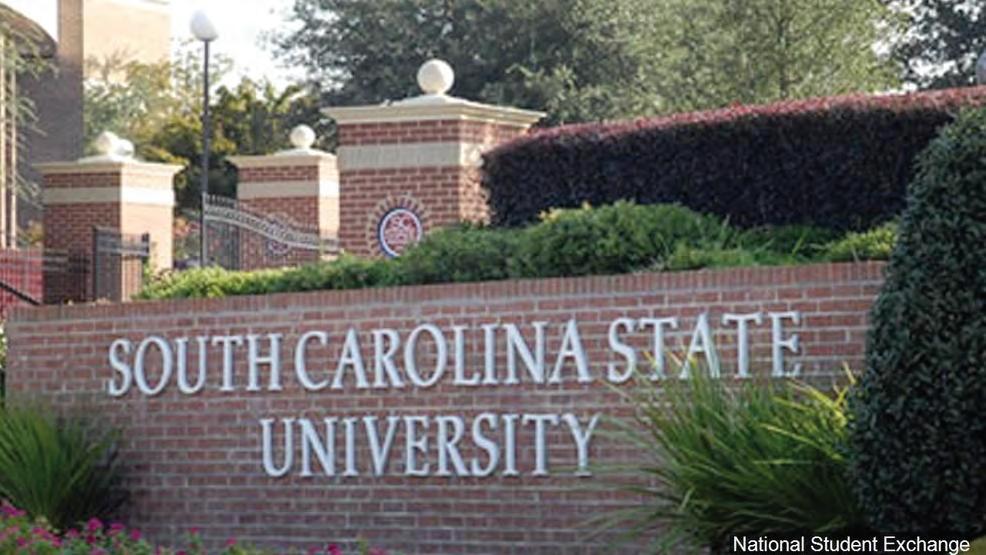


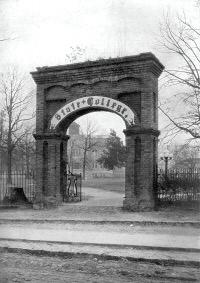


IN 1911 AT 17, MAYS ENTERED THE EIGHTH GRADE IN THE HIGH SCHOOL AT SOUTH CAROLINA STATE COLLEGE.
IN 1916 AT AGE 22, MAYS GRADUATED FROM HIGH SCHOOL AT SOUTH CAROLINA STATE COLLEGE AS VALEDICTORIAN.
SINCE 1896,
South Carolina State University has maintained a legacy of excellence in education. We have been home to generations of scholars and leaders in business, military service, government, athletics, education, medicine, science, engineering technology and more. Located in Orangeburg, S.C., SC State was founded as a land grant college with a mission of providing education and service to the citizens of the state. In its first century, SC State was a leader in education and continues to lead the way into the next century.


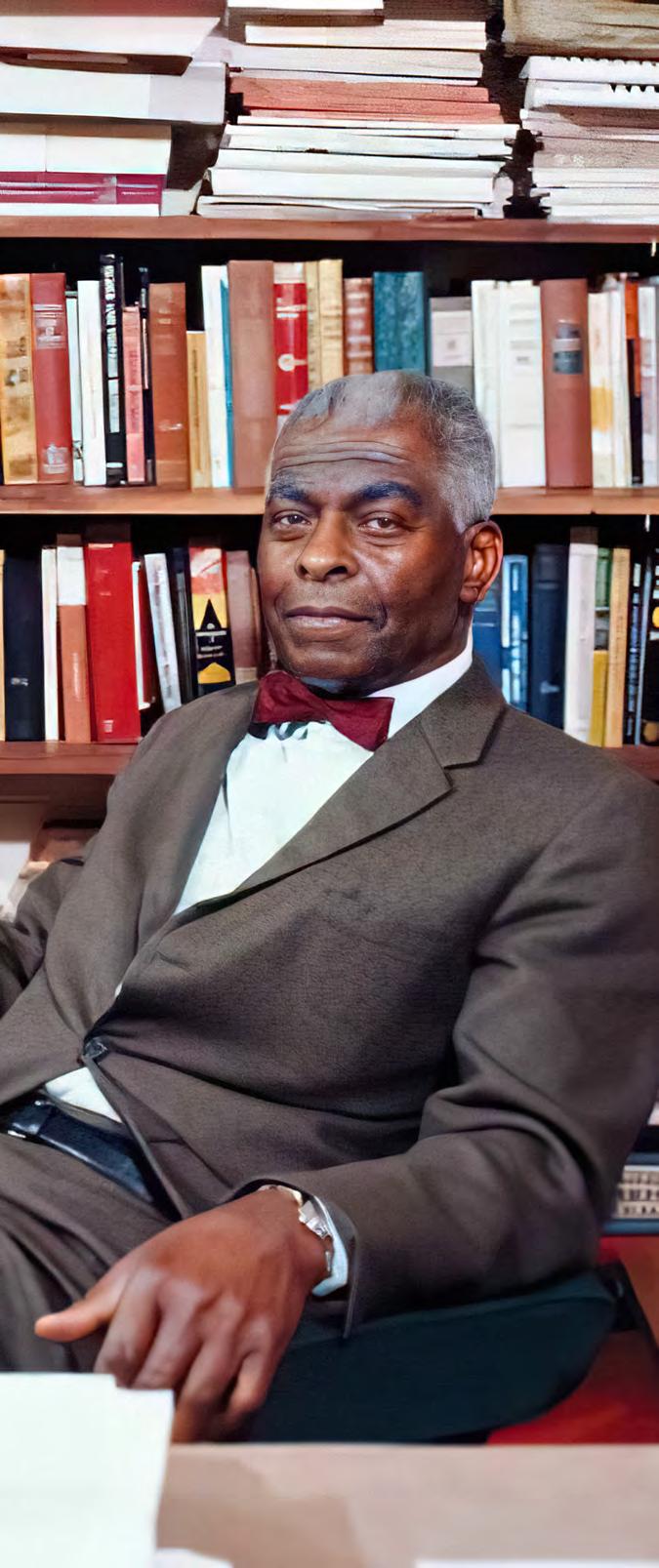
AS THE INAUGURAL HOLDER of the Dr. Benjamin E. Mays Endowed Chair at Lander University, Professor of History Kevin Witherspoon will teach a newly-created course on Dr. Benjamin E. Mays and the evolution of civil rights in the United States each academic year. The inaugural course was taught during the spring semester of 2021. The student testimonials and reflections from this course give us insight to civil rights for the next generation.
I took this course because as an African American I think it is very important to know my background. I did not want to sit around and be clueless to history and I felt like this course would help add to what I already know. I have attended a previous Race and Identity Dialogue session before and gained some knowledge on Dr. Benjamin E. Mays whom I had never heard about prior to joining the session. The background knowledge that I learned and brought to class was that he was from Greenwood, South Carolina and he taught Dr. Martin Luther King Jr. It was not much prior knowledge. I just especially remember him being from Greenwood. There are many aspects of his life that have made strong impressions on me. He was the youngest of eight children and they lived in a decent sized house. He interrupted his graduate studies multiple times to accept teaching jobs, including one at Morehouse College, and positions with the National Urban League and the YMCA, but he always returned to his chosen course, earning his master’s degree in 1925 and his doctorate in 1935. During these years, he was also ordained into the Baptist ministry. He never gave up he always continued he was too far ahead. He was a model for one of his Morehouse students, Martin Luther King, Jr and did the eulogy at Dr. King’s funeral. He even knew President John F. Kennedy and was saddened by his assassination. That made him write the letter to Dr. King which really spoke volumes. The lessons that can be applied in today’s society is determination no matter how hard life is if you just keep trying you will succeed. I will apply this into my own life as well as just be you.
I took this course because I always wanted to take an African-American history course and this was the first year this course was offered on campus. The only background knowledge I had of Dr. Mays was he was a Greenwood native and an important figure in black history, I didn’t know what for yet. These past few weeks I have learned a lot about Dr. Mays but one aspect of his life that made an impression on me was his never ending fight. From the time Dr. Mays was born until the time he died he fought to learn, live, and be free. He overcame his educational back track, he overcame racism in the south, and he helped changed a whole nation. A lesson we can apply to our own lives from Dr. Mays is to never give up even after being denied or told you can’t, find a way or make a way. I plan on using this lesson throughout my adulthood.
I have gained a more dynamic perspective of the Civil Rights Movement and all of its working parts. A lot happened behind the scenes that I had no idea about, such as Dr. Benjamin E. Mays himself. Learning about Dr. Mays has humbled me in a way that made me realize I do not know everything because, before this class, I thought I knew a significant amount of the content on the Civil Rights Movement. My view has most certainly changed, as my knowledge has expanded. I would tell other students interested in this class to take it; it is a life-changing experience.
Dr. Mays overcoming so many obstacles and achieving the great things that he did made a very strong impression on me. Seeing the conditions that he was born into at the Mays Site made me realize just how hard he had to work to get an education. I think that seeing the challenges that Dr. Mays faced puts our own struggles into perspective. It makes me incredibly grateful that I was able to get a good educational foundation. The story of Dr. Mays also shows how important it is to encourage people to accomplish things that they may not think that they can accomplish.
Last semester I attended a Race and Identity Dialogue talk and the topic was Dr. Benjamin E Mays and his life’s work. I found the conversation very intriguing and when I heard about the new history class that was coming I was excited to sign up. I knew that he had made an impact on the people who were the face of the Civil Rights Movement but we had never learned his name. And like so many other black scholars he was a hidden figure that our History textbooks left out. Also knowing that he was originally from the Greenwood area was super cool because he is the definition of a Hometown Hero which just made me want to learn more about him.
I believe that this class is very important right now and unfortunately relevant. I believe systematic racism exists so strongly in America because influential black figures like Dr. Mays are never spoken of or talked about. History education in America all too often treats black Americans like a footnote in our history rather than truly part of it. Far too many teachers jump from the Civil War to the Civil Rights Movement without discussing any black figures who rose up in the decades in between. Fredrick Douglass to Dr. Martin Luther King, Jr. and no one in between. That is what is so great about Mays’ story though, his life is that time in-between.
Taking the History 250 course has allowed me to gain knowledge on things that I was truly unaware about. To be gin, I came into this class with no idea of who Dr. Benjamin E. Mays was. I so far have confronted my ignorance of this great man and applied his own teachings to my life. Dr. Mays’s biography has given me such an influence on the importance of education and how to help within the community as we face these tragic forms of racism. Being able to see an African American man with such great power and high intelligence strive during a time of so much pain and humiliation. If I were to give any insight of this class to other students, I would say to anyone interested in taking this course, it would definitely be a great investment of your time. This class allows you to be opinionated and get involved with classmates as well as the professor.
The most important thing I have learned about this class is even though a person isn’t mentioned doesn’t mean they don’t have a huge impact on history. My understanding and appreciation of others was definitely increased because I got to learn about a new impactful person who made a big difference in the society. I would tell other students that if they want to learn about a new person and only focus on one person in history, I will definitely tell them to take this class because you will learn so much from it.
Benjamin Mays was a proud man who only wanted a chance to live equally in freedom and make the world a better place. His God-given perseverance and patience impressed me most. He was very wise in that he knew he could not change the world by himself. Thus, he mentored and encouraged many who could and did help. Andrew Young commented that there would have been no Martin Luther King without a Benjamin Mays.
I took this course so that I can further my understanding, and education on civil rights. I want to learn more on civil rights so that I can use it in my future career as a lawyer. I did not have any back ground information on Dr. Mays and his life. I have learned that Dr. Mays has a very long lasting reputation and that he has done a great amount of work in the area of civil rights. I learned that he kept his head high even when dealing with Ku Klux Klan members. We can apply his courage and wisdom to our everyday lives.
What I have gained from taking this class is perspective. We learn about Malcolm X and Dr. Martin Luther King, Jr. in school but other than them and Rosa Parks - we learn about no one else. It was great to hear about another civil rights leader as well as someone from Greenwood who has personal experience and firsthand knowledge what the south is really like. Not to mention someone who recognizes that the progress made was not much to be celebrated.
I decided to take the Civil Rights/Benjamin Mays Legacy course because I was never offered a class where Civil Rights was the main focus. I was taught by my grandfather the basics of the Civil Rights Movement, but I wanted to dig deeper. I also feel that as an African American woman, I should know the history of what my ancestors faced. The bonus of this class was learning about the wonderful Dr. Benjamin E. Mays. Before I enrolled into this class, I had no knowledge on Benjamin Mays. I have learned so much from Dr. Mays. Which I love how he is still teaching even while he is at rest. What I take from Dr. Mays is to keep fighting. Even though people are going try to get you down and do not want to see you successful keep fighting. The best way to fight back is to be exactly what those people do not want you to be, just prove them wrong. One thing that touched my heart was Dr. Mays putting himself first when getting his education. Dr. Mays went to college and that makes me think of how much a privilege it is to be in college now. Leaders like Dr. Mays paved the way for African Americans to be able to go to college. He proved that if he could get through that other African American children can to. Yes, it will take hard work and it won’t be easy, but it is possible. Dr. Mays showed me his confidence, faith, and integrity when reading his book. My biggest lesson learned from Dr. Mays is that all things are possible and to not let anyone change your mind. I am so glad that I decided to take this course.
This class has been very impactful on how I view the Civil Rights Era. From what I was taught in public schooling, there was only two civil rights leaders mentioned. Most people went into exuberant amounts of information about Dr. Martin Luther King Jr., considering how short this unit typically is. The other leader that is mentioned briefly is Malcolm X. Little is explained about Malcolm X other than he was violent in the beginning and while he had the same goal as Dr. Martin Luther King Jr. he took a very different approach over all on how to gain rights for all races. This class expanded my view upon the Civil Rights Era and those that lead it. It not only introduced Dr. Benjamin E. Mays, it also introduced several other prominent members of the Civil Rights Movement.
One aspect that left a strong impression on me is actual when his father didn’t want him to go to school to get an education. I find that to be powerful because of what Dr. Mays did after when he did decide to go to school and accomplish huge things in his life. But it also showed that maybe his father was afraid because he knew that his son was heading down a path that could get him hurt or worse. As a parent, he knew that this is what his son wanted but was afraid for his wellbeing. I think his father would be proud of him. Another aspect is what he was able to achieve in his life. Becoming president of Morehouse, mentoring a young leader in Dr. King, and having 50 plus degrees is one heck of a feat. That is something that demands respect because it takes a lot to do that during that time.
When entering the class the knowledge I had of Dr. Mays was the extent of a street sign in Greenwood. Being from Greenwood I had knowledge of the Greenwood, Ninety Six and Epworth area, and of course I had knowledge on the Civil Rights Movement. I literally went into the course blind; but I am glad that I did. I have already learned so much about Dr. Mays. Being a Greenwood native I was ashamed that I was unaware of Dr. Mays and the legacy he had created. The admiration of Dr. Mays for learning is incredible. He continued to strive past his presumed future to accomplish his goals that others thought to be far-fetched. Dr. Mays’s desire for further education inspires me. From reading Born to Rebel and visiting the Mays Site, I have learned a lesson that I can apply to my daily life. Dr. Mays’s ability to keep silent when needed was admirable. His eagerness to fight through all the obstacles that could have prevented his success, taught me that I (with far less issues) can too reach my goal.
I learned a numerous amount of things while taking this class. Without taking this class I wouldn’t even know who Dr. Benjamin E. Mays was. Throughout my first 12 years of school I never even learned about Dr. Mays it was always slavery, civil rights, and Dr. Martin Luther King, Jr. every single time in the same order. So actually my first time hearing about Dr. Mays was actually when I signed up for the class last semester and I was always interested in black history. I always wanted to know more than just the same programmed basics that the education system teaches us because there is more to it than just slavery, civil rights, and Dr. King.
The most important things I’ve gained taking this course is learning how much Dr. Mays did for America. I know how much Dr. Mays had such a big impacted on MLK. I learned that the sign I passed leaving school and coming to school has a bigger meaning to it than just a regular old sign. Learning about Dr. Mays has made me think a little harder about my roots and ancestor. I took this class trying to learn more about the Civil Rights movement a how blacks in America were treated but I learned way more than I thought I was. I find my understanding for others very much. I would tell other students that if you’re thinking about taking this course then take it and educate yourself on someone that has really represent our state very well. I would tell students come to class open minded and you must keep up with your reading or you will get lost in the wonderful life of Dr. Mays.
There are two lessons by Mays that I think society would benefit from applying, and that I would benefit from applying. Those two lessons came in the form of quotes by Mays. Benjamin E. Mays once said, “We make our living by what we get. We make our life by what we give”. This is saying that you make a living by earning money, but to truly live a life you must give. Life is not just about receiving, but also giving. Mays also has another quote that says, “The tragedy of life is often not in our failure, but rather in our complacency, not in our doing too much, but rather in our doing too little, not in our living above our ability, but rather in our living below our capacities”. Sometimes, we are too afraid to strive for greatness, because we don’t think we are capable of it, and according to Mays, that’s how true failure occurs.
Meadors, Inc is a Charleston based company, offering a diverse range of services through our six workshopsArchitecture & Interior Design, Construc�on, Conserva�on & Preserva�on Planning, Cabinetry & Millwork, Maintenanace & EstateManagement and Design Services.











Our success is founded in a sincere interest and understanding of the history, goals and future ambi�ons of our clients and colleagues and through our partnerships and projects with them. We commit to a wholesome all-rounded approach to projects that encompass more than the skills required to complete them. No ma�er the exper�se required, people and communi�es, rela�onships, hearts, souls and experiences are the founda�on of our work.
We were drawn to, and are excited to be part of the team on the Dr. Benjamin Mays project for all the reasons above. It is a project that honors the life of an extraordinary American and will be a wonderful resource for the community and visitors alike. We would like to thank the community for the trust you have given us and the warmth with which we have been embraced.
Thank you to our colleagues and partners for their shared vision and collabora�ve work on this project. For access to our project narra�ve scan the QR code. Follow



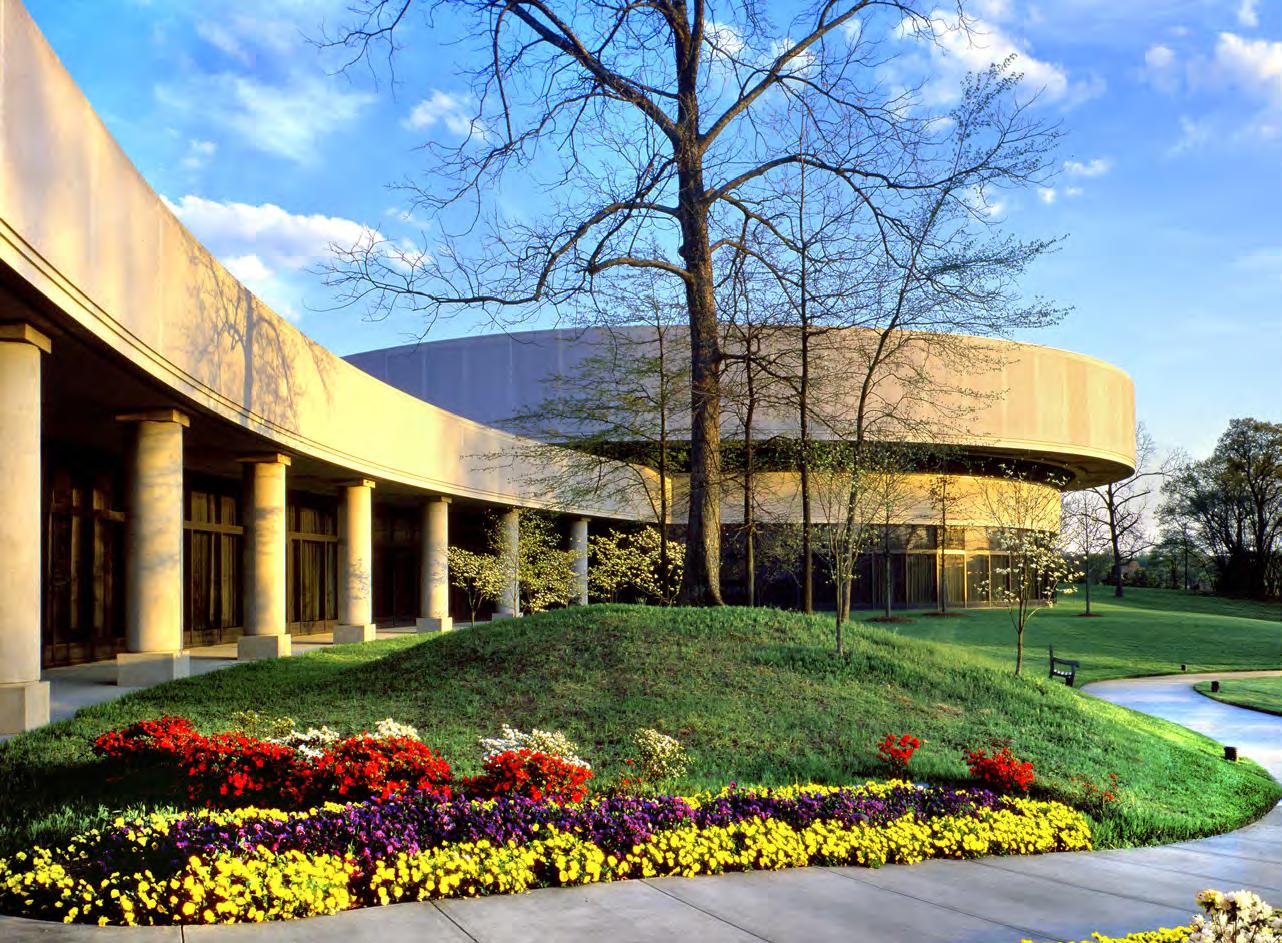

“Dr. Mays is the kind of person who, with his modesty and competence, inspires all those around him to reach for a higher level of commitment, and service, and integrity in their own public lives.”
The Greenwood SC Chamber of Commerce is proud to have named Dr. Benjamin E. Mays to the Greenwood County Hall of Fame
Dr. Mays made extraordinary contributions to the economic well-being and quality of life in Greenwood County and the United States. He led an exemplary life both socially and spiritually, and through his career, brought recognition and honor to our community.
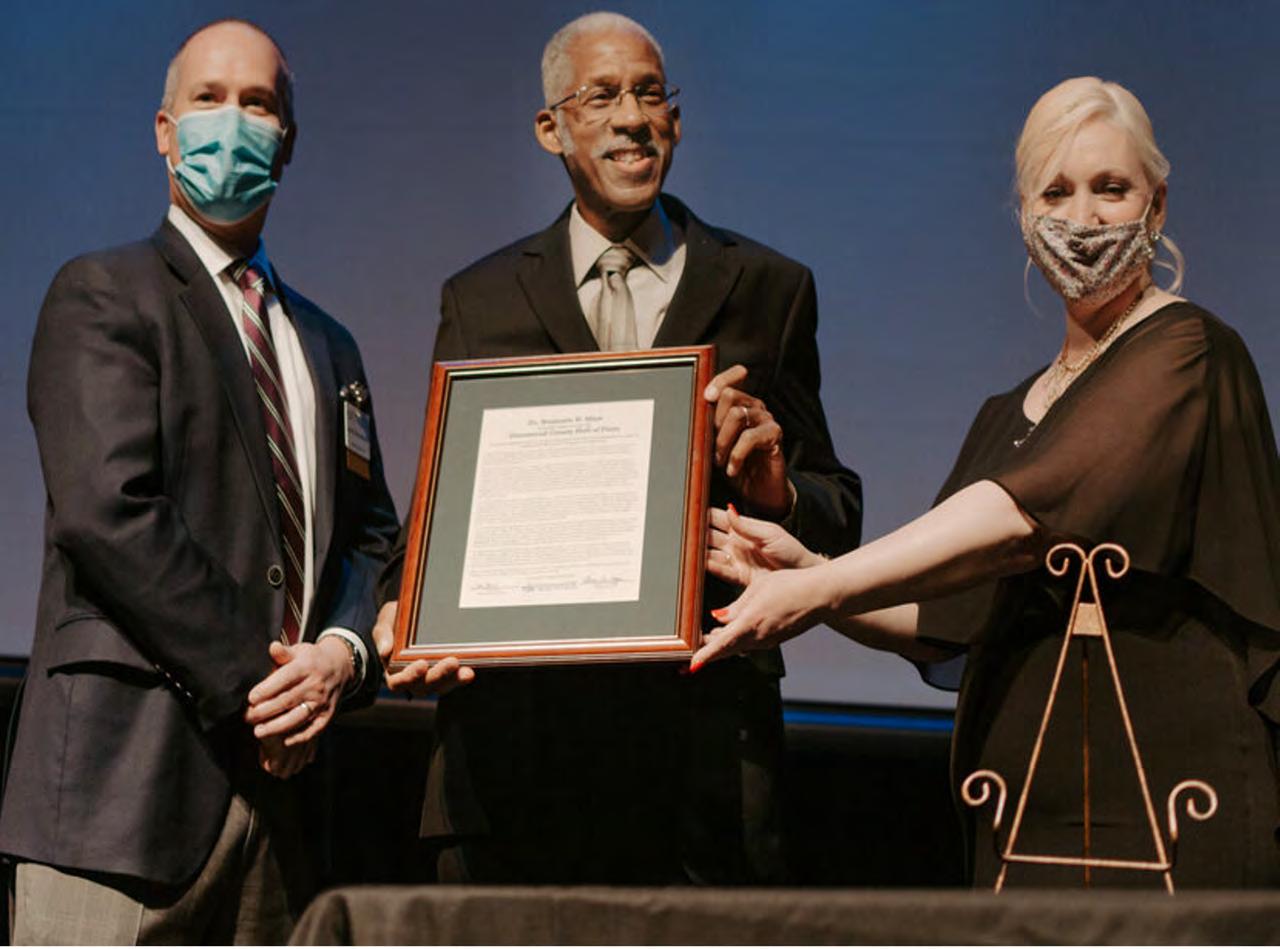
The Greenwood County Hall of Fame Award is the highest award that the Greenwood SC Chamber of Commerce can bestow on a citizen of Greenwood County.


RECOGNIZED FOR DEVELOPING THE MAYS SITE & TEACHING AND PRESERVING THE LIFE AND LEGACY OF DR. BENJAMIN E. MAYS


The Morehouse College Martin Luther King Jr. International Chapel is the world’s most prominent religious memorial to Dr. King and the home of many of their signature events, cherished history, and honored traditions.


The Martin Luther King Jr. International Chapel is a beacon for Morehouse College students, faculty, staff, alumni, and others who seek to realize King’s dream of the Beloved World Economic Community and Howard Thurman’s guidance on the religion of Jesus. Through their transformative, moral cosmopolitan programs, they teach these seekers King’s and Thurman’s evolutionary values of cosmopolitan spiritual ethics, nonviolence, service, and harmony, and encourage all to apply them in every aspect of their lives. Inspired by the possibility of the Beloved World Economic Community as the ethical meaning of the Presence of God, these seekers go forth as transforming nonviolent ambassadors of peace to reveal and co-create a sustainable world in which all people embody their spiritual magnificence by living unconditional love and responsibility with justice.
The Chapel conducts multiple program to sustain and fulfill its mission. The Chapel Assistants program, WorldHouse Wednesdays, Thurman Thursdays, the Sandy F. Ray Preaching Lab, the Seminary Swing, the Vesper Hour, and the College of Ministers and Laity. The College of Ministers and Laity is the Chapel’s signature program. This program attracts some of the brightest minds across disciplines to engage in dialogue, learning, and growing. The College of Ministers and Laity is unique in its juxtaposition of servanthood, scholarship, and leadership as requirements for ministry – whether that ministry is performed through formal religion or any other endeavor.
THIS ANNUAL CONFERENCE PROVIDES A CREATIVE LEARNING ENVIRONMENT IN WHICH CLERGY AND LAITY FROM DIVERSE BACKGROUNDS, DISTINCT FAITH TRADITIONS, AND DIFFERENT GENERATIONS COME TOGETHER AS STUDENTS OF DR. KING’S PHILOSOPHIES AND ETHICAL PRINCIPLES.
During this annual conference the Chapel inducts members into the distinguished Martin Luther King Jr. International Chapel Board of Preachers and Colloquium of Scholars. The Board of Preachers and Colloquium of Scholars is comprised of ordained clergy from the Christian tradition, as well as faith leaders, such as rabbis, imams, priests, ministers, educators, and scholars. The former CEO of the GLEAMNS Human Resource Commission, Dr. Joseph Patton, and the succession of Directors at the GLEAMNS Dr. Benjamin E. Mays Historical Preservation Site, Loy Sartin and Chris Thomas, were all inducted into the Martin Luther King Jr. International Chapel Colloquium of Scholars for their work in developing the Mays Site and teaching and preserving the life and legacy of Dr. Benjamin E. Mays, the mentor of the Reverend Dr. Martin Luther King Jr. Loy Sartin was induced in 2011 at the 26th annual conference, and Dr. Joseph Patton and Chris Thomas were induced in 2018 at the 33th annual conference.

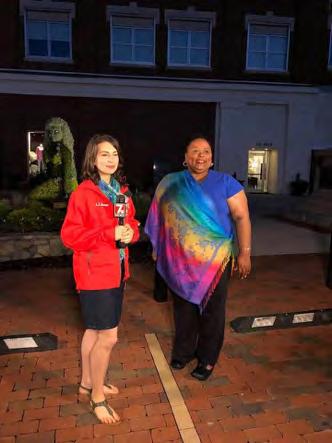
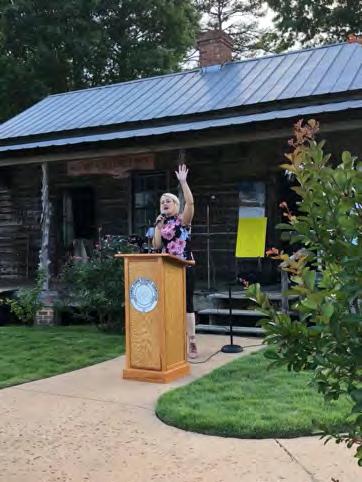



and how Gospel music was interwoven within the movement that Dr. Mays so profoundly influenced, the Civil Rights Movement. The musical expressions were diverse. Traditional Gospel music by Rev. Dr. Adrian Wideman, Louise Robinson, First Lady Latisha
Kayla Kwist. The old time tradition of shape-note gospel singing performed
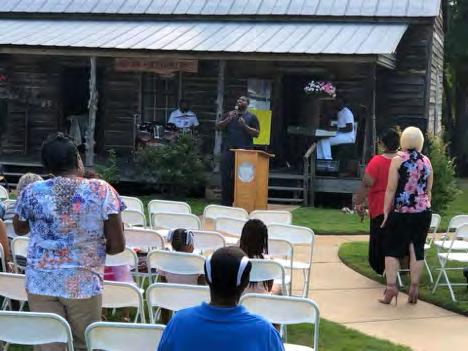 First Lady Latisha Thomas (Wife of Mays Site Director)
KAYLA KWIST
Louise “The Gospel Angel” Robinson being interviewed by Christine Scarpelli of 7News WSPA-TV about the Gospel at the Mays House event
REV. DR. ADRIAN WIDEMAN, PASTOR OF MT. OLIVE BAPTIST CHURCH
First Lady Latisha Thomas (Wife of Mays Site Director)
KAYLA KWIST
Louise “The Gospel Angel” Robinson being interviewed by Christine Scarpelli of 7News WSPA-TV about the Gospel at the Mays House event
REV. DR. ADRIAN WIDEMAN, PASTOR OF MT. OLIVE BAPTIST CHURCH
THIS EVENT WAS PLANNED TO COINCIDE WITH DR. MAYS’ 124TH BIRTHDAY.

The Literary Landmarks Association was founded in 1986 by Frederick G. Ruffner to en courage the dedication of historic literary sites throughout the United States.


Mays was accomplished as an author and writer, publishing nearly 2000 articles and nine books throughout his career. Dr. Mays is mostly recognized as a Baptist minister, theo logian, educator, college administrator, and for laying the intellectual foundations of the American civil rights movement. When consid ering the legacy of Dr. Mays, far less attention has been given to his work as an author. But on Wednesday, August 1, 2018, that aspect of his legacy was enshrined at the historic site that bears his name, with the dedication of the Mays Site as just the third Literary Land mark distinction in South Carolina.
This recognition placed Mays, a Greenwood County native, in the same company as James Dickey and Pat Conroy. The James Dickey Li brary at the University of South Carolina (Co lumbia, SC) and the Pat Conroy Literary Center (Beaufort, SC) previously received this distinc tion 1999 and 2017 respectively.
LITERARY LANDMARKS ARE BESTOWED BY STATES IN PARTNERSHIP WITH THE AMERICAN LIBRARY ASSOCIATION, WITH MORE THAN 200 ACROSS THE COUNTRY.
Two additional site in South Carolina now carry the Literary Landmarks distinction: the Harvin-Clarendon County Public Library (Manning, S.C.) in recognition of children’s author Peggy Parish, and the Arthenia J. Bates Millican Home (Sumter, S.C.) in honor of the American poet, essayist, short-story writer and educator, Arthenia J. Bates Milli can.


Speakers included Dr. Tom Mack (Board Chair of the South Carolina Academy of Au thors), Marlena White (President of the Board for Friends of South Carolina Libraries), Lee sa Aiken (Agency Director of the South Caro lina State Library), Senator Floyd Nicholson, and Representative J. Anne Parks. There was also a keynote address from Dr. Orville Ver non Burton, the inaugural Judge Matthew J. Perry Distinguished Chair of History and Pro fessor of Pan-African Studies, Sociology and Anthropology at Clemson University, and writer of the foreword for revised editions of Mays’ autobiography, Born to Rebel.


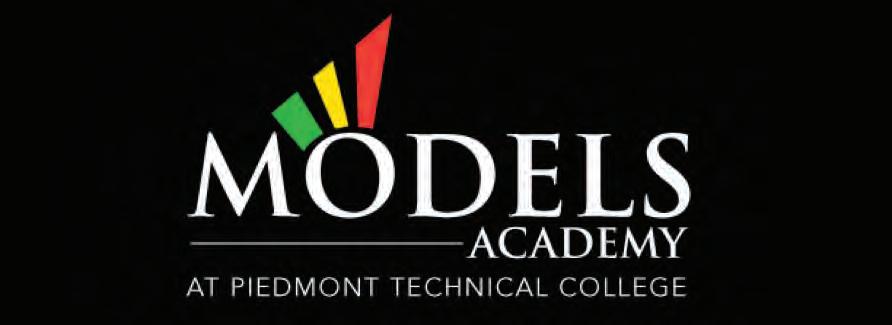
MANY YEARS AFTER THE ASSASSINATION OF MARTIN LUTHER KING JR., MOREHOUSE COLLEGE AND THE MARTIN LUTHER KING JR. INTERNATIONAL CHAPEL CONTINUE TO SERVE AS THE INTERNATIONAL EPICENTER FOR A “WORLD HOUSE: CONNECTING THE GLOBAL COMMUNITY,” THAT BRINGS TOGETHER STUDENTS, SCHOLARS, AMBASSADORS AND ACTIVISTS TO PRESERVE AND REVITALIZE KING’S VISION OF THE “WORLD HOUSE.”



The Martin Luther King Jr. International Chapel is a beacon for Morehouse Col lege students, faculty, staff, alumni, and others who seek to realize King’s dream of the Beloved World Economic Commu nity and Howard Thurman’s guidance on the religion of Jesus. Through their transformative, moral cosmopolitan pro grams, they teach these seekers King’s and Thurman’s evolutionary values of cosmopolitan spiritual ethics, nonvio lence, service, and harmony, and encour age all to apply them in every aspect of their lives. Inspired by the possibility of the Beloved World Economic Community as the ethical meaning of the Presence of God, these seekers go forth as transform ing nonviolent ambassadors of peace to reveal and co-create a sustainable world in which all people embody their spiritu al magnificence by living unconditional love and responsibility with justice. During the summer of 2019 the Martin Luther King Jr. International Chapel at Morehouse College extended this dream to high school seekers from across the southeastern United States.
The Worldhouse Academy brought high students to Morehouse College to seek to realize King’s dream of the Beloved World Economic Community and to un derstand Howard Thurman’s guidance on the religion of Jesus. These students lived on campus for two weeks and at tended classes, chapel services, and other engaging activities. Two of these students, Isaiah Thomas (son of the Mays Site director) and Jermarcus Brown, were from the home town of Dr. Benjamin E. Mays (Greenwood, SC).

On Thursday, July 11, 2019, Dr. Lawrence Carter, Founding Dean of the Martin Lu ther King Jr. International Chapel at More house College, and his staff, brought this group of high school students from the Worldhouse Academy at Morehouse College to the GLEAMNS Dr. Benjamin E. Mays Historical Preservation Site to learn about the life and legacy of Dr. Benjamin E. Mays (a mentor to both Howard Thur man and Dr. Martin Luther King, Jr.)

ACTRESS SUSAN SARANDON, ACTOR DANNY GLOVER, AND OHIO STATE SENATOR NINA TURNER, VISITED THE GLEAMNS DR. BENJAMIN E. MAYS HISTORICAL PRESERVATION SITE ON FEBRUARY 15, 2020.




Turner was the national co-chair of the Bernie Sanders 2020 presidential cam paign. The trio swung through Green wood South Carolina just ahead of the Democratic primary slated for Febru ary 29, 2020. Working on the Bernie Sanders 2020 presidential campaign, they were participating in a commu nity meeting that Saturday evening at the Brewer Center, and decided to vis it the Mays Site prior to this event.
INITIALLY SCHEDULED FOR A BRIEF THIRTY MINUTE VISIT, THE THREE WERE SMITTEN BY THE EXTRAORDINARY LIFE OF DR. MAYS, AND THE HISTORICAL PRESERVATION SITE THAT BEARS HIS NAME,
their stay extended beyond an hourand-fifteen-minutes before aids and staffers hurried them away from the Site. The GLEAMNS Dr. Benjamin E. Mays Historical Preservation Site and Greenwood received a Holly wood-styled visit that Saturday.

Dr. Jackson and Congressman Dorn stated this in a certified letter which is on file.
IT WAS AT THIS CEREMONY Dr. Mays stated to his sec retary, Mrs. Sally Warner, something to the effect that he hoped that his birth home could be saved one day.
AUGUST 1, 1894 Dr. Mays was born and lived in the home in his very early years.
IN SUMMER OF 1974 Dr. Mays, during the filming of Born to Rebel, is shown standing right in front of the home’s porch speaking about his place of birth.
IN NOV 1981 The intersection a few yards from his birth home was named Mays Crossroads by the S.C. State Leg islature. There was a grand ceremony at the crossroads which included Dr. Mays, Coretta Scott King, US Congressman William Jennings Bryan Dorn, Lander University President Lar ry Jackson, State Sen. John Drummond, Dr. Mays’ niece Nettie Powell, Dr. Mays’ secretary Mrs. Sally Warner and her husband, Dr. Clint Warner, the More house Glee Club Quartet , among other notables. At the time of the cer emony, the birth home had long been vacant and was being used as a barn to store hay by the Griffith family who owned the home.
EITHER BEFORE OR AFTER THE CEREMONY, Congressman Dorn and Lander Pres ident Larry Jackson escorted Dr. Mays to the home and Dr. Mays verified that the home was his actual birth home.
AROUND NOVEMBER 81 Con gressman Dorn approached the owner of the birth home, Mr. Griffith, about releasing the home so it could be pre served. The owner stated in no uncertain terms, using col orful, racial language, that no one would get the home as long as he was alive.
IN 1997 OR 1998 Loy Sartin, the Director/Curator Emeri tus of the Benjamin E. Mays Historic Site, asked a friend, Dr. Wilma Reeves, who had retired from Lander Univer sity, to call Mrs. Griffith (her husband had passed at this point), and ask her if she would be willing to release the home to the Greenwood Historical Society. Wilma called and had a very pleasant con versation with Mrs. Griffith until the point that she asked her if she would consider re leasing or selling the home to the Historical Society, where upon the conversation was discontinued as Mrs. Griffith stated that she did not want to discuss it.
IN VERY EARLY 2002 A meeting was held in Greenwood with the follow ing in attendance: Dr. Larry Jackson, Dr. Joe Patton (CEO of GLEAMNS), Mr. Frank Wideman (President of Self Family Foundation), Mr. Gonza Bryant (Greenwood County Councilman), Mr. Steve Brown (Greenwood City Man ager), and Kenneth Driggers and Jen nifer Satterthwaite of the S.C. Palmet to Conservation Foundation. At this meeting, the participants discussed possible plans to secure the home.
SHORTLY AFTER THIS MEETING Mrs. Griffith was approached and she agreed to sell the home to the S.C. Palmetto Conservation Foundation for $4,000 with the stipulation that it be removed from her property.
IN LATE 2004 Dr. Mays’ birth home was moved, at the insistence of Dr. Joe Patton and Councilman Gonza Bry ant, to vacant land on the GLEAMNS campus because of the historical nature and meaning of the cam pus to African Americans in Green wood.
GLEAMNS (acronym for Greenwood, Laurens, Edgefield, Abbeville, McCormick, Newberry, and Saluda counties) is a state Community Action Agency established in Greenwood in 1966 - one year after President Johnson started the na tional War on Poverty. The GLEAMNS campus encompasses the old Brewer School which was originally founded in 1872 as the Brewer Indus trial Normal School for Colored. It served as a black high school as far back as the 1920’s up until Greenwood integrated its public schools around 1971-72, at which time it was converted to a Greenwood School District 50 middle school. The campus also encompasses the old Brewer Hospital for blacks during segregation as well as the building which housed the black nurses. The Brewer Lab trained about 75 percent of the black nurses in the State of S.C.





In the fall of 2019 Mayor Brandon Smith addressed the board of Greenwood School District 50 and challenged them to rename a school in his hometown after Dr. Benjamin Elijah Mays. The mayor made a strong case that evening for why the board and the community of Greenwood should embrace renaming a school after a ‘native son’ who accomplished so much in education and civil rights in America. The atmosphere in the room that night was optimistic about the possibility and inquisitive about the man who was being described as the “Principle founder of the Civil Rights Movement” and mentor to the Reverend Dr. Martin Luther King, Jr.
Following several months of discussions and hearing from the community, the school board voted on Monday, February 17, 2020 on the proposal to rename Springfield Elementary School the Dr. Benjamin E Mays Elementary School. The board unanimously approved the proposal. Anne Marie Glawe said, “The story of Dr. Mays needs to be told. He is the teacher of Dr. King and he is a local hometown hero from Greenwood.” Mrs. Glawe was a teacher for gifted students at Springfield Elementary and the driving force behind the legacy of Dr. Mays being taught there. Mrs. Glawe has brought her GATAS students to the Mays Site on all-day field trips for seven years to experience the Site and learn about the life and legacy of this iconic American who shares the same hometown as her students. Her work was the foundation in many ways for Springfield Elementary being the school that Greenwood School District 50 chose to rename in honor of Dr. Mays. After months of planning, meetings, and learning more about the life and contributions of Dr. Mays, member of the school district and the community came to the former Springfield Elementary School to rename the school in honor of civil rights leader Benjamin E. Mays. It was an inspiring morning and ceremony that
included representatives from the school district, the school’s administration and teachers, civic leaders, local clergy, members of Omega Psi Phi Fraternity, Inc., and the Martin Luther King Jr. Mass Choir. Mays told his students at Morehouse College, “It isn’t a disgrace not to reach the stars, but it is a disgrace to have no stars to reach for.” All who were in attendance that day seemed to look to the future of the Dr. Benjamin E Mays Elementary School in hopes that Dr. Mays would continue to inspire students in the county of his birth to find a star in their lives to reach for.



 Dr. Benjamin E. Mays
Dr. Benjamin E. Mays

Congratulations on 10 years of preserving the life and history of Dr. Benjamin E. Mays!

I believe everyone is born into this world to do
distinctive.
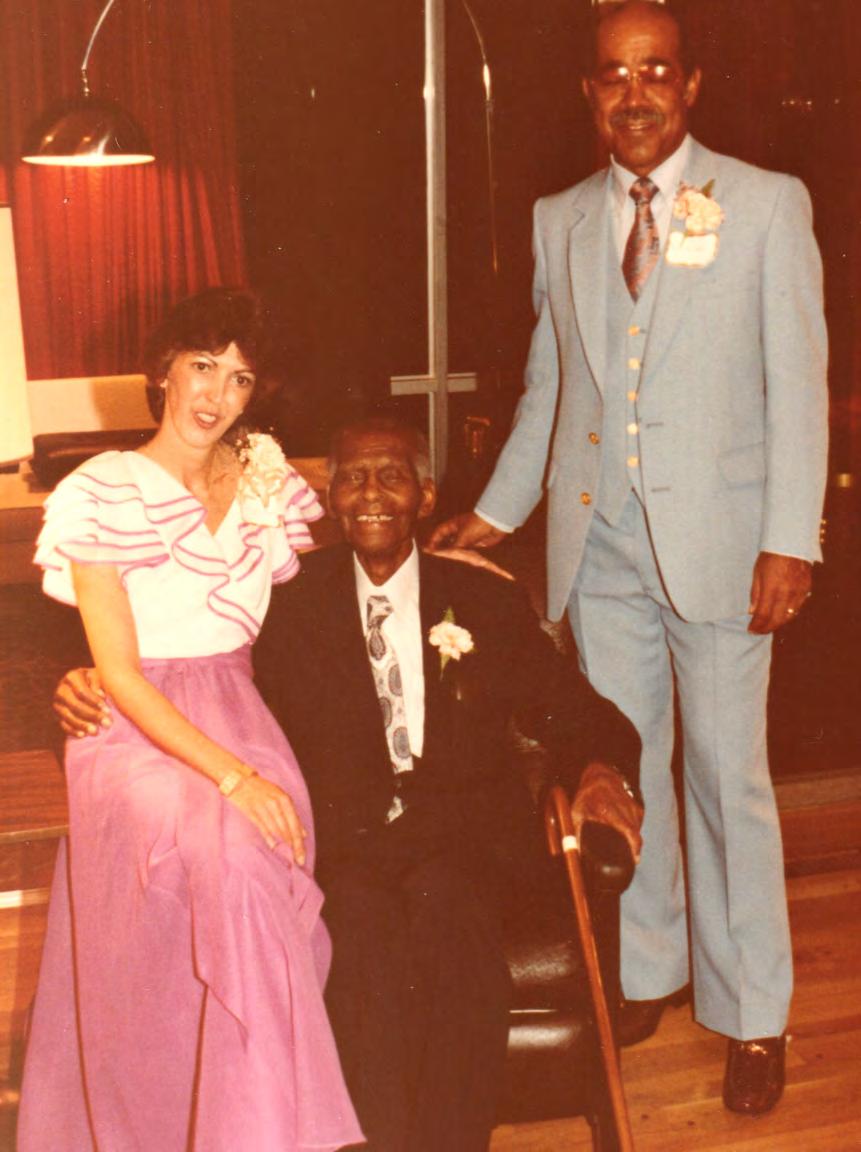
COMMEMORATING 10YEARS of honoring, celebrating, and showcasing Dr. Mays commitment to equality and his legacy of black excellence
Whatever you do, strive to do it so well that man living and no man dead and man yet to born could it any better!Dr. Benjamin Mays with Sally and Clint Warner at a reception in honor of his 87th birthday. (August 1st, 1981)
Dr. Benjamin E. MayDr. Benjamin Mays with Sally and Clint Warner at a reception in honor of his 87th birthday. (August 1st, 1981)
“Whatever you do, strive to do it so well that no man living and no man dead and no man yet to be born could do it any better!” Dr. Benjamin E. Mays


The Greenwood County Hall of Fame is the highest award that the Greenwood Chamber of Commerce can bestow on a citizen of Greenwood County, it honors an individual who has led an exemplary life and brought honor to the community. Many attended the Greenwood SC Chamber of Commerce Annual Meeting on Thursday, March 25, 2021, when the Chamber inducted Benjamin E. Mays and Frank Wideman into the Greenwood County Hall of Fame.
Index Journal

A legendary figure — not only in Greenwood County history but in the history of the United States — was posthumously inducted into the Greenwood County Hall of Fame.
“He never sought this kind of recognition or honor,” the Rev. Dwight Powell, greatnephew of Benjamin E. Mays, said of his great-uncle. “It fell on us to recognize who he was and what he was trying to do for us, for the county and for the nation.”

Powell said Mays would be honored and humbled to be inducted if he were still living. Mays, born in Epworth more than 125 years ago, had a passion for education. He graduated from S.C. State College’s high school department with honors in 1916 and graduated from Bates College four years later. He attended the University of Chicago in 1925 where he received a Master of Arts degree and — later in 1935 — a Doctor of Philosophy.
He was the dean of Howard University’s School of Religion where he participated in three European conferences of the World Council of Churches. During a 1937 world conference of the YMCA in India where Mays served as a delegate, he met with Mahatma Gandhi to discuss nonviolence as a path for social change. Mays was selected in 1940 as the sixth president of Morehouse College, where he was entombed upon his death. During his time at Morehouse, he mentored the Rev. Martin Luther King Jr. and delivered the eulogy at King’s funeral.
“He never sought this kind of recognition or honor. It fell on us to recognize who he was and what he was trying to do for us, for the county and for the nation.”
A trusted advisor to many U.S. presidents, he was tasked with representing the U.S. — along with Vice President Lyndon Johnson — at the funeral of Pope John Paul XXIII in Rome.
Mays retired from Morehouse after serving as president for 27 years. He later spent 12 years as president of the Atlanta School Board before retiring three years before his death in 1984.
A key architect of the civil rights movement, the South Carolina General Assembly named the intersection near his birthplace — Mays Crossroads — in 1981. His birth home was moved to the campus of GLEAMNS where a historical preservation site was established in 2011. An expansion of that site — part of the 2016 Capital Project Sales Tax — has now been fully funded and is in the design phase.
Mays was also an accomplished writer and orator who authored more than eight books, 2,000 magazine articles and delivered more than 800 speeches.
In the quest to honor Mays, some in Greenwood took note of a 2018 column written by Index-Journal columnist and former staff writer Chris Trainor, who attended Thursday’s Hall of Fame celebration.

“I couldn’t think of a more deserving individual,” Trainor said. “It is long past due that Dr. Mays would be in the Greenwood County Hall of Fame.”
Loy Sartin said Mays was Greenwood County’s most distinguished resident.
“It’s a great feeling because I first nominated Dr. Mays in 2011 and he was not approved,” Sartin said. “I was so happy this time when I submitted the nomination that the committee you might say saw the light and the greatness of the individual.”
Chris Thomas, director of the Mays historic site, said Mays is deserving.
“I just think it is fantastic,” Thomas said. “I think it says a lot about our community growing in the theme of this event.
The Chamber chose the theme — Celebrating our Diversity in Greenwood — for its yearly meeting.

While Mays could not take part in the Hall of Fame induction, his family and friends came to honor his legacy as he was installed as one of Greenwood’s most revered figures.
“He is our most cherished son in Greenwood,” Trainor said. “I am just so thankful that the Greenwood Chamber saw fit to put him in the Hall of Fame.”
Please accept from

the nation’s

“You are what you aspire to be, and not what you are now, you are what you do with your mind, and you are what you do with your youth.”
Dr. Benjamin E. Mays

ma Pi Ch ap te r
Brothe rs Whose L am p s Ar e No w Dim m ed , B ut Shone So Bri gh tl y While They Were Am o ng U s:


Bro. Harry B. Bel l
Bro. Jo h n E. Bel l
Bro. Ge o rge I. Blaloc k
Bro. Ro b ert F. Conwa y
Bro. Ja m es E. Gibb s
Bro. Glover M. E. Hickso n
Bro. Jack L. Kno x
“ � e t r agedy of life do esn ’t li e in not re ac hin g y our goal . � e t ra ge dy li e s in having no goa l s to rea ch. I t is n ’t a c al amit y t o d ie with dr ea ms unfulfilled , but it is a c alamity not t o d r ea m. .. I t is not a disg rac e not to rea ch the s t ar s , but it is a disg race t o ha v e no s tars t o rea ch for . N ot fa ilu re, but l o w aim is sin .”

Bro. John Nicholso n
Bro. Willie Stewar t
Dr. B enj a min E . M ay s These Si gma Pi Chapte r st a lw a rt b rot hers aimed hi gh .
The fraternity’s founders chose Manhood, Scholarship, Perseverance and Uplift as the cardinal principles that ev ery prospective candidate must possess. Since its found ing the organization has chartered over 750 undergradu ate and graduate chapters.
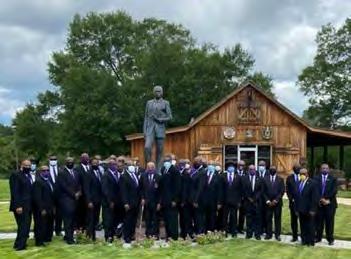
Omega Psi Phi is the first fraternal organization founded at a historically black university.


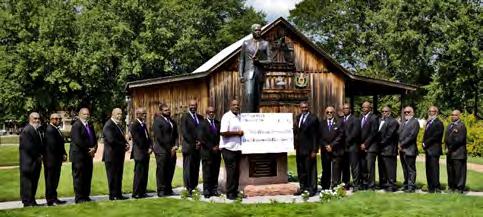
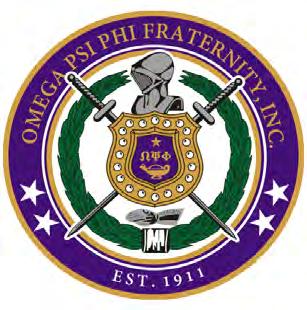
Gamma Chapter, the third chapter established by Omega Psi Phi Fraternity, Inc., was chartered in 1916 as a city wide Intermediate Chapter within the First District (New England Region). Its membership comprises college-edu cated men from various educational institutions through out the city of Boston; these institutions include, but are not limited to: Boston University, Boston College, Emer son College, Harvard University, Massachusetts Institute of Technology (M.I.T.), Northeastern University, Tufts Uni versity, and UMass-Boston. While attending Bates Col lege, Benjamin E. Mays would take the train to Boston, MA while pledging Omega Psi Phi Fraternity, Inc. Mays would enter the fraternity at Gamma chapter on June 5th 1919. Mays would later be one of the founding members of Psi Chapter of Omega Psi Phi Fraternity, Inc. This chap
ter has been on the campus of Morehouse College since 1921.
Dr. Mays was a lifelong proud and committed Omega Man.
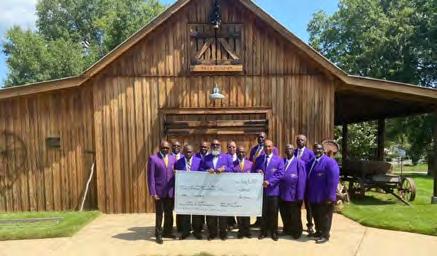

The men of Omega Psi Phi Fraternity, Inc. have been com mitted supporters of the GLEAMNS Dr. Benjamin E. Mays Historical Preservation Site since its inception. They have exemplified their core principals (Manhood, Scholarship, Perseverance and Uplift) during their decade of support and commitments to the Mays Site. Dr. Joseph Patton, retired CEO of GLEAMNS Human Resource Commission, the visionary and principal leader behind the establish ment of the Mays Site, is himself an Omega Man.
The men of Omega Psi Phi Fraternity, Inc. are working to design a granite piece to be the centerpiece of the Omega Psi Phi Fraternity, Inc. monument at the Mays Site. They are also working with Brick Markers, USA (West Palm Beach, FL) to finalize and customize the marketing pro gram for their brick paver project and fundraiser to build this monument at the Mays Site.
A native of Greenwood, SC, born on June 28, 1974, to the Reverend Furman Mitchell Miller, Jr. and Ms. Mary Alice Hentz. Grandson of Mr. Furman Miller, Sr. & Mrs. Ethel Backus Miller & Mr. John Alex Hentz, Sr. & Alice Moriah Green Hentz. Dr. DeQuincy Hentz was a Social Justice Leader, Clinician, Historian, Writer, and Poet, who fought for the common man and woman, for children, against inequity and racism.
Dr. Hentz graduated from Greenwood High School in May of 1992, president of his senior class.
Dr. Hentz found himself preaching and doing some oratory during his teen years. He started several organizations. Positive Brotherhood, an organization for high school males who were interested in brotherhood and social justice leadership. The Aframhis Club, a black history club on the campus. He was
Rev. Dr. DeQuincy Hentz is a native of Greenwood, SC whose life was greatly influenced by Dr. Mays. Dr. Mays influenced his decision to matriculate to Morehouse, to join Omega Psi Phi Fraternity, Inc., and to attend seminary at Howard University School of Divinity where Mays was Dean of the school from 1934-1940. He was a tremendous supporter of the Mays Site (attending every major event at the Site). There will eventually be a marker honoring him on Site as part of the future Ome ga Psi Phi Fraternity, Inc. Monument. His life and success embodies the extraordinary power Dr. Mays possessed to influence the lives of young men – even after Dr. Mays’s death.
also president of a GLEAMNS Human Resources Commission student organization called Free Enterprise. He also worked for the Department of Health and Social Services as a Peer Counselor during his senior year.
Dr. Hentz was a member of the 1996 Olympic Class of Morehouse College where he graduated Cum Laude and received a Bachelor of Arts Degree in Religion and History. In 1999, he received his Master of Divinity Degree from the Howard University School of Divinity. As a student at Howard, Dr. Hentz received the first Evans E. Crawford Preaching Award, which is given to the student who best displays the attributes of scholarly preaching. Upon his graduation, he was awarded the W.O. Carrington Preaching Award, which recognized him as the top preaching student of his graduating class. Dr. Hentz received his doctoral degree in family studies on May 5, 2018, from Eastern University in St. David’s Pennsylvania an American Baptist University where he defended his dissertation on “New Racism, Racial

Trauma, and Urban African American Father Involvement in the Post-Obama and Early Trump Age: The Black Church Responds.
Dr. Hentz was called to the pastorate of Shiloh in March 2005. He is the fifth Pastor in the 116- year history of the Shiloh Baptist Church of New Rochelle, New York for 15 years. Upon Dr. Hentz’s arrival to Shiloh in July 2005. Under his dynamic leadership, the church’s vision of a 40-unit Senior Housing complex has become real. The facility was completed, and residents started to occupy the building in January 2013. Dr. Hentz has also led Shiloh to add to the church campus a double-lot property located at 39 Kress Avenue.
On May 5, 2019, he started a second church, Family of God (FOG) Church, located in Cop-Op City the northeast section of the Bronx, New York City a vision he birthed more than ten years ago.
From 2000-2005 Dr. Hentz served as pastor of the historic Mt. Zion Baptist
Church of Woodlawn in Cincinnati, Ohio, in just five short years, he led the congregation to grow to more than 1100 members and expand its budget from $360,000 to over $1 million.
Dr. Hentz was an activist and leader on both a local and national scale. He was a leader of the “Enough is Enough” Campaign for Corporate Responsibility in Entertainment, a 15-month protest in New York City and Washington, D.C. that served to expose the problem of adult-themed content being marketed to children and youth. From 2004 to 2008, he served as a CoConvener for the Progressive National Baptist Convention’s Minister’s Seminar.
He served on the Executive Boards of the Interreligious Council of New Rochelle (Executive Vice President), the Christian Action Ministry, the New Rochelle Branch of the NAACP (Housing Committee Chair), and the New Rochelle Community Action Program. As a member of the New Rochelle Community Policing Committee and is a founding member of the New Rochelle Leaders for Justice Organization.

Yearly, Pastor Hentz provided the Benjamin Elijah Mays Scholarship for African American male graduates of New Rochelle High School
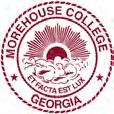
He was just 19 when he preached his first sermon at his home church, Second Mount Moriah Baptist, Greenwood, SC while he was a student at Morehouse College in Atlanta, GA. He became a student of religion beyond the classroom learning from preachers who visited Morehouse from around the country. Additionally, Pastor Hentz studied the greats such as Morehouse’s distinguished graduates Martin Luther
King Jr. and one of the institution’s longtime presidents was none other than King’s mentor, Greenwood County native Dr. Benjamin E. Mays.
Dr. Hentz was a gifted man of God who wrote, rapped, poeticized, preached, and strongly believed in teaching. He was frequently called upon to speak or preach for varying audiences across the nation near and far. He received numerous awards, accolades, and citations. Of special recognition, Dr. Hentz was inducted into the Martin Luther King Jr. Board of Preachers at Morehouse College in 2001 and was included as a contributor to a book honoring the golden (50th) anniversary of the Progressive National Baptist Convention, The Best of PNBC: The First 50 Years, Volume Three. Dr. Hentz was a member of the American Association for Marriage and Family Therapy, Morehouse College Alumni Association, and the Omega Psi Phi Fraternity Incorporated, Beta Alpha Alpha Chapter of Omega Psi Phi Fraternity, Inc. White Plains, NY.

This site honors the most worthy of citizens: a major theologian, an activist for human rights, a great teacher and mentor, a native of Ninety Six, SC, and our personal hero & candidate for the greatest of all South Carolinians.

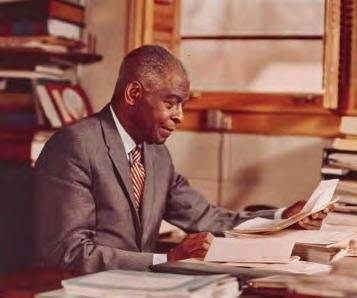


The afterglow of Reconstruction had almost faded by 1894. In that year Benjamin Elijah Mays was born, about four miles from the crossroads settlement of Rambo (now Epworth) and 10 miles from the village of Ninety Six. The rights of Black people – and especially the precious right to vote – had been seriously curtailed.
Some 30 years after the Civil War, most African Americans in the South depended on white landowners for employment as sharecroppers, tenant farmers, and wage laborers. The chains of racial segregation were fastened more securely each year.
Mays was tirelessly active in important organizations and movements that exemplify changes in the South from the turn of the century until his death in 1984. He served as vice president and on the board of directors of the National Association for the Advancement of Colored People and became a member of the Committee of 100, which formed and supported the more activist NAACP Legal Defense Fund and Education Fund. He was a guiding force in the Urban League and a host of other social justice and liberation organizations, such as the Southern Conference for Human Welfare, the American Crusade to End Lynching, the Southern Conference Educational Fund, Civil Rights Congresses, and the Peace Corps Advisory Committee.
In his best-known role, as president of Morehouse College from 1940-1967, Dr. Mays transformed a struggling historically Black college into perhaps the most prestigious AfroAmerican institution of higher learning. In that office he trained and inspired a brilliant cluster of leaders, of whom Martin Luther King, Jr. was the shining star. A 1971 article in the “Harvard Theological Review” pronounced Mays one of the three “Outstanding Black clergymen who have exerted a tremendous impact upon American life.”
Born during the heyday of “Pitchfork” Ben Tillman, Mays was a year old when South Carolina’s constitution disenfranchised African Americans. The following year, Plessy vs. Ferguson, the Supreme Court of the United States declared segregation legal.
Mays earliest memory was his first encounter with whites in the Phoenix Riot of 1898. A group of armed vigilantes galloped up and cursed Mays’ father, making him salute, remove his hat, and bow. At the Epworth post office in 1915, a white doctor cursed and struck Mays because he was dressed in clean, neat clothes and stood tall with pride. That summer, Mays became a Pullman porter and learned about Yankee racism: he bought a drink in Detroit, and when he returned the glass from which he had drunk, the white waiter smashed it.
IN 1926, SPEAKING AT BENEDICT COLLEGE, HE ANNOUNCED, “I CANNOT AND I WOULD NOT APOLOGIZE FOR BEING A NEGRO. WE HAVE A GREAT HISTORY: WE HAVE A GREATER FUTURE…WE HAVE RENDEZVOUS WITH AMERICA.” HE CONTINUED, “I WILL LIVE IN VAIN, IF I DO NOT LIVE AND SO ACT THAT YOU WILL BE FREER THAN I AM – FREER INTELLECTUALLY, FREER POLITICALLY, AND FREER ECONOMICALLY.”
IN 1957, HE SAID, “INHERENT IN SEGREGATION IS INJUSTICE; INHERENT IN SEGREGATION IS INEQUALITY. SEGREGATION SAYS TO EVERY WHITE CHILD IN THE SOUTH ‘THERE’S A MAN YOU CAN KICK AROUND’.”
IN THE 1960S, MAYS WAS CONSULTED AS A LONGTIME LEADER IN THE FIGHT AGAINST SEGREGATION. BY 1977, MAYS WAS AN ADVISOR AND CONFIDENT TO PRESIDENT JAMES EARL CARTER.
In 1980, when an African American congregation in Ninety Six renamed their church Mays’ United Methodist, he told me that he was more touched by that honor than by any other he had ever received.
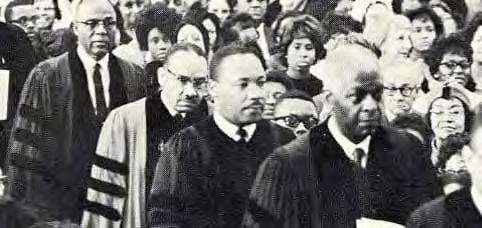

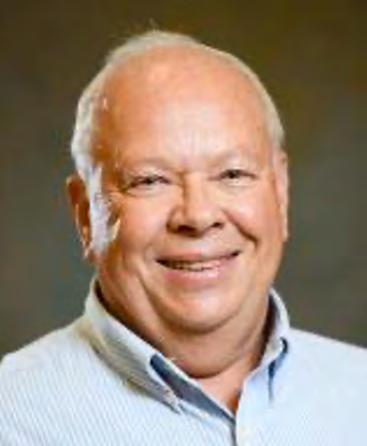
In July 1980 his portrait was hung in the South Carolina State House in Columbia: he was the second African American (after Mary McCloud Bethune) to be so honored. On that occasion Mays exulted, “I am no longer an alien in my native state, I feel as free as the wind that blows, free birds that fly.” He was also inducted into the South Carolina Hall of Fame.
In 2020, Springfield Elementary in Greenwood, SC was renamed the Dr. Benjamin E. Mays Elementary School.
The Mays Museum and Historical site has a seven-foot statue of Dr. Mays carrying a Bible. This is the only statue of a person in Greenwood County and is important because people do not learn their history from the books historians write, but from those public landmarks and statues that nations, states, and communities erect. Greenwood County is leading the way in providing alternative role models such as Dr. Mays who understood the humanity of his oppressors and stood against the grain to dismantle segregation and inequality.
Mays was devoted and loyal to family, friends, and institutions. He always returned to Ninety Six for family reunions, celebrations, and funerals. He served loyally as president of the alumni association for South Carolina State University. A speaker at the 84th Founders Day said that Mays was “remembered in Orangeburg for his outstanding speeches at the annual Easter service held in the old White Hall campus for 25 years. This event drew a capacity audience each year.”
In 1953, the small country Black school in Pacolet adopted the name Benjamin E. Mays High School. The students vowed to have Benjamin E. Mays day each year in honor of the school’s namesake, and Mays never missed the day.
Orville Vernon Burton is the author of “In My Father’s House Are Many Mansions: Family and Community in Edgefield, South Carolina” (1985), “The Age of Lincoln” (2007), “Slavery in America” (2007), “Penn Center: A History Preserved,” and “Justice Deferred: Race and the Supreme Court” (2021). This article is excerpted from Dr. Burton’s Forward to Benjamin Mays’ Autobiography, “Born to Rebel” published by the University of Georgia Press.
This article is adopted from one of a series on “South Carolina and the U.S. Constitution,” made by the South Carolina Historical Society with funding from the South Carolina Humanities Council, a state program of the National Endowment for the Humanities, a Federal agency.
Before 500,000 could march on Washington D.C., before 30,000 could march from Selma, before there could be rebellion in Black America and renewal in the White Church, before SNCC could sit-in, before Stokely Carmichael could talk Black Power, before Martin Luther King, Jr., could dream, History had to take the flesh and form of a certain black man who was bold enough, wise enough and selfless enough to assume the awesome responsibility of preparing the ground for a harvest, the fruits of which they would probably never taste themselves.
OF THE HANDFUL OF MEN called by History to this delicate and dangerous task, none tilled more ground or harvested more bountiful crop than Benjamin Eli jah Mays, a lean, beautifully black preacher-prophet who served as School Master of the Move
ment during a ministry of man hood that has spanned some 57 years, 27 of which were spent as president of Atlanta’s prestigious Morehouse College. During this period Mays, who is now 83 and president of the Atlanta Board of Education, helped to lay the foun dation for the new world of Black and White Americas.

Master of a variety of roles (teach er, preacher, scholar, author, newspaper columnist, activist), Mays was enormously effective in the formative years of the Black Revolution in structures of pow er (executive committee of the World Council of Churches and International YMCA, president of the United Negro College Fund, vice-president and board mem ber of the NAACP). In these dif ferent roles, he had a direct and pervasive influence on the Black Church, the White Church, the Black college, the White college, and the emerging freedom move ment.
OF EQUAL AND PERHAPS GREATER IMPORTANCE WAS THE INFLUENCE THAT HE EXERTED ON EVENTS THROUGH GIFTED STUDENTS (MARTIN LUTHER KING, JR., JU
OF MAY’S INFLUENCE.
To these students and others who felt his influence indirectly, Mays was successful, above all else, in projecting an image of engaged, involved manhood. And this en ergizing image, imperious and de manding, spread in ever-widening circles, making disciples of Black men who never crossed Mays’s path, making debtors of White men who never heard his name. Samuel Dubois Cook, a former Mays student and the president of Dillard University, says “Mays’s genius was as an inspirer and mo tivator as well as a transformer of young men. With the possible exception of [Robert] Hutchins [University of Chicago], he had no peer among his contemporar ies as a schoolmaster. I rank him with America’s greatest educators, with William Ramsey Harper of the University of Chicago, Nicholas Murray Butler of Columbia, and Charles W. Eliot of Harvard.”
The world that created Mays and the great schoolmasters of

I AM CONVINCED THAT IT WOULD BE A GREAT WASTE OF TIME TO SHOW A PEOPLE OF INTIMIDATED SLAVES A DIFFERENT MANNER OF SPEAKING, A DIFFERENT MANNER OF GESTICULATING; BUT PERHAPS IT WOULD BE WORTHWHILE TO SHOW THEM A DIFFERENT WAY OF LIVING. NO WORD AND NO GESTURE CAN BE MORE PERSUASIVE THAN THE LIFE, AND, IF NECESSARY, THE DEATH, OF A MAN WHO STRIVES TO BE FREE, LOYAL, JUST, SINCERE, DISINTERESTED; A MAN WHO SHOWS WHAT A MAN CAN BE.
--- IGNAZIO SILONEAmerica, the world of daily chapel and moral ex hortations and unlimited horizons and hopes, dis appeared with the electronic age. But Cook and others believe that Mays legacy is one of the great possessions of Black people and America. And he believes with others, including Hugh Gloster, Mays’s successor at Morehouse, that the Mays leg acy is critical at this juncture in America education and American life.
Far in Advance of his time, a rational man in an ir rational age, a Christian in a pre-Christian country, a tough black stone in a raging white fire, Mays sounded the preliminary chords of our era; and it is impossible to understand our era or the warning chords pointing to the future without some under standing of what he and the vanguard he repre sented dreamed, hoped and did.
Long before it was respectable or fashionable, Mays was calling the Christian Church to repentance and to the Cross.
BACK IN THE 20’S, LONG BEFORE IT WAS SAFE, he was preaching, teaching and acting out the allegedly modern role of the New Negro.
two centers of resistance around which the Black man’s will to survive was structured. The Black Church in particular was the embodiment of the Black man’s will to see and be, the expression, one might almost say, of his belief that his suffering had a meaning and would have an issue.
Benjamin Mays came out of that great tradition and he gave new dimensions to the tradition. In him, the Black reli gious impulse became conscious from the inside. Through him and in him, Black idealism reached new heights of vi sion and expression.
When Mays came on the scene, the great hammers of the Black tradition—the Black Church and the Black School— had lost much of their force and relevance. Many schools and many churches had become accommodating and ac commodative instruments of the status quo. By helping to renew the mission of these two vital institutions, Mays played a vital role in redi recting the historical wave of today.
LONG BEFORE BERKELEY, long before the crisis on American college campuses, he was pointing to the need for educational reforms and giving substance to his words by integrating Morehouse students into the decision-making apparatus of the College. Mays not only anticipated our era; he also risked place and position in unrelenting efforts to push major institutions into the modern world. One observes with interest that he organized his life around the Black Church and the Black School, the
Perceiving the hardening of the arteries of the Black Church and the increas ing secularization of the urbanized Black masses, Mays sounded a prophetic warning in his classic studies, The Negro’s God (1938) and The Negro’s Church (with J.W. Nicholson in 1933). Many Black ministers, he wrote, were poorly trained, and many Black churches encouraged so cially irrelevant patterns of escape. As dean of the School of Religion at Howard University (1934-1940) and as presi dent of Morehouse College (1940-1967), and as co-founder of the Interdenominational Theological Center, Mays was centrally important in helping to correct some of these de ficiencies. Martin Luther King, Jr., his most celebrated stu dent, and other Black ministers have said that Mays was

the major influence on their lives. King, for ex ample, had decided not to go into the ministry, which he believed was irrelevant and irrational. But he changed his mind after sitting for a few seasons at Mays’s feet. Mays’s sermons stimu lated him, intellectually and spiritually. In Mays, King saw his ideal of what he wanted “a real min ister to be.”
Mays also sowed seeds of renewal in the White church. As a speaker and preacher before thou sands of influential White groups and as a high official of the Federal Council of Churches and the World Council of Churches, he hammered away at the sins of the Church. Never one to bite his tongue or to gild the truth with polysyllabic place bos, he told the American Baptist Convention in 1951 that the “home Christian church is the most highly segregated institution in the United States.”
IT WAS DURING THIS PERIOD THAT MAYS MADE, FOR PERHAPS THE FIRST TIME, THE NOW-FAMOUS STATEMENT THE “ELEVEN O’CLOCK ON SUNDAY MORNING IS THE MOST SEGREGATED HOUR IN AMERICA.” (THE STATEMENT, HE SAYS, IS STILL TRUE.)
Of like tone and texture was his electrifying ad dress to the second General Assembly of the World Council of Churches in Evanston, Ill., in 1954. “Anyone,” he said, “who seeks shelter in the Bible for his defense of racial segregation in the church is living in a glass house which is neither rock-proof nor bullet-proof.”
No less instructive, and no less important, was Mays’s role in refurbishing the role of the Black college president. This has always been a difficult role, and it was even more difficult in the ‘30s and ‘40s, when Black college presidents had to satis fy conservative White public officials and philan thropists and restless and, yes, confused Black students. Finding themselves in an untenable position, in the crossfire of conservative White patrons and increasingly militant students, the best of the conservative college presidents of fered themselves as willing sacrifices, making conscious efforts to educate men and women who graduated despising them. The worst be
came servile suppliants who turned out timid carbon copies of themselves.
It is a measure of Mays’s greatness that he entirely transcended these categories. Morehouse students never thought of him in traditional terms because he was not a traditional Black college president. When the NAACP was America’s SNCC, Mays was a conspicuously active member. And when the interests of the White power structure clashed with the interests of Black people, he was found on the side of the mothers and fathers of his students. In the ‘40s, when all or almost all public doors in Atlanta were closed to Paul Robe son, he opened the doors of Sale Hall Chapel and gave Robeson an honorary degree. In the ‘60s, when the sitin controversy sent most college presidents scurrying for cover, Mays was one of the courageous few who said the students were right and deserved the support of their elders.

Against the traditional view of Black education as “ac commodation under protest,” Mays pressed a new conception of education as the liberation of power through the mastery of the accumulated lore of the ages. He conceived education broadly as an instru ment of social and personal renewal, and he anticipated Paulo Freire’s conception of education as “the practice of freedom.” What Martin Luther King, Jr. said about Morehouse was echoed by almost all of his contemporaries. “There was a freer atmosphere at More house,” King said, “and it was there that I had my frank first discussions on race. The pro fessors were not caught up in the clutches of state funds and could teach what they wanted with academ ic freedom. They encouraged us in a positive quest for solutions to racial ills and for the first time in my life, I realized that nobody was afraid.” (Emphasis supplied)
As an educator, Mays addressed himself to the major problems of oppression—manhood. He did not intend, he said, to make lawyers or doctors or teachers – he intended to make men. And he intended to make them the hard way. “He who starts behind in the race of life,” he used to say, time and time again, “must run faster or forever remain behind.”
A MAKER of history, Benjamin Mays embodies in the flesh a great part of the history of Black people. He was two when Plessy v. Ferguson pushed Blacks back towards slavery, fifteen when the NAACP was founded, twenty-two when Booker T. Washington died, sixty-six when the Supreme Court reversed Plessy and opened the age of desegrega tion.
To understand Mays, one must understand these historical markers and how they intersected with his personal history. Mays, for exam ple, was 19 before he had the privilege of attending school for a full year. He was 22 when he graduated from high school, 46 when he be came the president of Morehouse College, 52 when he was permitted to vote for the first time, 76 when he became the first Black president of the Atlanta Board of Education.
To understand Mays, one must see him against the background of these events. One must see him, above all else, against the distant backdrop of South Carolina, where he was born near the town of Nine ty-Six on August 1, 1894, the eighth child of two former slaves, Heze kiah Mays, a poor sharecropper, and his wife Louvenia. In that year in South Carolina, there were two Black representatives in the South Carolina legislature, and a Black man, George Washington Murray, rep resented South Carolina in the U.S. Congress. These men represented the last dying embers of the first Reconstruction; and soon after Mays drew his first breath, Blacks in South Carolina and elsewhere were driven from the polling booths and places of power.
In this environment, Mays came early to battle. One of his earliest memories is of a roving White mob looking for a Black to lynch, and he remember today that the environment was harsh and oppressive. “We never owned any land, never owned a home,” he says. “We never had much money, and were always in debt. It was poverty in a way, but we were never hungry. We always had enough to eat.”
God was real—and necessary—in the Mays household. Mrs. Mays was deeply religious and her son caught her spirit and relied heavenly on God and prayer. “I needed to rely on something,” he says now. When Mays was six years old, he started work, cleaning up around the house and making beds. At the age of 10, he was hard at work
in the fields, plowing, chopping cotton, spreading guano. Learning the alpha bet from his oldest sister, he entered the one-room colored school with a head start on his contemporaries. This made a big impression on the teacher who told Hezekiah and Louvenia Mays that their son was destined for great things.
WHEN MAYS FOLLOWED UP THIS INITIAL TRIUMPH BY RECITING THE BEATITUDES ON A CHILDREN’S DAY PROGRAM AT MOUNT ZION CHURCH, THE ELDERS DECIDED THAT THE MAYS BOY WAS “MARKED” AND WAS “GOING TO BE SOMEBODY.” SO IMPASSIONED WAS HIS RECITAL ON THAT FAR AWAY SUNDAY THAT OLD MEN AND WOMEN LUMBERED TO THEIR FEET, SCREAMING AND SHOUTING.
Looking on this early triumph more than a half century later, Mays said: “I can still see them today, waving hand kerchiefs, weeping, and shouting.” Poor though he was, Mays managed by economies and odd jobs, includ ing cleaning outhouses, to finish the high school program at South Caroli na State. He attended Virginia Union where he decided that he had to test his mind against the best White minds of the day. He applied for admission to several big Eastern schools and was rejected on racial grounds. (One of the major universities later awarded him an honorary doctorate.) In 1917, he was admitted to Bates College in Maine. Waiting tables, tending furnaces and running on the road as a Pullman por ter, he worked his way through Bates and later received M.A. and Ph.D. de grees at the University of Chicago. Af ter pastoring a church in Atlanta and teaching mathematics and English
IT MUST BE BORNE IN MIND THAT THE TRAGEDY OF LIFE DOESN’T LIE IN NOT REACHING YOUR GOAL. THE TRAGEDY LIES IN HAVING NO GOAL TO REACH. IT ISN’T A CALAMITY TO DIE WITH DREAMS UNFULFILLED, BUT IT IS A CALAMITY NOT TO DREAM. IT IS NOT A DISASTER TO BE UNABLE TO CAPTURE YOUR IDEAL, BUT IT IS A DISASTER TO HAVE NO IDEAL TO CAPTURE. IT IS NOT A DISGRACE NOT TO REACH THE STARS, BUT IT IS A DISGRACE TO HAVE NO STARS TO REACH FOR. NOT FAILURE, BUT LOW AIM IS SIN.
at Morehouse and South Carolina State, where he married Sadie Gray, Mays was appointed executive sec retary of the Tampa (Florida) Urban League. The rising young leader-ac tivist spent two years at this post be fore accepting a position as national student secretary of the YMCA. In 1934, he became dean of Howard University School of Religion.
As a Howard University dean and as a teacher and staff member of the interracial coalition movement, Mays was a leading member of the black vanguard which was charged with the historic mission of main taining pressure on every level while preparing Black people – through teaching, preaching, organizing, clar ifying, and defining – for a leap to a higher level of development. At that point, Black people did not have the means of going beyond passive, dig nified protests, and the struggle had to be carried on by vanguards and individual acts of resistance. One hears, now and then, snide remarks about this vanguard from people who, lacking a sense of history, add insult to plagiarism. The bold and honest men of that generation did all that was possible with the mate rial available, with the degree of con sciousness attained by the masses, under existing circumstances. If we can see more and say more today, it is because we are standing on their shoulders. It required more than one bigger Thomas to say “No,” it require more than one Black to die on South ern busses, it required more than one Benjamin Mays to spread ma nure in the fields of South Carolina before a whole people could cast off the grave clothes of slavery and push their way to the center of the nation al stage. The point here is that Black people in American never ceased to
struggle, never ceased to live in com bat. The will to dignity of Blacks was maintained in the unbroken, though not always visible, line – in the strug gle of isolated vanguards, in the un broken spirit of the masses, in the seminal contributions of individual pathfinders like Benjamin Mays.
While Mays and the vanguards strug gled, buying time and space, new powers fashioned themselves in the depth of the people and the arc of the world turned. In a perspectives arti cle, published in 1946, Mays warned that the time of retribution was near. The “pressure from below,” he said, “will increase rather than diminish in the postwar years….Increasingly and more vigorously, [the colored races of the world] will oppose exploita tion, segregation, and discrimination based on color and race.”
In 1940, on the eve of the new era, Benjamin E. Mays became president of Morehouse College. He was 46 years old.
Although Mays did not know it at the time, Morehouse, which had an inviable record of producing preachers and teachers, and college presidents, was in danger of losing both its identity and independence. The story of how Mays saved Morehouse, of how he triumphed over internal and external forces and gave the school a new birth of purpose, is beyond the scope of this article; and the point of these observations is to emphasize the spirit of independence that motivated the man. “If Morehouse is not good enough for anybody,” he said at the beginning, “it’s not good enough for Negroes.”
It was this spirit that endeared him to generations of students who entered Morehouse in the 1940s and 50s. Although he taught no classes, his spirit permeated the campus, and students made a point of catching his now-famous Tuesday morning Chapel talks. Week after week, Tuesday after Tuesday, for 27 years he preached engagement, responsibility and stewardship. Education, he said, was an obligation, not privilege. One was obliged, he said, to put ones theoretical knowledge at the disposal of people.
In this effort, the man Morehouse students called “Buck Benny” was engaged in total war against a system of ideas and values that had wormed its way into the neurons of his students and did not cease to destroy them, even while they slept. Mays wanted to “invent souls,” to use Cesaire’s beautiful phrase. He wanted to root out the weaknesses
“IT WILL NOT BE SUFFICIENT FOR MOREHOUSE COLLEGE, FOR ANY COLLEGE, FOR THAT MATTER, TO PRODUCE CLEVER GRADUATES, MEN FLUENT IN SPEECH AND ABLE TO ARGUE THEIR WAY THROUGH; BUT RATHER HONEST MEN, MEN WHO CAN BE TRUSTED IN PUBLIC AND PRIVATE – MEN WHO ARE SENSITIVE TO THE WRITINGS, THE SUFFERINGS, AND THE INJUSTICES OF SOCIETY AND WHO ARE WILLING TO ACCEPT RESPONSIBILITY FOR CORRECTING THE ILLS.”
-BENJAMIN E. MAYS, RADIO ADDRESS, 1945
and evasions which were the heritage of three hundred years of spiritual and material oppression.
“If you are ignorant,” he told his students, “the world is going to cheat you. If you are weak, the world is going to kick you. If you are a coward, the world is going to keep you running.”
Strong himself, Mays demanded strength from his students. He had developed early in life, he said, “a hard, maybe cruel, certainly an exacting and unrelenting philosophy,” which he applied to himself, to his students, and to all mankind. And the philosophy was simply this: “No person deserves to be congratulated unless he has done the best he could with the mental equipment he has under the existing circumstances.”
In concrete terms, Mays demanded a sense of mission. Every man, he said, is called of God to do his best in every situation and to make some unique and distinctive contribution, which only he can make. “Do whatever you do so well,” he used to say, “that no man living and no man yet unborn could do it better.”
At the same time and at first sight somewhat paradoxically, Mays said that knowledge was not enough. The Word was useful and even necessary, but greater than the Word was the deed. How many times, how many days, how many Tuesdays did he challenge his students with the stern hard words of John Drinkwater:

KNOWLEDGE WE ASK NOT— KNOWLEDGE THOU HAS LENT, BUT, LORD, THE WILL— THERE LIES OUR BITTER NEED, GIVE US TO BUILD ABOVE THE DEEP INTENT TO DEED, THE DEED.
Freedom is hard. Benjamin Mays understood that. There were no excuses and no hiding places in the world. The greatest crime was to give up; the greatest sin was to “aim low.”
A witness for freedom, and a model of freedom. Mays created a climate of freedom which bore fruit. It is no accident that a disproportionately large number of his students went on to make their mark as college presidents, lawyers, doctors, teachers, Ph.D.’s and hell-raisers. It is no accident that a disproportionately large number of his students and disciples played prominent roles in the Freedom movement.
Throughout this period and on into the ‘70s, Mays remained on the battle line, preaching the acceptable year of the Lord. He was honored repeatedly in these years. Presidents Kennedy and Johnson appointed him to various commissions and delegations. In 1963, he was appointed by President Kennedy to the official U.S. Delegation to the funeral of Pope John. On another occasion, he was considered for the position of Ambassador to Israel. Press reports of the time said he declined the honor, but Mays says: “I was never offered the position. One could hardly turn down the President of the United States. When people came here to feel me out, I expressed a desire to stay in the field of education, and I never heard any more about it. Much later, when Sadie and I were going through a reception line at the White House, President Kennedy stopped me and announced:
Either through a misunderstanding or a high er understanding of fate, Mays remained at the helm of Morehouse until his retirement in in 1967 on the 100th anniversary of the in stitution. He was succeeded by Hugh Gloster, a creative Morehouse graduate, and was named president-emeritus. Two years later, he was elected to the Atlanta Board of Educa tion. Since 1970, he has been president of the


“I WANTED TO MAKE AN AMBASSADOR OUT OF THIS MAN, BUT HE PREFERRED TO BE AN EDUCATOR.”DR. MAYS WITH PRESIDENT CARTER DELIVERING REV. DR. KING’S EULOGY 2
Board and last October, at the age of 83, he was reelected to his third term. By all accounts, he has been an effective and influential leader of the Board. Richard Raymer, a White member of the Board, said that “during his leadership, the Board has dealt successfully with a num ber of explosive issues, including labor problems and desegregation. Under his leadership, the Board successfully negotiated settlements that have made Atlanta a better city to live in. There are five Blacks and four Whites on the board, but there has not been a single instance where the Board divided on racial lines. We’ve divided along sexual lines (there are five women and four men on the Board) but never on racial lines. This is a tribute to his leadership. He is the most widely re spected citizen in Atlanta today. If you took a poll, he would come out on top. He is the kind of man we would like our kids to grow up to be.”
THE KIND OF WORK UNCLE BEN DOES IS NOT WHAT YOU WOULD CALL WORK, BECAUSE HE ENJOYS DOING IT AND IS SO USED TO IT THAT IT IS KIND OF RELAXATION FOR HIM. IT’S LIKE A LONG-DISTANCE RUNNER. THE FIRST ONE OR TWO MILES ARE HARD, BUT THE NEXT THREE HE JUST TAKES IN STRIDE.
--DWIGHT JEROME POWELL, NEPHEW
bothers him a little, but it doesn’t keep him from running the race he has decid ed to run. It is interesting to note, howev er, that he told a friend once that when he was retired from Morehouse he was going to buy a red convertible and drive down Auburn Avenue with the top down and his collar unbuttoned. He didn’t buy the red convertible, but he did change his wardrobe, buying a number of colorful sports coats.
The plaid coats and colorful ties are new, but the central thrust of the man’s life is old and unvarying. Work is still his pas sion.
HE IS 83 NOW.
The friends of his 20s, the friends of his 40s, the friends of his 60s: almost all of them are dead and gone. The great and gracious Sadie Mays, the companion of his years, is gone, buried nine years ago in the middle of his first campaign for the Board of Education. People, princi palities, institutions, laws have lived and died, but Benjamin Mays, the long distance runner, is still on the track and on the case, maintaining a schedule that would kill a man half his age, speaking three and four times a month, writing books and articles and newspaper columns, pursuing the high sharp exhilarating edge of what he likes call “the unattainable goal.” He rises early in his comfortable Southwest Atlan ta home, and he goes to bed late. He is attended by a house keeper and is surrounded by in-laws and relatives, but there are few frills, few diversions in his life. Such a man, as can be imagined, is somewhat intimidating. And although he has a sense of humor and a proper ap preciation of baseball averages and a glass of Bristol Cream Sherry, he is often invited out for evenings of fun and frivolity. One imagines that
“CHASING IDEAS, BUILDING AIR CASTLES, GRASPING AFTER THE MOON, REACHING FOR THE STARS [HIS WORK] “: THESE ARE HIS DIVERSIONS. TODAY, AS ALWAYS, HE BELIEVES, WITH KANT, THAT MORAL WORTH, NOT HAPPINESS, IS THE GOAL OF LIFE. “DIE YOUNG, DIE MIDDLE AGED, DIE OLD,” HE HAS SAID, “(BUT) REMEMBER THAT THE MOST USEFUL LIFE AND THE MOST ABUNDANT LIFE IS THE ONE IN WHICH ONE DREAMS DREAMS THAT WILL NEVER COMPLETELY COME TRUE, AND CHOOSES IDEAS THAT FOREVER BECKON BUT FOREVER ELUDE. TO SEEK A GOAL THAT IS WORTHY, SO ALLEMBRACING, SO ALL-CONSUMING, AND SO CHALLENGING THAT ONE CAN NEVER COMPLETELY OBTAIN IT, IS THE LIFE MAGNIFICENT; IT IS THE ONLY LIFE WORTH LIVING.”
This is the life—hard, demanding, mag nificent—that Benjamin E. Mays has lived, and is living. And in the 83 year of that life, he looked back through the haze of the years and said that he was “satisfied but not complacent” about the changes he has witnessed in his days.
“There is no doubt,” he said, “that the

Negro is a thousand times better off than he was at the turn of the century. There is no doubt that virtually every Black boy has a much better chance to get an education than I did…There is no doubt that we have made some progress in race relations, but you still have to keep your eyes on the struggle against racism in the world and the fact that what the Negro has gained he has gained through struggle, and through the courts, and through marching and boycotting.” Whet advice does he have for the young? His only advice is “the challenge that I accept for myself, to keep tiptoeing and never accept mediocrity as a goal.”
Originally Published in Ebony Magazine: December 1977
1. Two Presidents. Left to right: Benjamin Elijah Mays (1894-1984), president of Morehouse College in Atlanta, Georgia from 1940 to 1967; and Dr. David Dallas Jones (1887-1956) president of Bennett College from 1926 to 1955 in Greensboro, North Carolina, USA, on the Bennett College campus, circa 1954. Caption: “Mr. Mayes [sic]-Pres. of Morehouse, Pres. Jones.”
2. Dr. Benjamin E. Mays gave the eulogy for Rev. Dr. Martin Luther King, Jr. at an open-air service on the Morehouse campus. The memorial followed King’s funeral service at Ebenezer Baptist Church, where King had served as a co-pastor with his father.


Zeta Phi Beta Sorority, Inc.

Epsilon Psi Zeta Chapter of Greenwood, SC
to the GLEAMNS Dr. Benjamin E. Mays Historical Preservation Site on its 10th Anniversary. extends our warmest congratulation
Lerone Bennett, Jr Morehouse ‘49“The decision that finally led Martin Luther King, Jr. to that path (the ministry) was largely due to the example of Dr. Benjamin Mays, President of Morehouse College…from first to last, Dr. Mays took great interest in Martin”

The King Center holds in high esteem the life and legacy Dr. Benjamin E. Mays, mentor and eulogist of Dr. Martin Luther King, Jr., and celebrates the 10th anniversary of the GLEAMNS Dr. Benjamin E. Mays Historical Preservation Site.
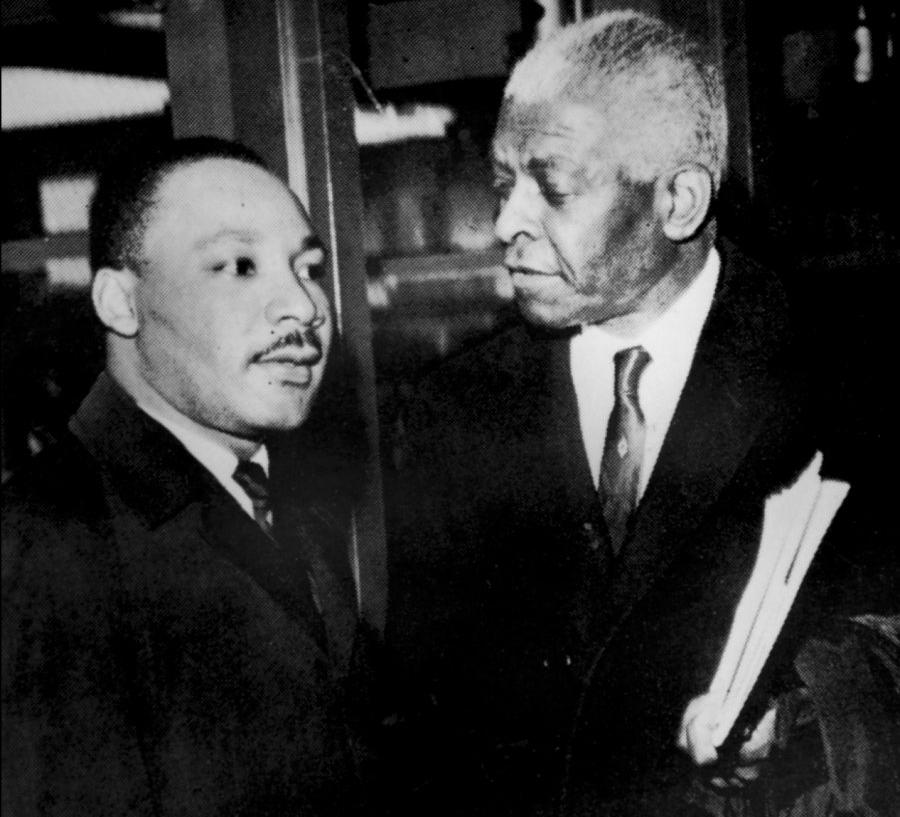

“The test of good religion IS NOT HOW WE TREAT OUR PEERS AND THOSE ABOVE US, BUT HOW WE TREAT THOSE BENEATH US, not how we treat the man highest up, but how we treat the man farthest down…the real test of my religion would be how I treat the man who has nothing to give me – no money, no social prestige, no honors. Not how I treat the educated, but how I treat the man who can’t write his name.”
- Dr. Benjamin E. MaysWe are grateful for the vision, leadership and dedication of the former and current directors of the Mays Site, Dr. Joseph Patton, Mr. Loy Sartin, and Mr. Chris Thomas.
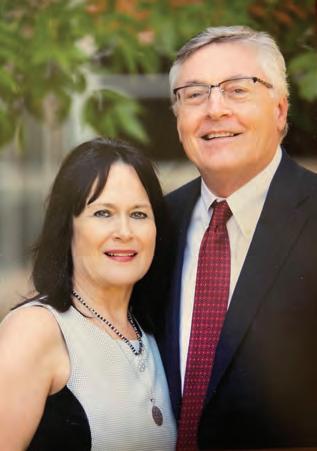
Rev. Doug and Sa y Kauffmann
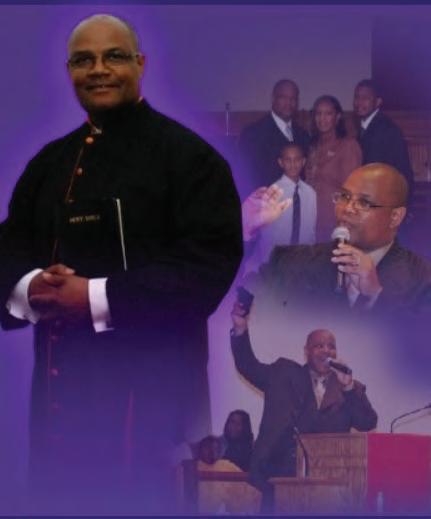









This paper was prepared for use by GLEAMNS HRC/ Benjamin E. Mays Historic Preservation Site at the request of Loy Sartin, Curator Emeritus, and Christopher B. Thomas, Director, GLEAMNS HRC/Dr. Benjamin E. Mays Historical Site
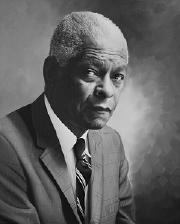

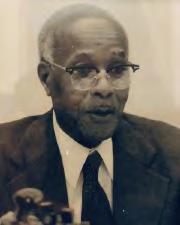

This paper describes how Dr. Benjamin Elijah Mays and Dr. Theodore Roosevelt Pinckney met in undergraduate school and remained friends for the rest of their lives. The paper chiefly proceeds along a chrono logical order. Unfortunately, the author had not met Dr. Mays, or if it happened, it was at an age where the author was under the age of ten. Additionally, the Pinckney family rarely discussed the relevance of the many people the Pinckneys knew and the many historical incidents oc curring concurrently with the lives of the Pinckney family because the Pinckneys viewed those events as personal experiences and not pub lic experiences. This includes the friendship Dr. Pinckney had with Dr. Mays, the man who mentored the Rev. Dr. Martin Luther King, Jr. Dr. Mays and Dr. Pinckney were friends. Their friendship was cherished, and their relationship was not put on display for public consumption. Therefore, the relevance of who they were and what they accomplished did not become apparent until the author explored Pinckney family history and genealogy. Fortunately, documentation exists. These documents are primarily correspondence between Dr. Mays and Dr. Pinckney. However, some correspondence included in this paper was between the doctors and their spouses, and between the doctors and family members of the doctors.
The pictures shown are the senior class pictures of Benjamin E. Mays, A.B. 1920 (left), and Theodore Roosevelt Pinckney, B.S. 1923 (right) from Bates College, Lewiston, Maine. At the GLEAMNS Benjamin E. Mays Historical Preservation Site, within the family house where Mays was born, are many pictures of prominent men and women who lived during the time young Mays would have lived in the home. This paper mentions two: President William McKinley and Paul Laurence Dunbar.
Be sure to look for their pictures as you explore the house.
Excerpts from those documents will be inter woven with the stories remembered, primarily in the later portion of this paper. Those stories are given a more worldly perspective specifical ly for those who tour the Dr. Benjamin E. Mays Historic Preservation Site. It should help you become more familiar with who Dr. Benjamin Elijah Mays was and who his lifelong friend, Dr. Theodore Roosevelt Pinckney, was. Thus, this paper attempts to show how the two men and their families maintained their friendship established from their time in undergraduate school which started one hundred years ago in 1920.
Benjamin Elijah Mays and Theodore Roosevelt Pinckney came from different backgrounds. The first time they met was in Bates College in Lewiston, Maine. But this author believes these two young men were each shaped by two different childhood events that involved their respective fathers. Events that would shape their lives.
This story will begin with the fathers of Ben jamin and Theodore. Benjamin’s father was Hezekiah Mays. Theodore’s father was Henry Pinckney. Both Hezekiah and Henry were born in South Carolina. Both Hezekiah and Henry were less than ten years old in 1865 when the Civil War ended. However, they lived in differ ent parts of South Carolina facing different challenges.
Benjamin E. Mays’s father, Hezekiah Mays, was born enslaved on Sunday, October 5, 1856, in South Carolina.1 Hezekiah Mays survived en slavement perhaps by developing a survival skill to deal with white men. Did skill become an instinct that Hezekiah carried within him for the rest of his life?
Years later as an adult, as a father, a few years after the birth of Benjamin, Hezekiah’s surviv al instinct may have displayed itself in front of Benjamin, who may never have seen this side of his father. But this manifestation turned out to be pivotable for Benjamin a.k.a. “Bennie” who never forgot that day.
“I know now that they were one of the mobs associated with the infamous Phoenix Riot which be gan in Greenwood County, South Carolina, on November 8, 1898, and spread terror throughout the countryside for many days thereafter. My oldest sister, Susie, tells me, and newspaper reports of that period reveal, that sever al Negroes were lynched on the ninth and others on subsequent days.
“That mob is my earliest memory.”2

Father and son were truly lucky to survive that encounter associated with the infamous Phoenix Elec tion Riot. But how did his father’s survival instinct effect young Ben nie? Young Bennie’s eyes took in what those white men did to his father. Was this the initial spark of rebellion for young Bennie? Perhaps this is the reason why his autobiography would be titled, Born to Rebel: An Autobiography by Benjamin E. Mays.3
Bennie’s mother, Louvenia Car
ter Mays, never learned to read or write. Bennie’s old est sister, Susie, was the one who began teaching him at home. She taught him the al phabet, how to count to one hundred and some reading. It wasn’t until Bennie was six years old that he attended the Brickhouse School, a oneroom schoolhouse where he trekked seven miles to at tend.4 (The schoolhouse that stands on this historic preser vation site is an African Amer ican schoolhouse originally located in Mays’s neighbor hood of Epworth in southeast Greenwood County, South Carolina.)
Despite quarrels with his fa ther, who insisted he stay on the farm and become a share cropper, Bennie found educa tion as the key for his future.
“My desire for an education was not only a dream but a goal that drove and prodded me, day and night. I left the farm not to escape it but to find my world, to become my self.”5
Mays graduated in 1916 as the class valedictorian at age 21 from racially segregated high school department of South Carolina State College located in Orangeburg, South Carolina.6
“I REMEMBER A CROWD OF WHITE MEN WHO RODE UP ON HORSEBACK WITH RIFLES ON THEIR SHOULDERS. I WAS WITH MY FATHER WHEN THEY RODE UP, AND I REMEMBER STARTING TO CRY. THEY CURSED MY FATHER, DREW THEIR GUNS AND MADE HIM SALUTE, MADE HIM TAKE OFF HIS HAT AND BOW DOWN TO THEM SEVERAL TIMES. THEN THEY RODE AWAY. I WAS NOT YET FIVE YEARS OLD, BUT I HAVE NEVER FORGOTTEN THEM.
Theodore R. Pinckney’s father, Henry Pinckney, was born in Charleston, South Carolina but no longer lived in South Carolina during the Phoenix Election Riot in 1898 or he may have read about it in the Charleston Daily Courier. Henry migrated from South Carolina to Albany, New York, where he met and married his first wife, Amelia.
Along the way, Henry worked as a hotel porter/porter for hire prior to employment as a messenger for three New York State governors, the first was Roswell P. Flower (1892-1894). Possibly a bittersweet time because Henry’s wife, Amelia, died on Saturday, July 21, 1894.7
Henry next worked for Frank S. Black (1895-1897). Henry fell in love with the former Miss Leonora Mazyck Emmerly, from Saint Augustine, Florida. They married and had their first child, Roswell Newcomb Pinckney, named after Governor Roswell P. Flower.
Then things changed while working for Governor Theodore Roosevelt (1899-1900).8 On Monday, March 4, 1901, Governor Roosevelt became Vice President for President William McKinley. Henry was a messenger for then Vice President Roosevelt.9 On Tuesday, September 10, 1901, Theodore Roosevelt Pinckney, was born. Then on Saturday, September 14, 1901, President McKinley died in Buffalo, New York, after getting shot nine days earlier and Roosevelt became president of the United States.10 Henry would soon become the White House Steward.
Henry moved Leonora and their sons from Albany, New York to the Washington, D.C. area after baby Teddy’s birth. A house had been built for the family circa 1905. (The Henry Pinckney House is a historic property listed on the Prince George’s County (MD) Historic Sites and District Plan.)11
Young Teddy knew his father had an important job working for the President of the United States. Young Teddy knew he was named after President Roosevelt. Young Teddy was even one of the youngest members of the original White House Gang, which was composed of the children of the president and the White House staff. His older brother, Roswell Pinckney, had already been seen nationwide playing with Quentin Roosevelt. The pictures of 4-year old Quentin and 5-year old Roswell were featured in the August 1902 Ladies Home Journal. (One picture is shown on this page.) The photographer was Frances Benjamin Johnston.12
According to a Sunday, December 17, 1905 Washington Post article:
“Henry Pinckney, who is down on the official roster as “Steward of the White House,” … is a colored man and won his present post as a result of the creditable record that he made when he served the Roosevelts in a similar capacity at Albany during Mr. Roosevelt’s term as governor of New York.”13
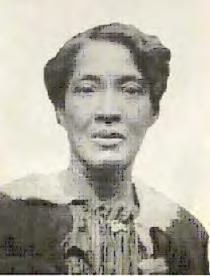
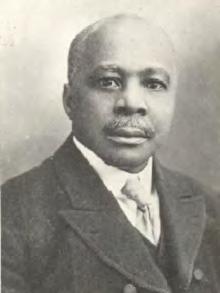
In another Washington Post article from Sunday, June 24, 1906, William K. Howard wrote:
“Every dealer in the market knows Henry Pinckney, the colored White House steward, and he generally gets what he wants…A good deal of tact has to be exercised by the dealers, especially when the steward from a foreign embassy makes demand for some tempting edible that has been reserved for the White House table….
“Although only about thirty years of age, Pinckney is a graduate of some of the most fashionable clubs of New York and Washington, and knows his business from A to Z….
“The White House steward’s knowledge of the culinary art is so extensive that he has entire command, and a large kitchen force works under his direction.”14
Henry Pinckney continued working in the White House when William Taft became president but held a different post.
These are the things young Teddy knew of his father. His father was an important, respected, and humble man who worked for the White House and the President of the United States. As a young boy, Teddy could imitate his father’s character. His father, who was his role model, who worked as a messenger in the White House until Wednesday, April 5, 1911, the day 9-year old Teddy saw his father die at home, an image that would stay with him. At age nine, young Teddy may not be as important or have earned the same respect as his father, but young Teddy could imitate his father’s humbleness.
Henry Pinckney was buried back in Albany, New York but the family stayed in the Washington, D.C. area where young Teddy became focused on his education. He would follow his older brother, Roswell, and attend the “Preparatory High School for Colored Youth” in Washington, D.C. The school was later named M Street High School only to be renamed again in 1916 as the “Paul Laurence Dunbar High School” after the acclaimed poet.15 Pinckney graduated from the school in 1919 and was off to college.
So here we have two young men entering Bates College in Lewiston, Maine. At the time of this writing there is no clear story on exactly how they met or under what circumstances but meet they did. As children, each boy had witnessed a different event that shaped their lives. Now, the two young college men aspired an education, possibly to heal their past.
Benjamin E. Mays was the senior classman, Class of 1920, and arrived first. As a young boy he felt the fire to rebel after seeing his sharecropper father humiliated and degraded by a white mob.
Theodore R. Pinckney hailed from the Class of 1923. He grew up remembering and following his father’s example. A father who not only humbly worked in the White House, but also was held in great esteem and respect by the U.S. President and by others from far and near. And when Henry Pinckney died, he died at home where young Teddy witnessed it.
Bates College was a vanguard institution regarding admitting Black students prior to the Emancipation Proclamation. Founded in 1855, the college was affiliated with the
“Free Will Baptist denomination, progressive, abolitionist, Baptist morals.”16
Oren B. Cheney, founder and first president of Bates College, 1855 to 1894, worked to make sure no restrictions on admitting students based on race entered the charter of the school. Clifton Daggett Gray, the third president of Bates College, presided from 1920 to 1944 during the time Bates’ debating team went international.17
Mays and Pinckney were participants in the Bates Debate Council during the early years of Gray’s administration. Both Mays and Pinckney were known for their oratory skills while attending the school. Mays became the first African American inducted into the national debate honor society, Delta Sigma Rho (DSR), during a national campaign by Bates College to eliminate the race-based membership. Written in the 1920 edition of “The Mirror,” the Bates College Yearbook, beside Mays’s senior picture was this description:
“Do you hear that rich mellow tone, that Southern dialect? Who can it be with that enchanting ring to his voice, that clear deliberate enunciation to his oratory. That’s Bennie Mays and say can’t he speak! If you hear him once you will always remember him.”18
The 1920 edition of “The Mirror” also described a newly formed organization called The Bates Forum, which not only filled a need at the college to promote intercollegiate debating and training of debaters, but also, was “composed of about thirty men and women at the three upper classes who are especially interested in public questions and
debating.”19
Mays was the president of The Bates Forum. Two topics The Bates Forum covered were: the “Deportation of Aliens,” and the “Restriction of Immigrants.” One hundred years later, these are still worthy debate topics. For The Bates Forum’s 1920 yearbook picture, Mays sat as its president in the front center chair.
As for Pinckney, while he worked on his B.S. degree, he participated in the Politics Club, the Editorial Board, the Student Board as well as participating in several other scholarly and athletic extracurricular organizations.20
On Sunday, April 15, 1923, Pinckney penned a handwritten letter on Bates College stationery to his mother. (See next page.):
“Once more Dunbar and D.C. receive a victory up in the wild woodlands of Maine. This time a colored fellow named T. R. Pinckney and from Dunbar High has been chosen as a member of the Bates debating team which is to debate against the team of Bowdoin College here in Lewiston on the tenth of May. At last after many efforts he is a varsity intercollegiate debater. Oh, boy. He says that he remembers how his Mother once looked at a picture of a Georgetown University debating team in the [Washington] “Star” and wished that he could be a debater. Now he is glad to tell her that he is one. He will be dolled up either in tuxedo or full dress evening suit looking as sharp as a tack. You know Bates must win this time. There will be about 2,000 people present if the attendance is as usual.”
The debate team did win. But possibly, more importantly, was the headline of the front page of the Friday, June 1, 1923 issue of “The Bates Student,” the school newspaper. It read, “Pinckney Winner in Senior Prize Oration Contest.” The article noted:
“Theodore R. Pinckney, of Washington, D.C. won the annual Senior Exhibition which was held in Hathorn Hall last Monday evening…21
“Mr. Pinckney’s oration was entitled “His Dual Personality,” and was concerned with the life problems of the negro. Coming as it did from a colored student, the speech carried remarkable genuineness and sincerity of feeling.”22
Written in the 1923 edition of “The Mirror” as part of his senior class picture description was: “A natural born orator, a man whose silvery tongue has held many an audience spell-bound.” His caption also read: “Teddy: Whose words all ears took captive.”23
Maybe Mays knew his friend Pinckney from the Class of 1923 could hold his own and even excel in showing who colored men were.

Mays graduated with his A.B. degree in 1920.24 He married Ellen Edith Harvin on Saturday, July 31, 1920 in Newport News, Elizabeth City/Warrick County, Virginia.25 They met while they both were students at South Carolina State College, and became engaged, but agreed not to marry until he graduated from Bates College. While he was at Bates College, she taught Home Economics at Morris College in Sumter, South Carolina. She died after a brief illness on Friday, February 2, 1923.26

Mays was ordained as a Baptist minister in 1921 and served as pastor at the Shiloh Baptist Church in Atlanta, Georgia until 1923. This was in addition to teaching at Morehouse College in Atlanta, Georgia from 1921 to 1924, and attending the
University of Chicago on a part-time basis.27
In 1923, Pinckney graduated from Bates College. The story in the Pinckney household went that Mays notified Pinckney about employment at Morehouse College. Was this a mentor telling a mentee of a good opportunity, or one friend telling another friend about an advantageous situation? Whichever it was, upon graduating from Bates College in 1923, Pinckney went to Morehouse College to teach.


Pinckney was an avid writer often writing his mother, his brother, or his two younger sisters, Mae Youngs Pinckney, and Leonora Emmerly Pinckney. While travelling to Morehouse for his new teaching assignment, Pinckney wrote his mother saying someone assumed he was a new Morehouse student. Unbeknownst to this stranger, 22-year-old Pinckney, standing 5’4½” tall, was a new Morehouse professor. He made no corrections.

In March 1925, Mays was awarded an M.A. in religious studies from the University of Chicago. From 1925 to 1926, Mays taught English at South Carolina State College in Orangeburg, South Carolina. This is where he met Miss Sadie Gray who also taught at South Carolina State College. Their courtship was kept quiet and they were married, on Monday, August 9, 1926. She soon stopped working at the college because there was a policy against husbands and wives working together on the faculty.28
Mays and Pinckney eventually left their teaching positions at Morehouse College for other prestigious endeavors. Pinckney left even though he had been cited in the 1927 edition of “Who’s Who in Colored America” for teaching biology at Morehouse. 29
Pinckney embarked to the University College of Medicine, Indianapolis, Indiana. In 1929, Pinckney was awarded his Medicinæ Doctor (MD) degree. His internship and residencies were served at Missouri’s Kansas City General Hospital, also known as General 2. General 2 was the hospital where African Americans were treated because the hospitals in Kansas City, Missouri were segregated, as it related to patient care. Notably, when Dr. Pinckney did arrive, General 2 had become the first public hospital in the United States operated entirely by African Americans.30
Dr. Pinckney met his wife, the former Miss Hermena Clay, at General 2, where she worked as an electrocardiogram (EKG) technician. When she was not working at General 2, she taught private lessons in piano. They were married on Sunday, July 3, 1932.31
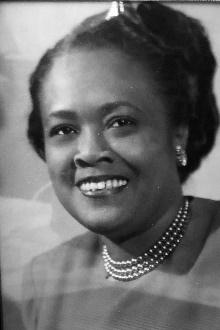
When Dr. Pinckney arrived in Washington, D.C., in 1933, it may have seemed like he was following the trail of Dr. Mays, except Dr. Pinckney was returning home to where his mother, siblings, and family resided bringing with him, Hermena, his wife. He was also starting his teaching position at Howard University Medical College and practicing medicine at Freedman’s Hospital, the predecessor to Howard University Hospital.32
In 1934 Mays was appointed Dean of the School of Religion at Howard University. In 1935 his Ph.D. was

conferred from the University of Chicago for the thesis, “The Idea of God in Contemporary Negro Literature,” making this one of the first ever dissertations outside the field of sociology to focus specifically on African American studies.33
This was also the year that the two families became even closer. On Christmas Day 1935, Dr. Pinckney’s only child was born; Dr. Mays would eventually become Theodore Clay Pinckney’s godfather.
“After six years at Howard, Mays accepted an offer in 1940 to become president of Morehouse College in Atlanta. For the next twenty-seven years Mays worked tirelessly at Morehouse…”34
In 1967, Dr. Mays retired from Morehouse College where he had been serving as president since 1940. The next year, the King family called on Dr. Mays to eulogize the Rev. Dr. Martin Luther King, Jr. on Tuesday, April 9, 1968. In Dr. Mays’s opening remarks, he stated:
“To be honored by being requested to give the eulogy at the funeral of Dr. Martin Luther King Jr. is like asking one to eulogize his deceased son — so close and so precious was he to me. Our friendship goes back to his student days at Morehouse. It is not an easy task; nevertheless, I accept it, with a sad heart and with full knowledge of my inadequacy to do justice to this man. It was my desire that if I predeceased Dr. King, he would pay tribute to me on my final day. It was his wish that if he predeceased me, I would deliver the homily at his funeral. Fate has decreed that I eulogize him. I wish it might have been otherwise; for, after all I am three score years and 10 and Martin Luther is dead at thirty-nine.”35
In 1969, Dr. Mays ran for an open seat on the Atlanta School Board and won the seat. In 1970, the board elected Dr. Mays as its president, the first African American president of the board. He served for almost 13 years, retiring in 1981.
Another accomplishment of 1970 was Dr. Mays finishing his autobiography, “Born to Rebel: An Autobiography.” The book has stood as an
invaluable contribution to the study of American race relations.”36

Dr. Pinckney practiced at Freedman’s Hospital. For thirty-seven years he was a clinical instructor at Howard University Medical College, teaching pharmacology and orthopedic surgery. He also had a private practice on Deane Avenue (renamed Nannie Helen Burroughs Avenue), in the northeast quadrant of Washington, D.C., serving the needs of African Americans. He even made house calls, carrying his black medical bag!
When the United States entered World War II, Dr. Pinckney served from 1942 to 1946 in the U.S. Army as a Medical Officer, rank of captain, General Surgery, and was awarded the Victory Medal and the American Campaign Medal. He was assigned as Assistant Chief of Surgical Service and Chief of Orthopedic Service at Tuskegee Army Airfield, Alabama. He later served as a major in the Air Force Reserve.37
The two doctors continued their friendship and, to a degree, they both achieved some high accolades, with Dr. Mays receiving international fame. Dr. Pinckney was awarded the Meritorious Public Service award by the city government of Washington, D.C. and was cited by Presidents Franklin D. Roosevelt, Harry S. Truman, Dwight D. Eisenhower, and John F. Kennedy for his service in the administration of the Selected Civil Service System.38
This next section provides a sampling of the correspondence the two doctors and their families had with each other over the years, often in brief letters, other times with a greeting card. Sometimes correspondence would be between Dr. Mays and Dr. Pinckney, or between Dr. and Mrs. Benjamin E. Mays and Dr. and Mrs. Theodore R. Pinckney. Other times, correspondence would take place between Dr. Mays and his godchild, Theodore C. Pinckney, such as the one that follows. The Pinckneys were also acquainted with Dr. Mays’s family living in the Washington, D.C. area. This provided another avenue for the families to mix.
In the following letter, Dr. Mays wrote to his godchild, Theodore C. Pinckney, on Wednesday, June 21, 1950, as his godson prepared to graduate from junior high school.


I was glad to get an invitation to your graduation and pleased to know that you are finishing junior high school. I feel confident that you did a good job and I will be watching your career as you continue your work in high school.
With kindest regards and best wishes to your parents, I am

Yours truly, Benjamin E. Mays President39
In another letter from that same year on Monday, December 11, 1950, Dr. Mays wrote to Dr. and Mrs. Theodore Pinckney.
Dear Friends:
It was grand seeing you and I am happy that we had an opportunity to have dinner with you and the fellowship with you. The only regret that I have is that the time was too short. Remember me kindly to my god son.
With kindest regards and best wishes for Christmas and the New Year, I am
Yours truly, Benjamin E. Mays”40
Dr. Mays showed his continued interest in his godson’s higher education pursuits as he prepared to graduate from Palmer Memorial Institute in 1953. Palmer Memorial Institute was a school for upper class African Americans. It was founded by Dr. Charlotte Hawkins Brown and she named it after Alice Freedman Palmer, the former president of Wellesley College. The school was in Sedalia, North Carolina near the campus of Bennett College in Greensboro, North Carolina.41
On Friday, May 22, 1953, Dr. Mays wrote to Dr. Pinckney.
Dear Theodore:
When I spoke at Bennett College in March I saw my god son and I told him to tell you to send him to Morehouse for his college work. I hope you will give consideration to this.
With kindest regards and best wishes, I am Yours truly, Benjamin E. Mays President42
On Friday, April 15, 1960, Dr. Mays wrote to Dr. Pinckney: Dear Theodore: I was very glad that I had a few brief moments with you when I passed through Washington on Wednesday. I was glad to see both of you looking so well. Sadie joins me in sending regards to both of you….
With kindest regards always, I am Sincerely yours, Benjamin E. Mays President43
But times were not always bright, and the correspondence was more heartfelt. Dr. Mays received a card of condolence to comfort him at the loss of his second wife, Sadie Gray Mays, from Theodore & Hermena Pinckney.)44
When Dr. Mays finished “Born to Rebel: An Autobiography” in 1970, it included this dedication
“In memory of Sadie. My devoted companion From August 9, 1926 Until her death, October 11, 1969.”45
Dr. Mays wrote a personal note to Dr. and Mrs. Theodore Roosevelt Pinckney when he signed a copy of his 1971 edition “Born to Rebel: An Autobiography” that he gave to them. Although he inadvertently spelled her first name as Hermenia instead of Hermena, the note read: To Theodore and Hermenia Friends of many years and in memory of Bates Benjamin E. Mays
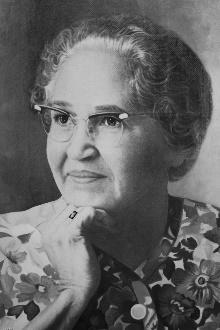
The rebel and the humble had other occasions to see each other as they aged. Sometimes plans were initiated, but because of circumstances, they could not follow through with those plans. For example, after receiving an invitation on Wednesday, July 5, 1978, for his godson’s second marriage to Maitzie Campbell Barnes,46 Dr. Mays wrote back to Dr. and Mrs. Theodore R. Pinckney on Thursday, July 20, 1978.

It is with deep regrets that I will not be able to be with you on Saturday, July 27, because of previous commitments…
Theodore, I was mighty glad that you could be at the Awards Dinner that was given for me on June 20.
With kindest regards and best wishes to you and the madam, I am
Your friend, Benjamin E. Mays47
In a handwritten note to Dr. Mays: Congratulations and best wishes as your years contributions and honors just keep rolling along. And sincere thanks for you
With love
From All Hermena and Theodore Pinckney48
Which was followed up with: Dear Hermena and Theodore:
It was thoughtful of you to remember me on my birthday. I had a lovely day. I turned the scales this year. Instead of my friends putting on a party for me, I entertained them.
I invited to lunch all teachers now in Atlanta whom I invited to Morehouse during my twentyseven years there. Sixty joined me at Paschal’s for a lovely affair. It was enjoyable for me to see many of my friends who helped me in building a great Morehouse.
Though they had been in Atlanta during this time, many of them had not seen each other for a long time. We had no head table and this made for better comradeship. You would have enjoyed observing this beautiful affair.
Again, I thank you for remembering me on August 1—my 85th birthday!
Sincerely yours, Benjamin E. Mays49
Dr. Mays wrote two personal notes when his autobiography, “Lord, The People Have Driven Me On,” was published. The first note went into the autobiography signed for “My Dear Friend, Dr. Theodore Pinckney.”

The second personal note went into a second copy of the autobiography, for which he wrote the following message.:
To: My God Son Theodore C. Pinckney
I hope your profession Is going well.
4-12-‘81 Benjamin E. Mays50
Dr. Pinckney died on Monday, July 5, 1982, at the age of 80, just two days after celebrating his 50th wedding anniversary with his wife, Hermena. did not live to see the date of their next anniversary because she died just seven months later, on Wednesday, February 2, 1983.
Theodore C. Pinckney sent his father’s funeral program to his godfather, Dr. Mays.51
It was almost two years later, on
Wednesday, March 28, 1984, when Dr. Mays died in Atlanta, at the age of 89.
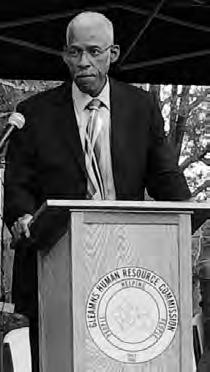
Their friendship did not end with their deaths. Rev. Dwight “Jerry” Powell, greatnephew of Dr. Mays, spoke at the dedication and unveiling of the statue of Dr. Benjamin Elijah Mays on Saturday, November 4, 2017. Among those who were in the audience was Rev. Powell’s wife, Terri, and the two youngest of their five children, Shannon and Lorran Powell, their daughters. The three of them were sitting with Kevin C. Pinckney, grandson of Dr. Pinckney and author of this paper. Unfortunately, the Powell’s older children, their sons, Ryan, Jonathan, and Evan Powell were unable to make it to the celebratory weekend.
It was no coincidence that Rev. Powell and Kevin C. Pinckney were there. They are friends to this day and fellow employees of the Library of Congress where two other grandchildren of Dr. Pinckney work: Derrick and Amy Barnes, Kevin C. Pinckney’s brother and sister-in-law.
ONE HUNDRED YEARS HAVE PASSED SINCE THE REBEL MET THE HUMBLE IN BATES COLLEGE. TWO YOUNG MEN WHO AFFIRM THE SCHOOL MOTTO. THE MOTTO OF BATES COLLEGE IS AMORE AC STUDIO, “WITH ARDOR AND DEVOTION.”
THE REBEL AND THE HUMBLE.
1. Find a Grave, database and images (https:// www.findagrave.com : accessed 06 June 2020), memorial page for Hezekiah Mays (5 Oct 1856–6 Jun 1938), Find a Grave Memorial no. 111736877, citing Old Mount Zion Baptist Church Cemetery, Ninety Six, Greenwood County, South Carolina, USA ; Maintained by RBA (contributor 47768839).
2. Benjamin E. Mays, Born to Rebel: An Autobiography by Benjamin E. Mays. (New York: Scribner), 1971, 1. 3. Ibid. 4. Ibid, 11. 5. Ibid, 36. 6. Dr. Benjamin E. Mays / Dr. Benjamin E. Mays - A Brief History. “Benjamin E. Mays High School: A Legacy to Keep, An Image to Uphold.” https:// www.atlantapublicschools.us/Page/14972 (accessed March 13, 2020).
7. Ancestry.com. Menands, New York, Albany Rural Cemetery Burial Cards, 1791-2011 [database online]. Provo, UT, USA: Ancestry.com Operations, Inc., 2011. Original data: Albany Rural Cemetery Internment Cards. Albany Rural Cemetery, Menands, New York.
8. “Obituary,” The New York Times. New York, N.Y. USA (April 7, 1911): 7. Ancestry.com.
9. Ancestry.com. U.S., Register of Civil, Military, and
Naval Service, 1863-1959 [database on-line]. Provo, UT, USA: Ancestry.com Operations, Inc., 2014. Original data: Department of Commerce and Labor, Bureau of the Census. Official Register of the United States, Containing a List of the Officers and Employees in the Civil, Military, and Naval Service. Digitized books (77 volumes). Oregon State Library, Salem, Oregon. (Accessed February 25, 2020.)
10. Wikipedia contributors, “First inauguration of Theodore Roosevelt,” Wikipedia, The Free Encyclopedia, https://en.wikipedia.org/w/index. php?title=First_inauguration_of_Theodore_ Roosevelt&oldid=957599748 (accessed June 6, 2020).
11. Prince George’s County Public Schools, “Doswell E. Brooks,” Celebrating African American History - Fairmount Heights Prince George’s County, Maryland. February 2006, 7. http://www. pgcps.org/~fmhts/Tribute_files/Fairmount%20 Heightsbooklet.pdf (accessed March 14, 2008).
12. Jacob A. Riis, 1902. Mrs. Roosevelt and Her Children. Ladies’ Home Journal, August, 5-6; Johnston, Frances Benjamin, photographer. Quentin Roosevelt and Roswell Newcomb Pinckney seated on steps. , ca. 1902. June 17. Photograph. https://www.loc.gov/ item/2001703926/.
13. “Christmas Marketing for the White House,” Washington Post, Washington, D.C. (December 17, 1905): 7. Ancestry.com. Historical Newspapers, Birth, Marriage, & Death Announcements, 1851-2003 [database on-line]. Provo, Utah, USA: The Generations Network, Inc., 2006 (accessed January 17, 2008).
14. William K. Howard, “White House Table Supplied with Best Market Affords, but Wholesomeness First Considered.” Washington Post, Washington, D.C. (June 24, 1906) [database on-line]. ProQuest. http://www.proquest.com/ (accessed February 26, 2008).
15. Cultural Tourism D.C. “Paul Laurence Dunbar High School,” African American Heritage Trail Database. 2007. http://www.culturaltourismdc. org/info-url3948/info-url_show.htm?doc_ id=204752&attrib_id=8030 (accessed March 15, 2008).
16. Bates College: 150 Years; Chapter 2: Race Relations on the Bates Campus. https://www. bates.edu/150-years/history/progressivetradition/chapter-2/ (accessed on December 13, 2019).


17. Bates College: Office of the President; Presidential History. https://www.bates.edu/ president/presidential-history/ (accessed on December 13, 2019).

STATUE OF DR. MAYS ANDKEVIN
C.PINCKNEY
THE STATUE IS LOCATED IN DR. MAYS’S HOMETOWN OF GREENWOOD, SOUTH CAROLINA
18. “Mirror, 1920: Free Download, Borrow, and Streaming.” Internet Archive, Bates College, 1 Jan. 1970, archive.org/details/mirror192000unse/ page/48.
19. “Mirror, 1920: Free Download, Borrow, and Streaming.” Internet Archive, Bates College, 1 Jan. 1970, archive.org/details/mirror192000unse/ page/94.
20. Bates College, “The Bates Student - volume 51 number 18 - June 1, 1923” (1923). The Bates Student. 226. https://scarab.bates.edu/bates_ student/226 (accessed November 7, 2017).
21. Hathorn Hall was named after Seth Hathorn and Mary Hathorn of Woolwich, Maine. They donated funds for the construction of the building which was listed on the National Register of Historic Places in 1970. Wikipedia contributors, “Hathorn Hall,” Wikipedia, The Free Encyclopedia, https:// en.wikipedia.org/w/index.php?title=Hathorn_ Hall&oldid=958553275 (accessed June 6, 2020).
22. Bates College, “The Bates Student - volume 51 number 18 - June 1, 1923” (1923). The Bates Student. 226.
23. “Mirror, 1923: Free Download, Borrow and Streaming.” Internet Archive, Bates College, 1 Jan 1970, archive.org/details/mirror192300unse/ page/62.
24. In 1920, Bates College used the Latin degree name “artium baccalaureus,” or A.B., for its students when Mays had his undergraduate degree in Liberal Arts conferred upon him. Each graduating student is identified by his or her name and the degree abbreviation conferred. Mays is found on page 48. “Mirror, 1920: Free Download, Borrow, and Streaming.” Internet Archive, Bates College, 1 Jan. 1970, archive.org/ details/mirror192000unse/page/48.
25. Newport News is within Elizabeth City County, Virginia. Elizabeth City County has had its boundaries merged with Warwick County, Virginia. The place of marriage has been mentioned each way in various resources. Wikipedia contributors, “Benjamin Mays,” Wikipedia, The Free Encyclopedia, https:// en.wikipedia.org/w/index.php?title=Benjamin_ Mays&oldid=942603958 (accessed February 27, 2020). Benjamin E. Mays, Dr. Benjamin E. Mays speaks: Representative Speeches of a Great American Orator, ed. Freddie C. Colston (Lanham, Maryland: University Press of America, 2002), 9.
26. Wikipedia contributors, “Benjamin Mays,” Wikipedia, The Free Encyclopedia, https:// en.wikipedia.org/w/index.php?title=Benjamin_ Mays&oldid=942603958 (accessed February 27, 2020).
27. Benjamin E. Mays, Dr. Benjamin E. Mays speaks: Representative Speeches of a Great American Orator, ed. Freddie C. Colston (Lanham, Maryland: University Press of America, 2002), 9.
28. Wikipedia contributors, “Benjamin Mays,”
Wikipedia, The Free Encyclopedia, https:// en.wikipedia.org/w/index.php?title=Benjamin_ Mays&oldid=942603958 (accessed February 27, 2020); Benjamin E. Mays, Dr. Benjamin E. Mays speaks: Representative Speeches of a Great American Orator, ed. Freddie C. Colston (Lanham, Maryland: University Press of America, 2002), 9.
29. “Who’s Who in Colored America.” Edited by Joseph J. Boris, Vol. 1, Who’s Who In Colored America Corp., New York, 1927, Vol. 1, p. 159.
30. “Separate but Equal?” KC History The Kansas City Public Library. (accessed March 2, 2020). https:// kchistory.org/week-kansas-city-history/separateequal.

31. Funeral program of Hermena Clay Pinckney, Tuesday, February 8, 1983.
32. Stolp-Smith, M. (2018, March 25) Freedmen’s Hospital/Howard University Hospital (1862– ),” last modified March 25, 2018, https://www. blackpast.org/african-american-history/ freedmen-s-hospital-howard-universityhospital-1862/ (accessed May 14, 2020).
33. Future Intellectuals: Benjamin E. Mays (AM 1925, PhD 1935) - Integrating the Life of the Mind - The University of Chicago Library. https://www.lib. uchicago.edu/collex/exhibits/integrating-lifemind/future-intellectuals-benjamin-e-mays-am1925-phd-1935/ (accessed on December 12, 2019.)
34. “Mays, Benjamin Elijah,” by Orville Vernon Burton and Matthew Cheney. South Carolina Encyclopedia. http://www.scencyclopedia.org/ sce/entries/maysbenjamin-elijah-2/ (accessed December 3, 2019). University of South Carolina, Institute for Southern Studies. Original Published Date August 10, 2016. Date of Last Update March 9, 2017.
35. Carter, L.E. (1998) Walking Integrity: Benjamin Elijah Mays, Mentor to Martin Luther King Jr. [Google Books version]. Retrieved from https:// books.google.com/books?id=kD6XZYVwvsQC (accessed June 6, 2020). P. 210.
36. “Mays, Benjamin Elijah,” by Orville Vernon Burton and Matthew Cheney. South Carolina Encyclopedia. http://www.scencyclopedia.org/ sce/entries/maysbenjamin- elijah-2/ (accessed December 3, 2019). University of South Carolina, Institute for Southern Studies. Original Published Date August 10, 2016. Date of Last Update March 9, 2017.
37. “Former Washington Physician Appointed Chief of Orthopedic Service At T. A. A. F.” Newspapers. com - The New York Age - 5 Jun 1943 - Page 12, www.newspapers.com/clip/40168843/the_new_ york_age/?xid=637.
38. “Dr. Theodore R. Pinckney, cited by four presidents,” Washington Times, July 9, 1982, 2B; Funeral program of Theodore Roosevelt Pinckney, M.D., Saturday, July 10, 1982.
39. Correspondence between Dr. Benjamin Elijah
Mays and Dr. Theodore Roosevelt Pinckney by date as found in Howard University Manuscripts Division. Staff, MSRC, “MAYS, Benjamin” (2015). Manuscript Division. 132. https://dh.howard. edu/finaid_manu/132. Series B: Box 223 - 37
Correspondence Folder 45 Pinckney, Theodore.
40. Ibid.
41. Wikipedia contributors, “Palmer Memorial Institute,” Wikipedia, The Free Encyclopedia, https://en.wikipedia. org/w/index.php?title=Palmer_Memorial_ Institute&oldid=915742652 (accessed March 5, 2020).
42. Correspondence between Dr. Benjamin Elijah Mays and Dr. Theodore Roosevelt Pinckney by date as found in Howard University Manuscripts Division. Staff, MSRC, “MAYS, Benjamin” (2015). Manuscript Division. 132. https://dh.howard. edu/finaid_manu/132. Series B: Box 223 - 37
Correspondence Folder 45 Pinckney, Theodore.
43. Ibid.
44. Correspondence between Dr. Benjamin Elijah Mays and Dr. Theodore Roosevelt Pinckney by date as found in Howard University Manuscripts Division. Staff, MSRC, “MAYS, Benjamin” (2015). Manuscript Division. 132. https://dh.howard. edu/finaid_manu/132. Series B: Box 223 - 37
Correspondence Folder 45 Pinckney, Theodore.
45. Benjamin E. Mays, Born to Rebel: An Autobiography by Benjamin E. Mays. (New York: Scribner), 1971.
46. Correspondence between Dr. Benjamin Elijah Mays and Dr. Theodore Roosevelt Pinckney by date as found in Howard University Manuscripts Division. Staff, MSRC, “MAYS, Benjamin” (2015). Manuscript Division. 132. https://dh.howard. edu/finaid_manu/132. Series B: Box 223 - 37
Correspondence Folder 45 Pinckney, Theodore.
47. Ibid.
48. Ibid.
49. Ibid.
50. Benjamin E. Mays, Lord, The People Have Driven Me On. (New York: Vantage Press), 1981.
51. Mays. Manuscript Division, 132, Box 223-37
Correspondence Folder 45 Pinckney
Family Photographs Courtesy of:
Mrs. Bernice Mays Perkins, Niece of Dr. Mays The Pinckney Family
Reverend Dwight “Jerry” Powell and the Powell Family
GLEAMNS HRC/Dr. Benjamin E. Mays Historic Preservation Site

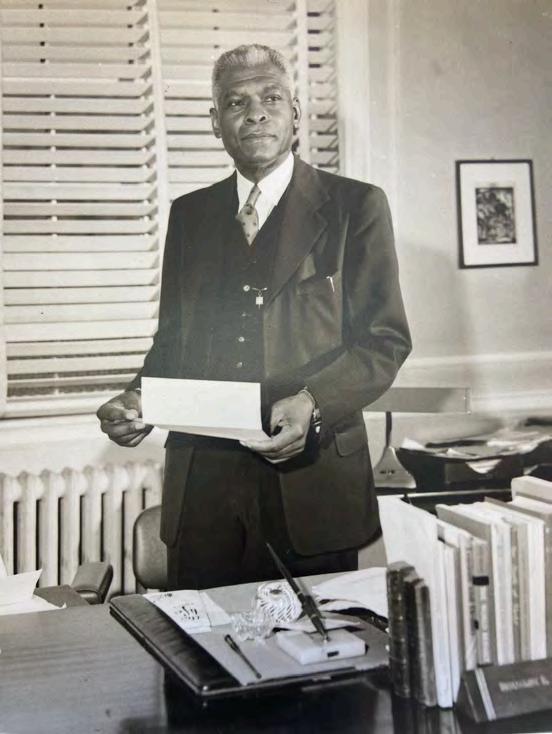


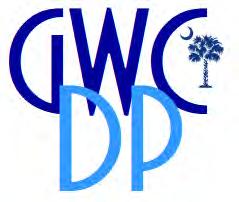



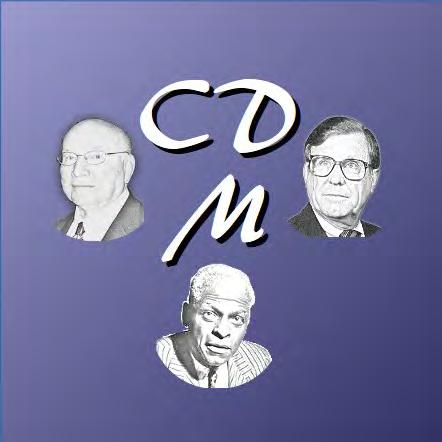



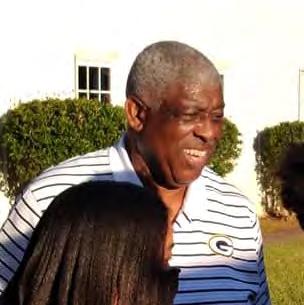



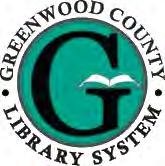













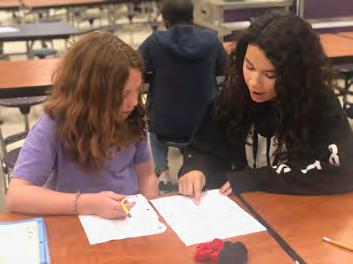

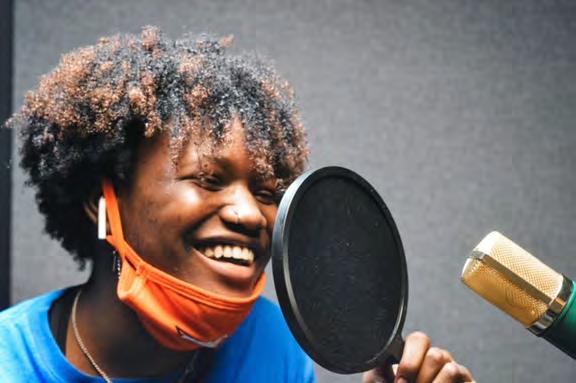
In June 1969 the foundation was established as a nonprofit philanthropic organization with a mission to “aid and promote such religious, charitable, scientific, literary, and educational purposes as may be in the furtherance of the public welfare or tend to promote the well-do ing or well-being of mankind.”

In 1988, under this broad charter, the Foundation made a long-term com mitment to help remedy the serious shortage of faculty of color in higher education through the Mellon Minority Undergraduate Fellowship (MMUF) program, as it was then known.
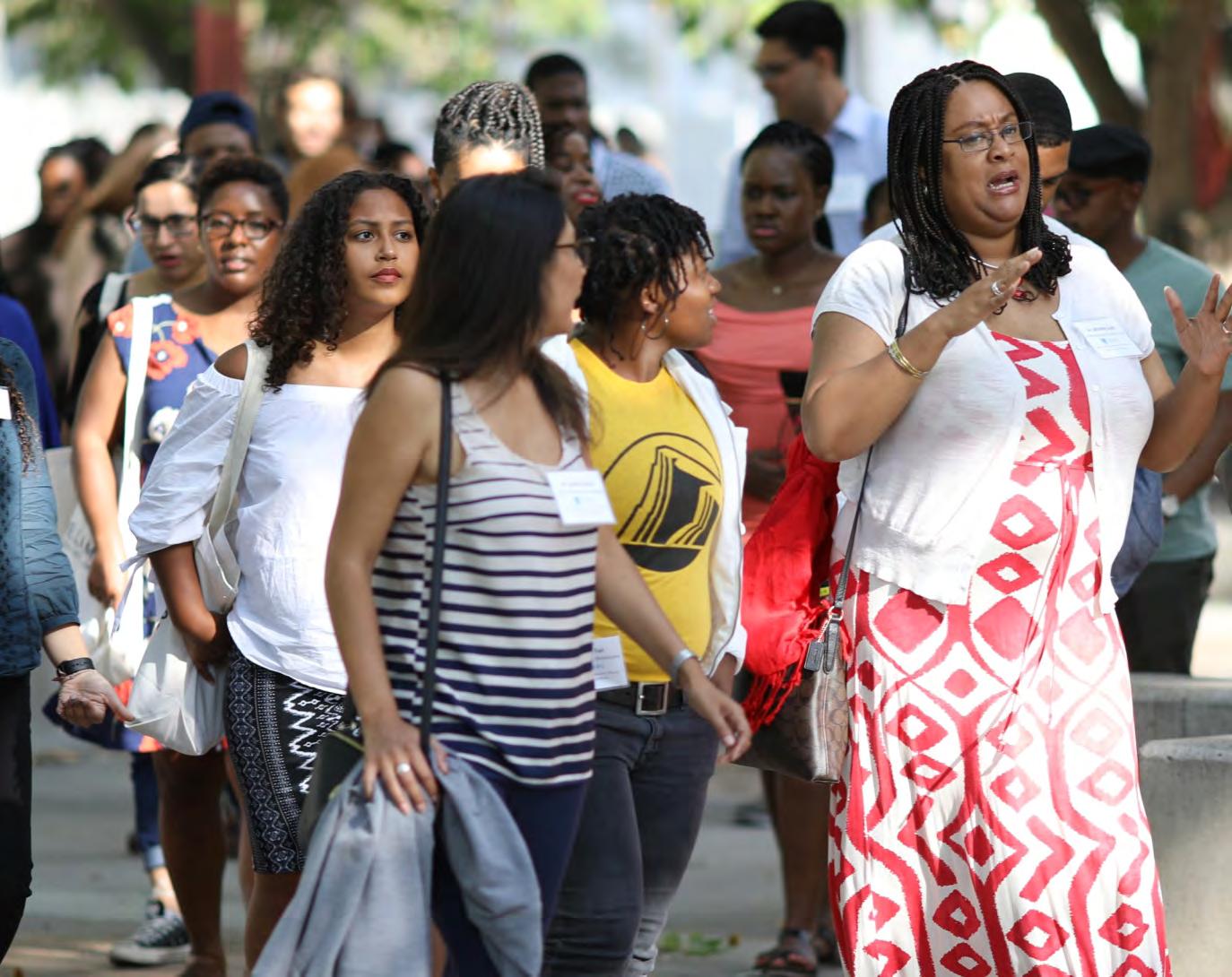
In 2003, the Foundation reaffirmed its commit ment to, and broadened the mission of, MMUF. The name of the program was changed to the Mellon Mays Undergraduate Fellowship Pro gram to symbolically connect the program’s mission to the stellar educational achieve ments of Dr. Benjamin E. Mays.
Addressing the problem of underrepresentation in the academy at the level of college and university faculties.
